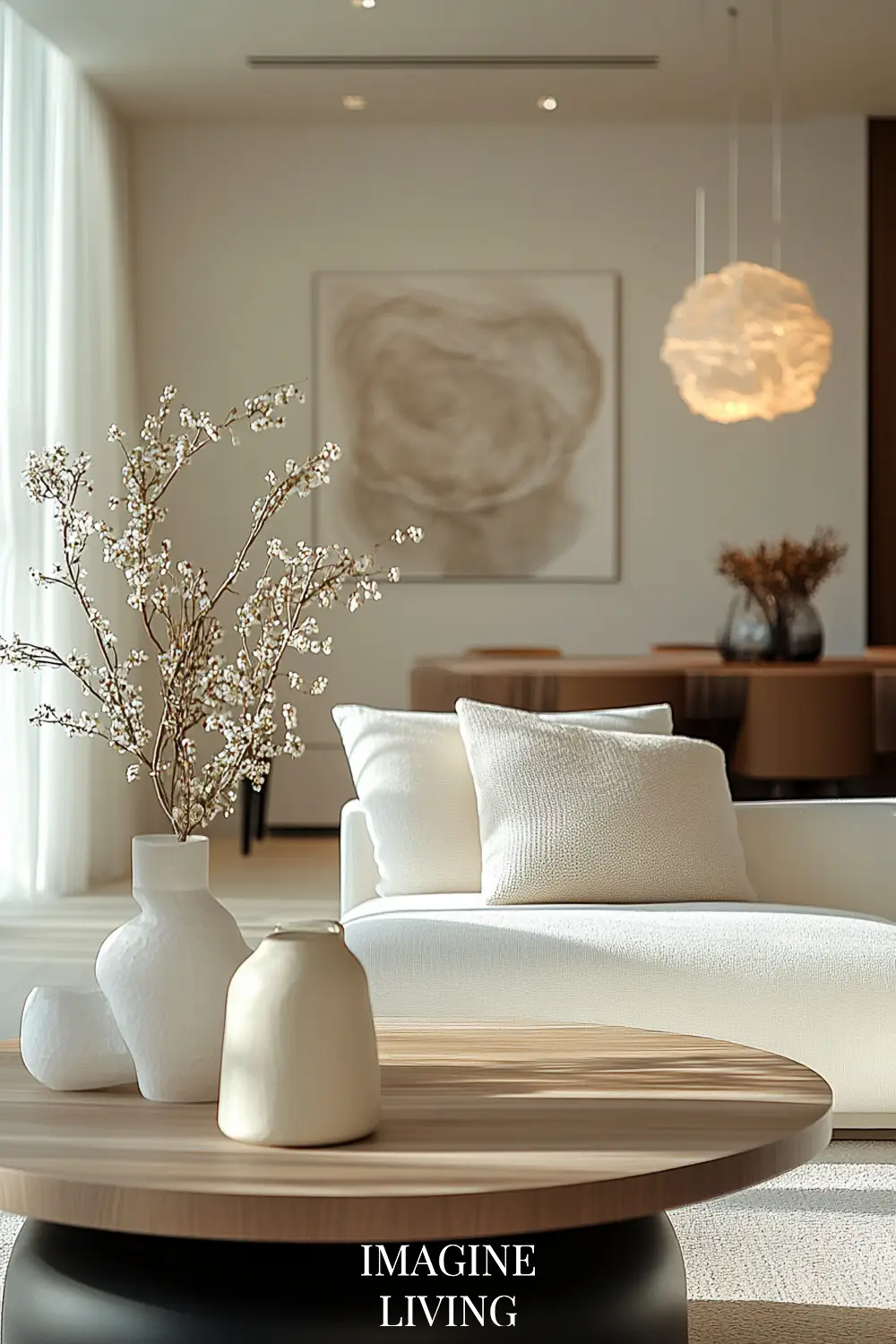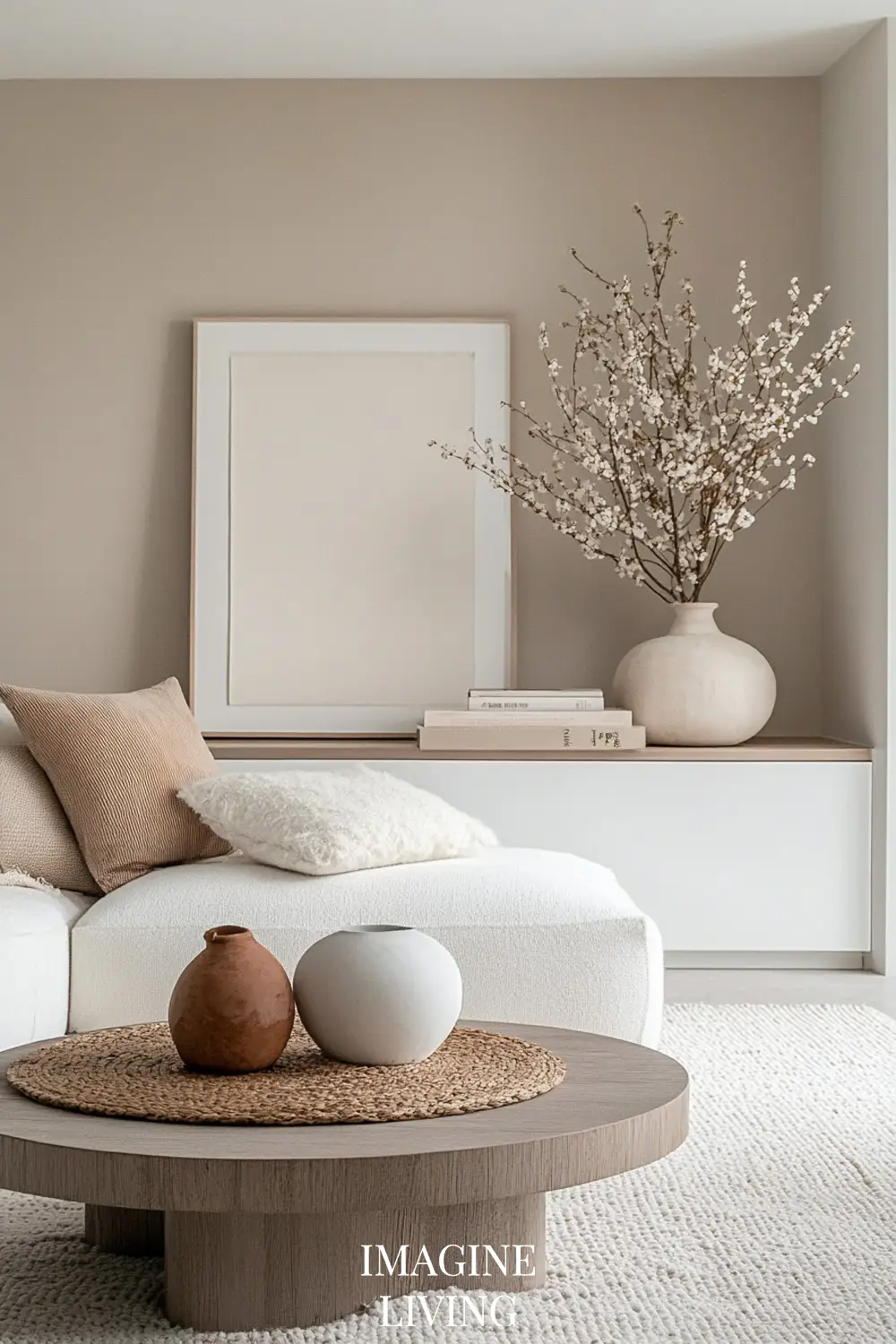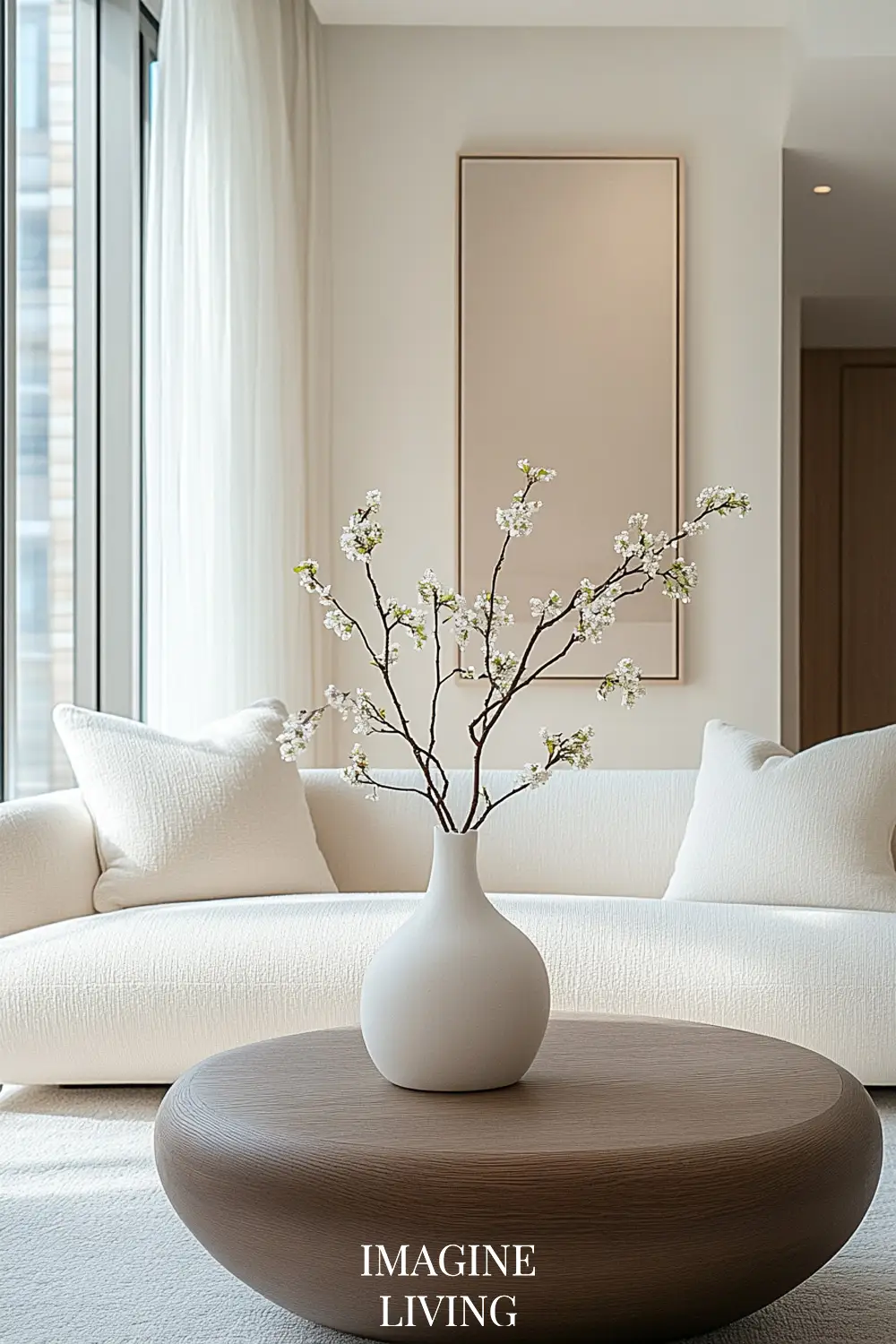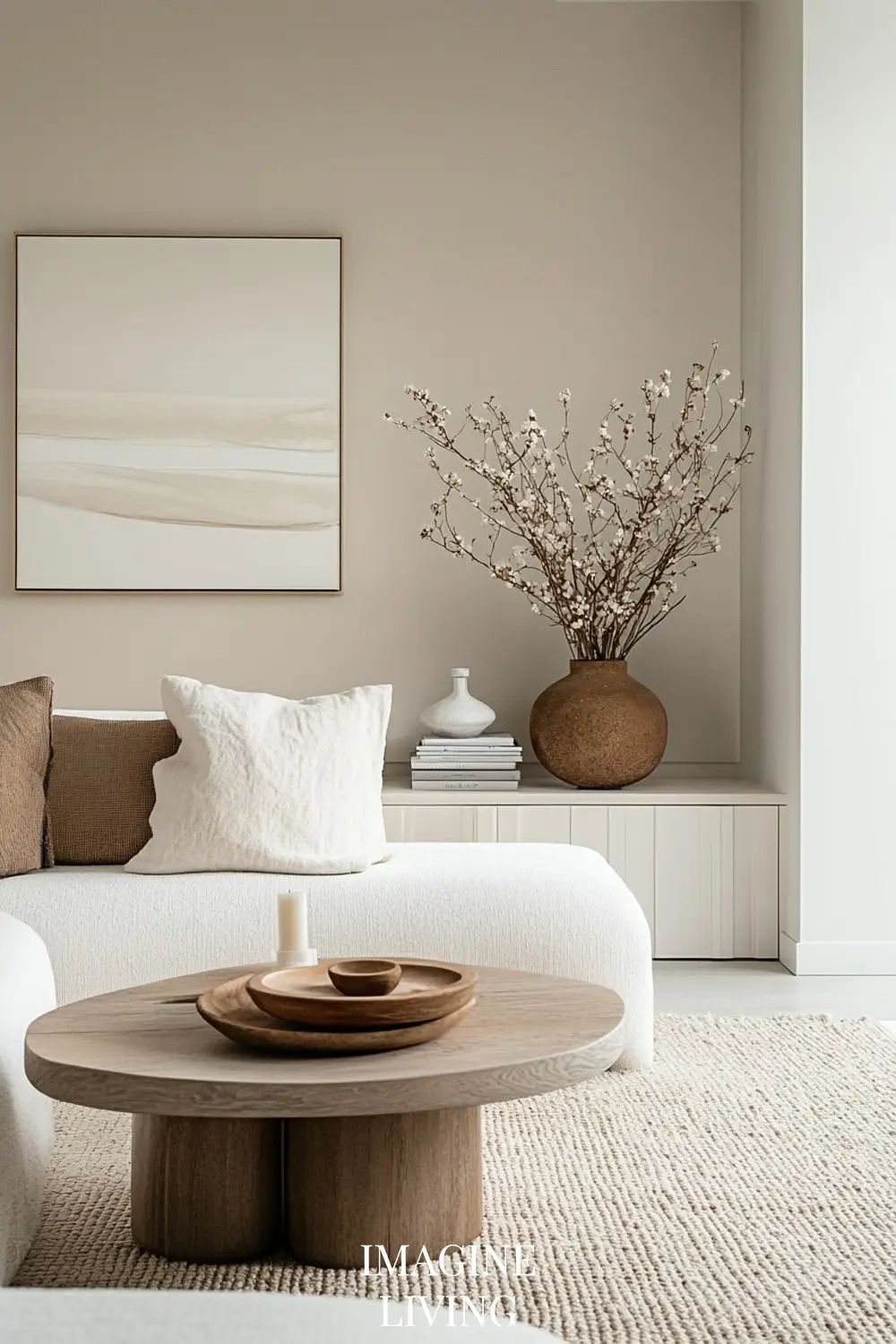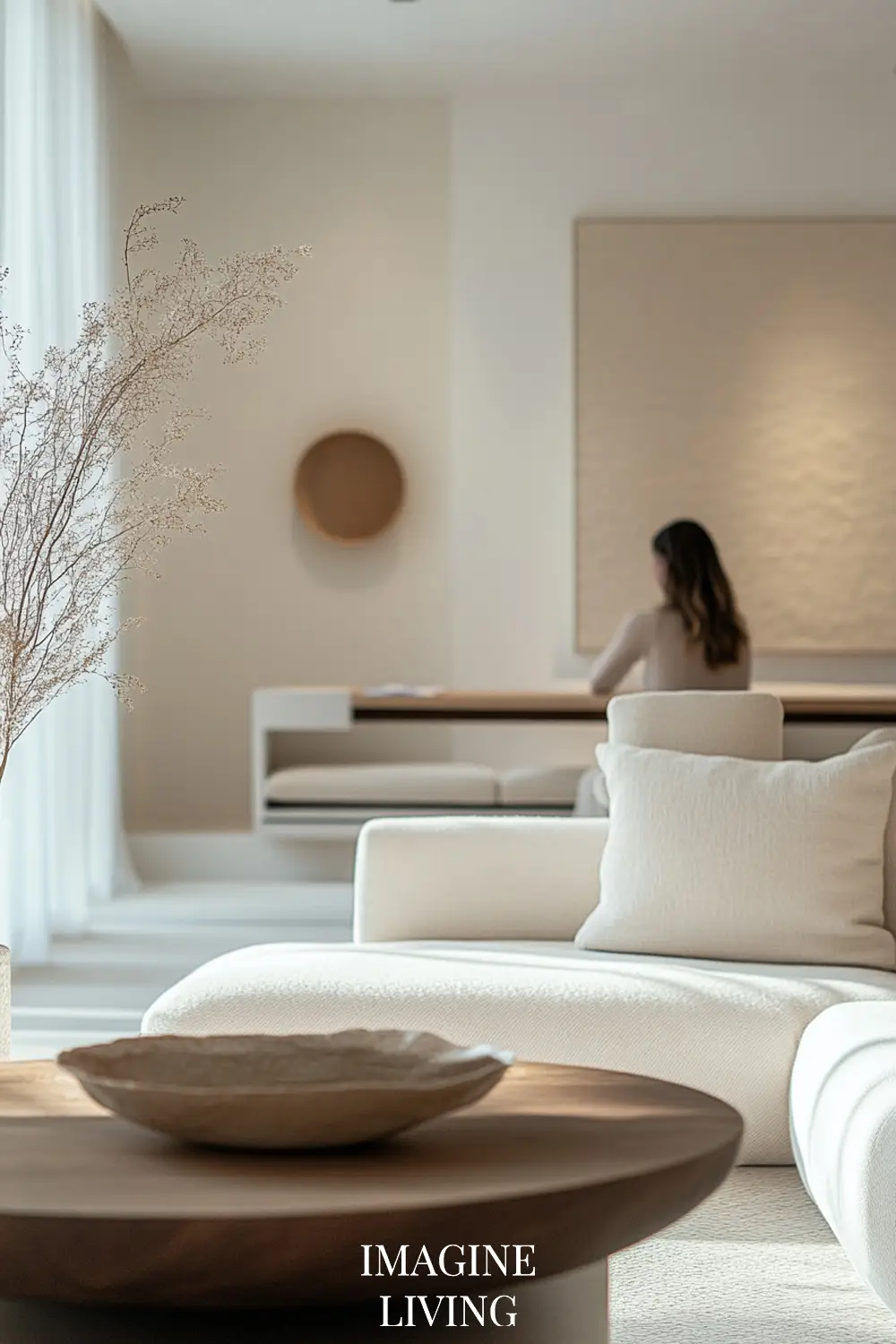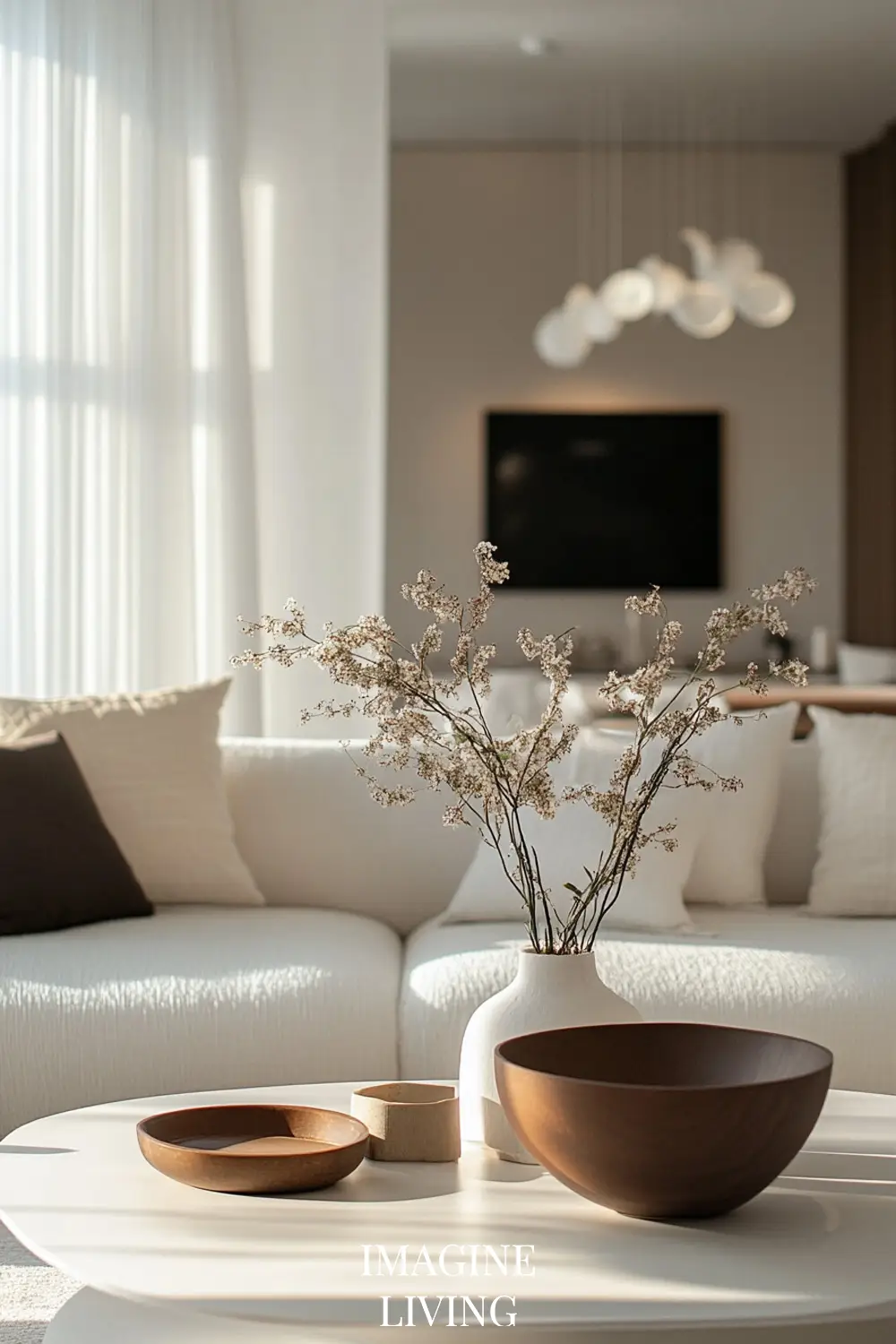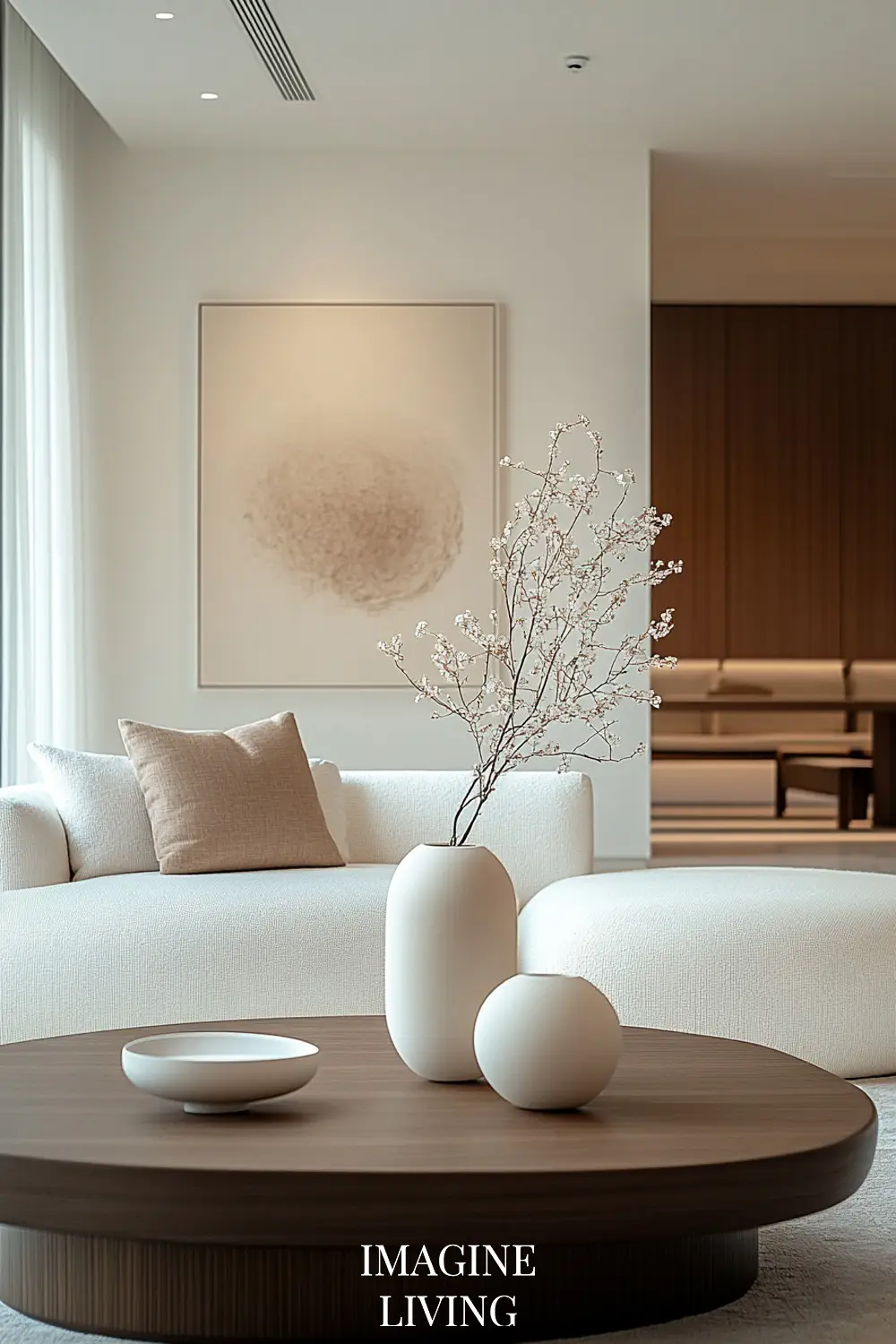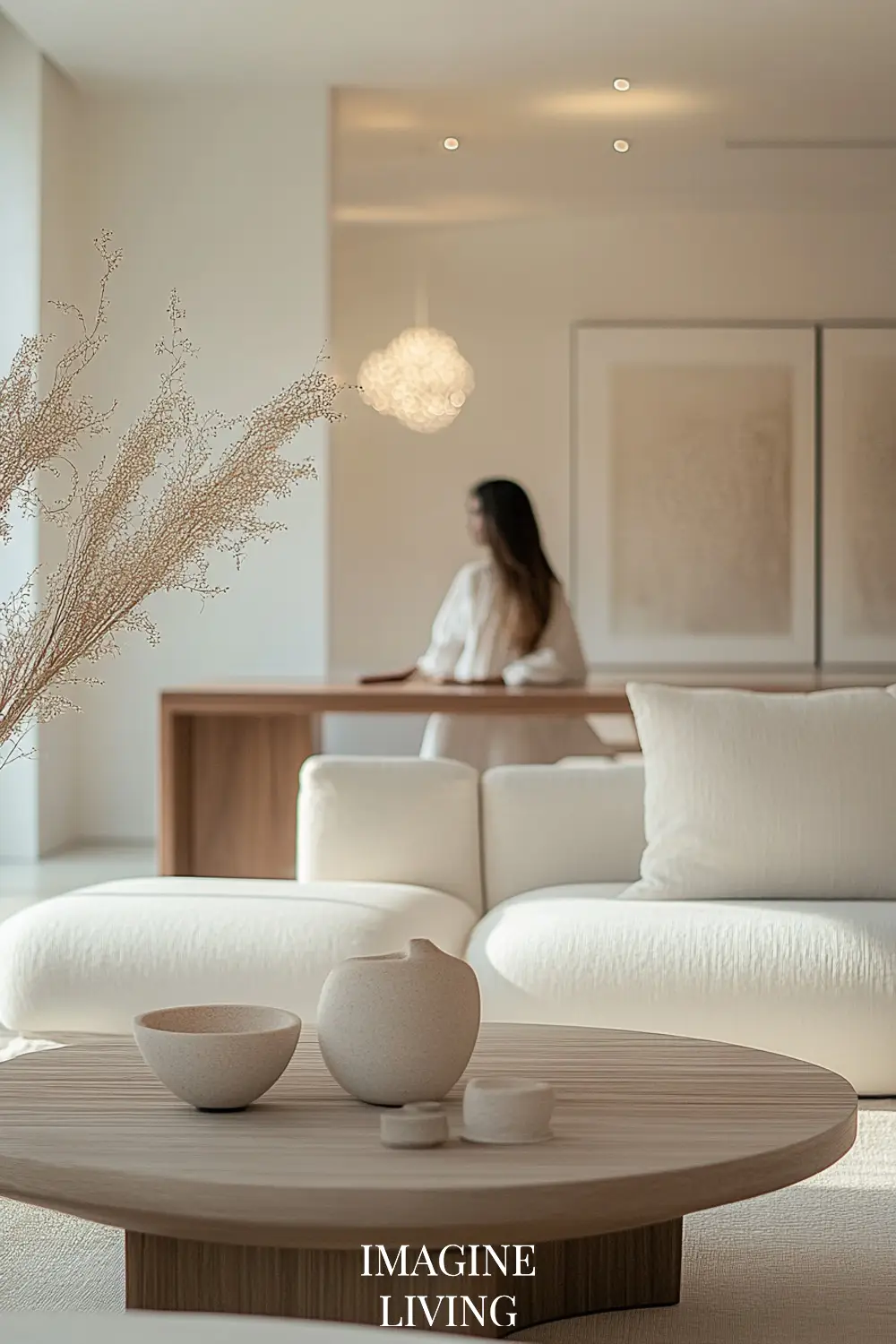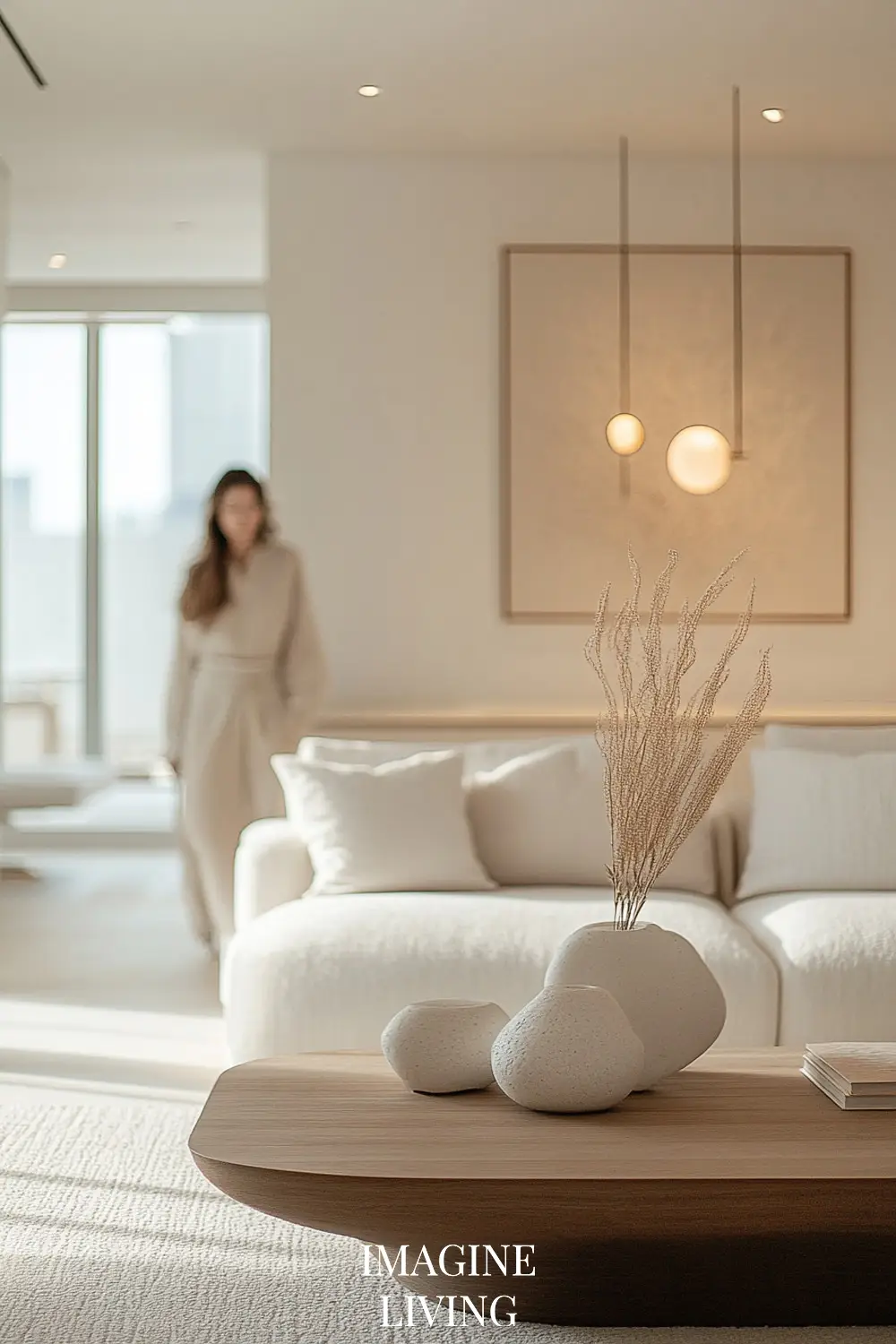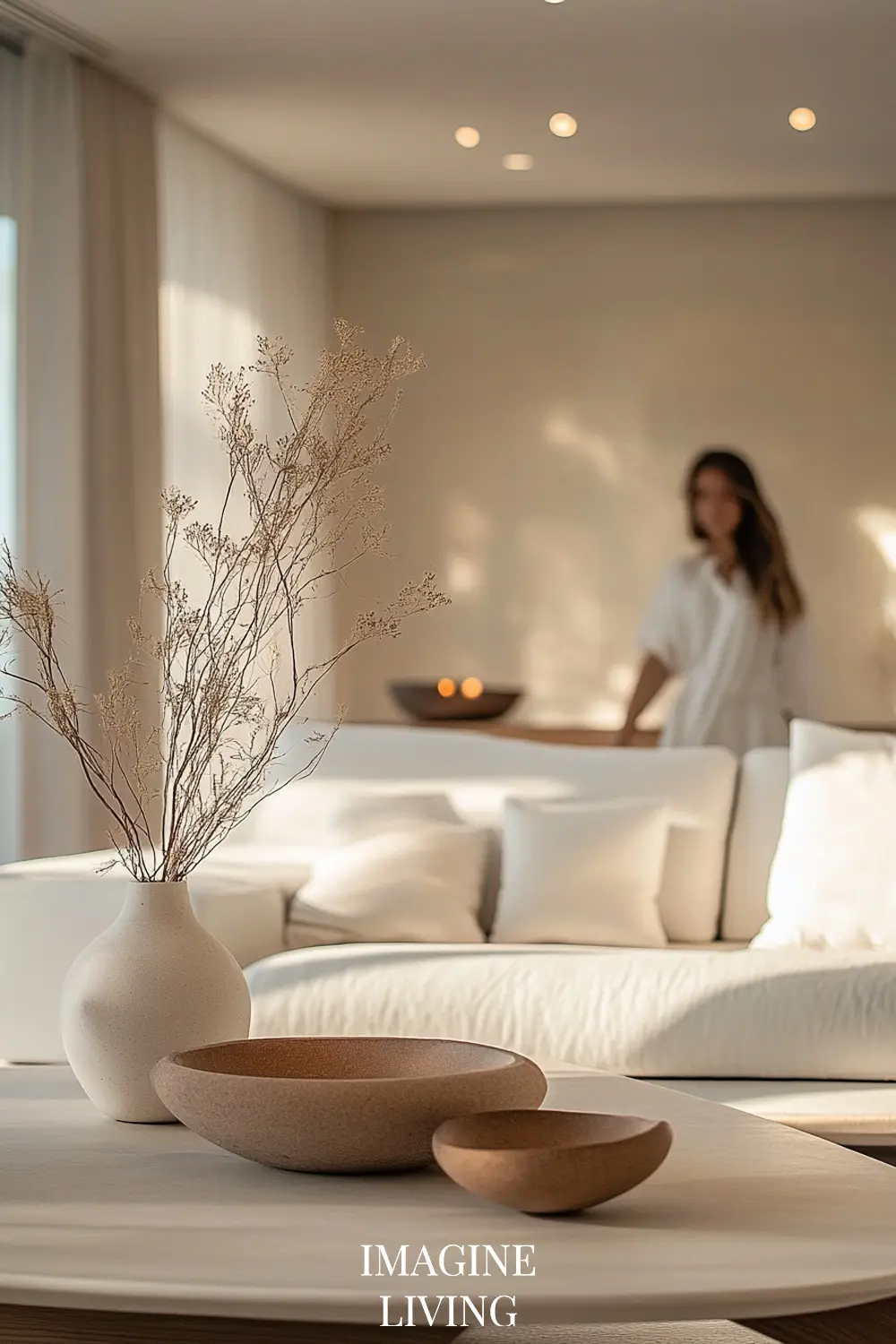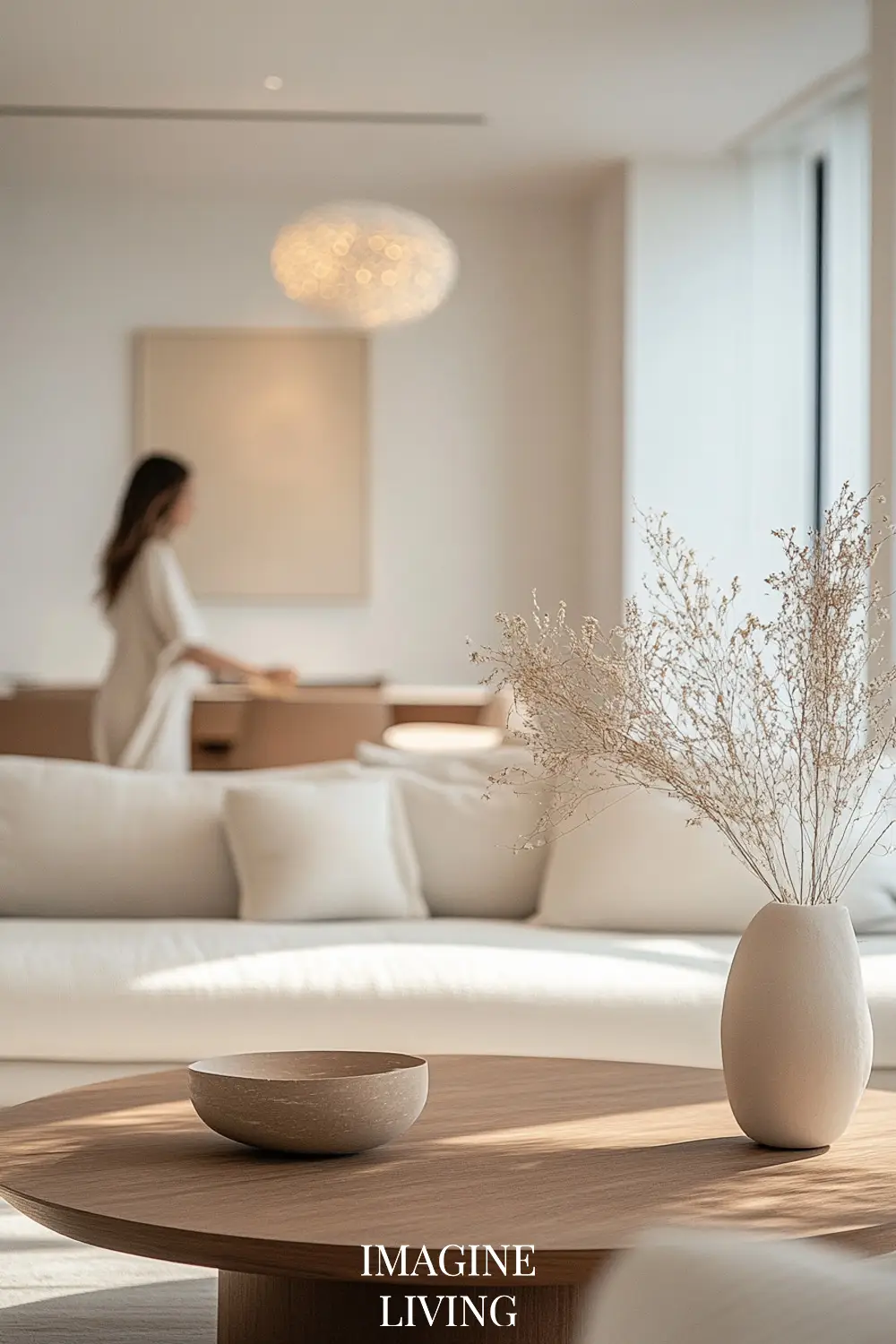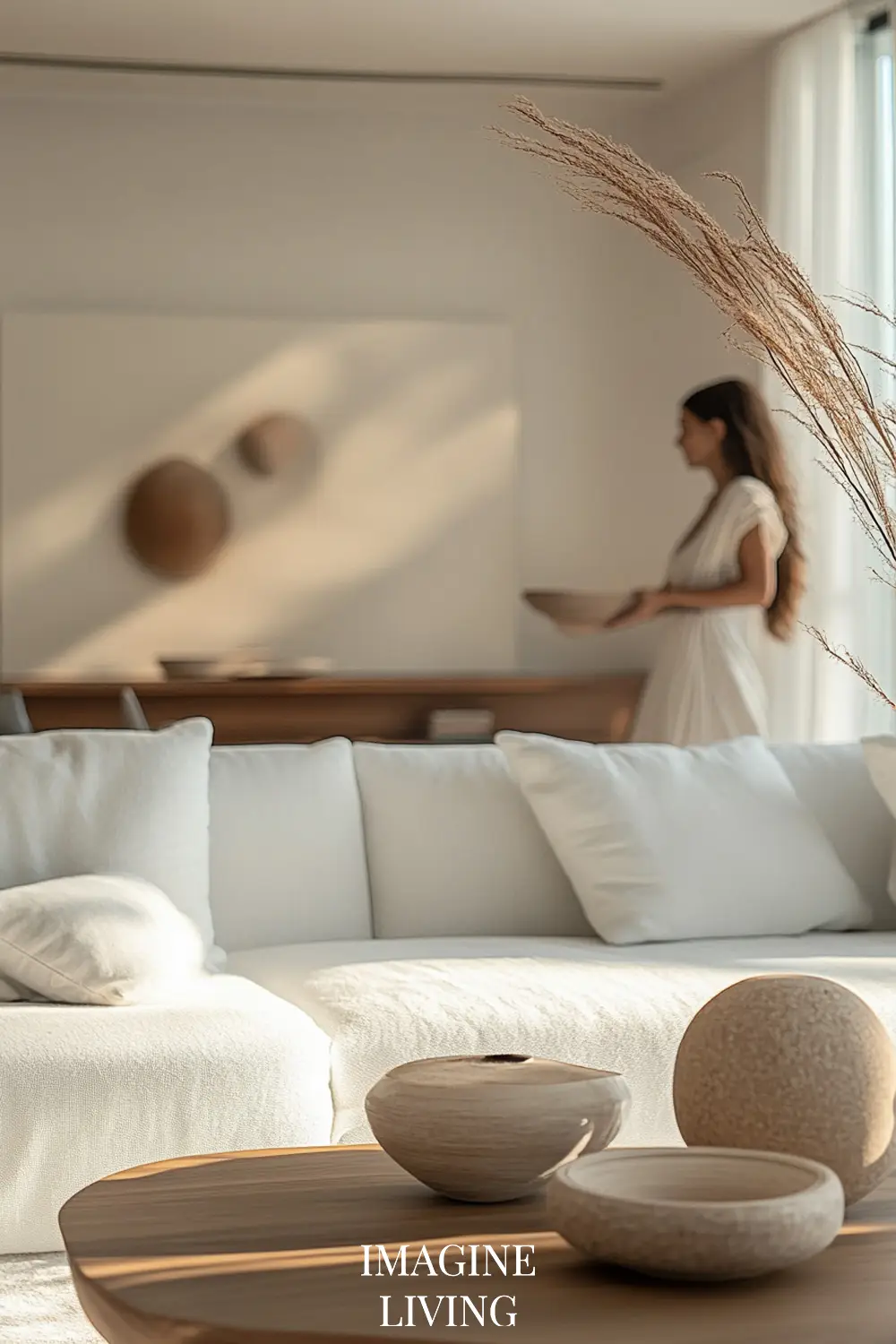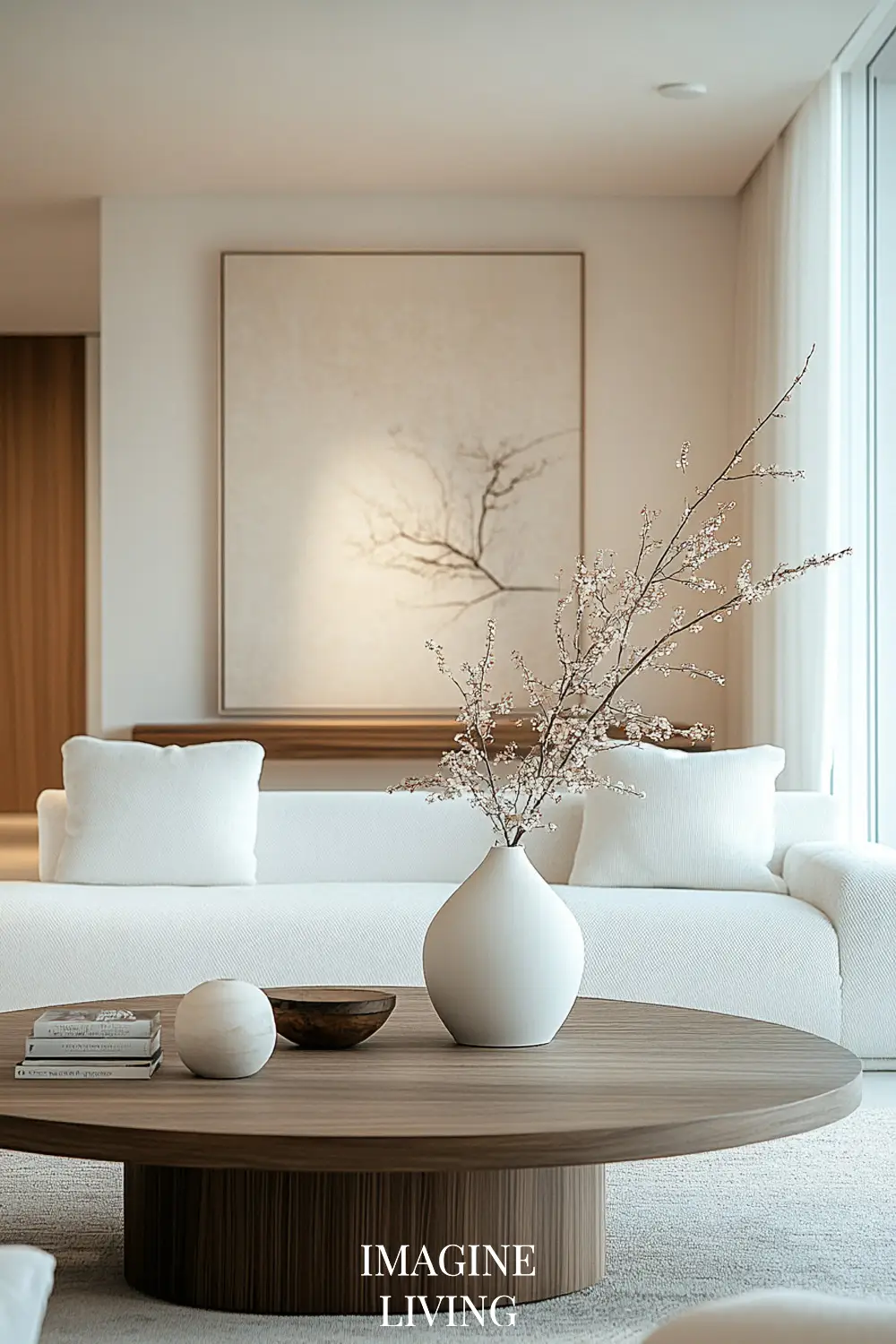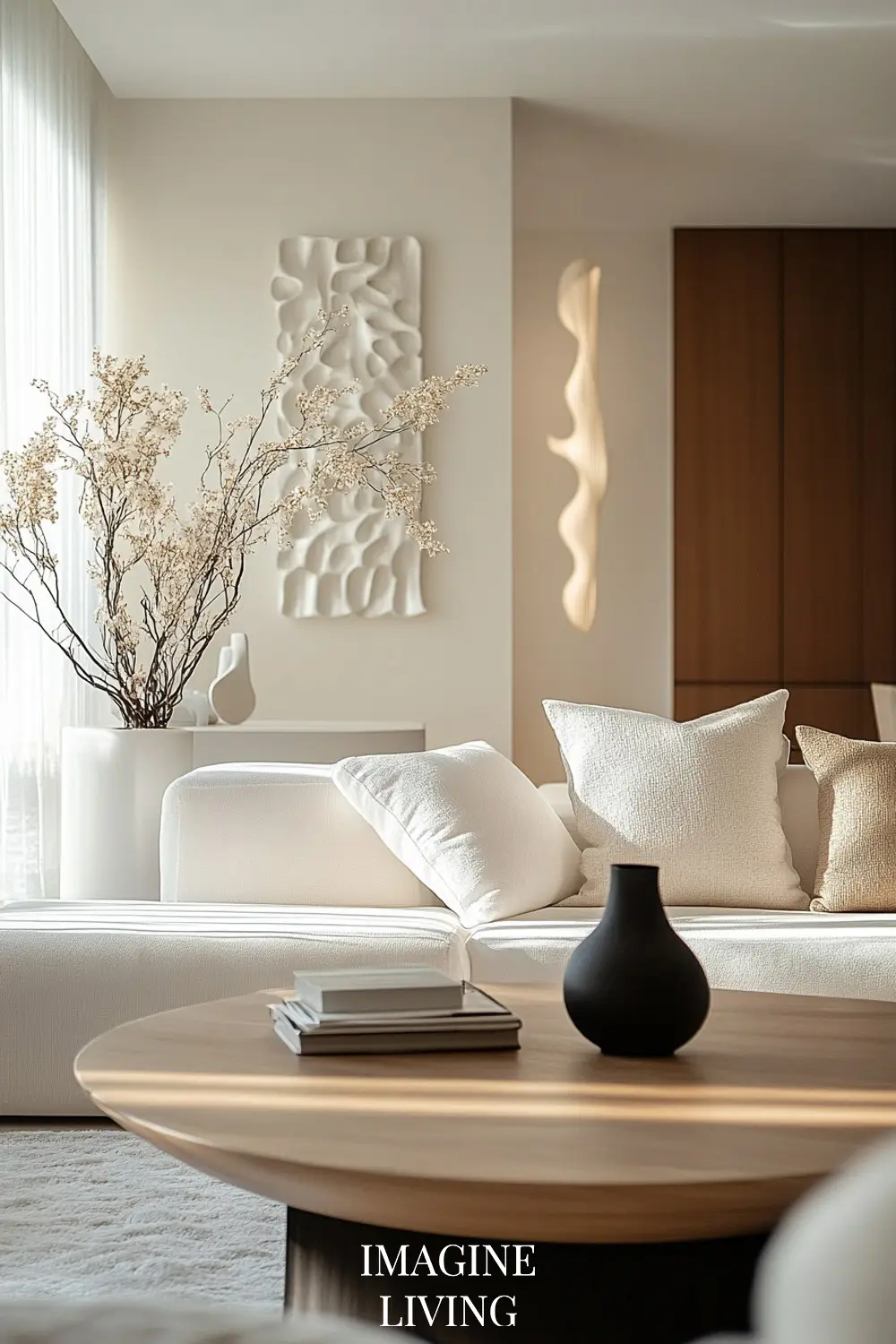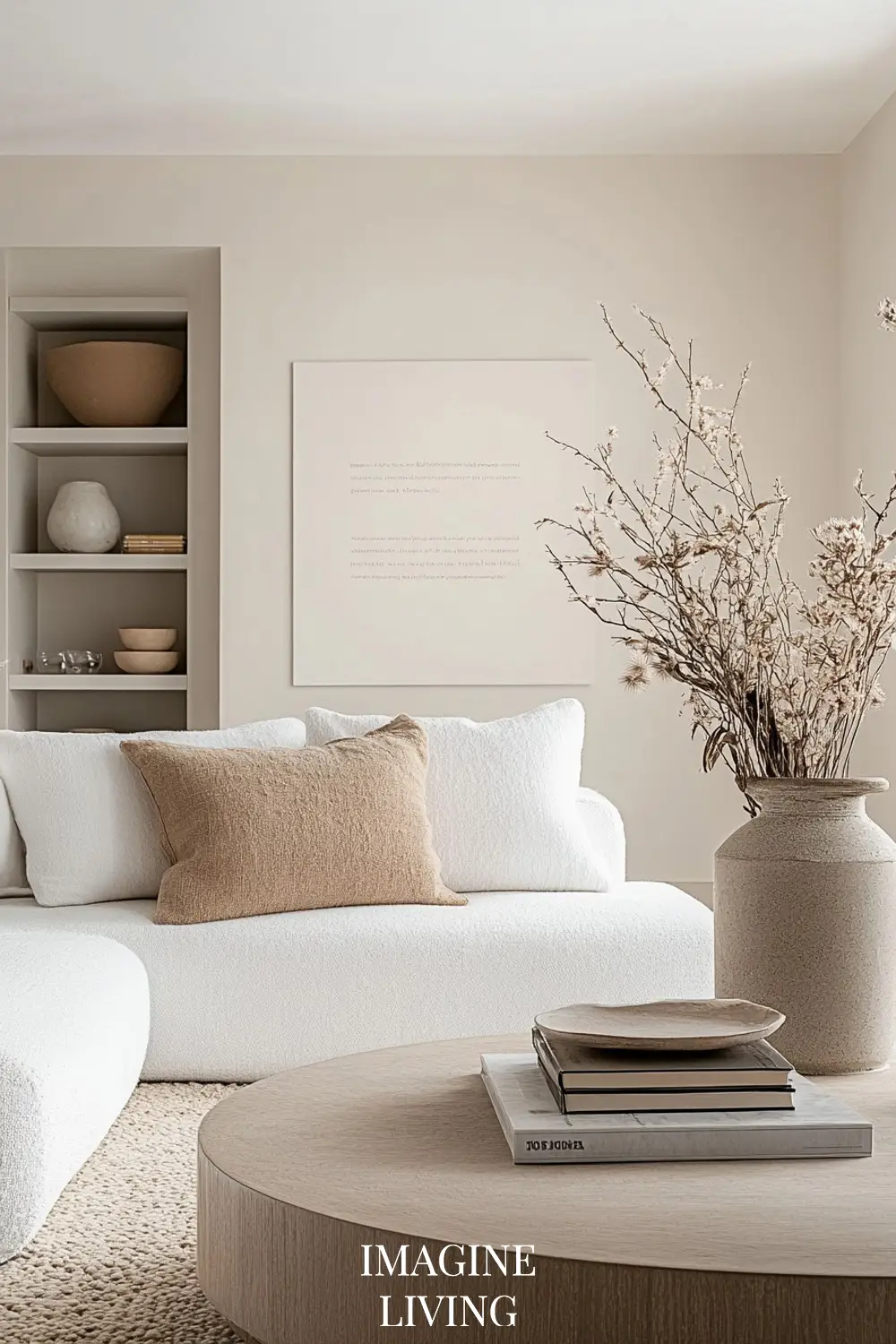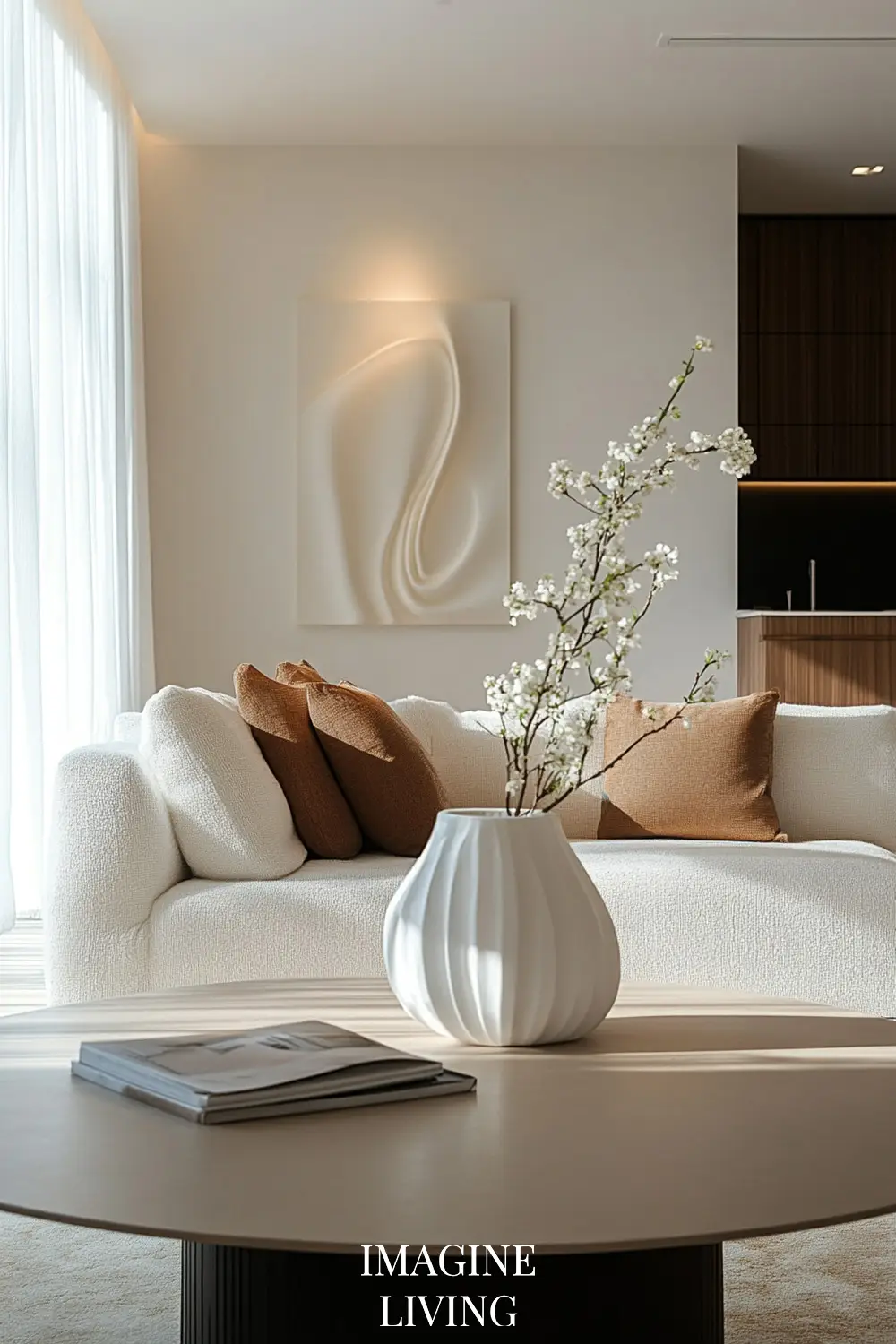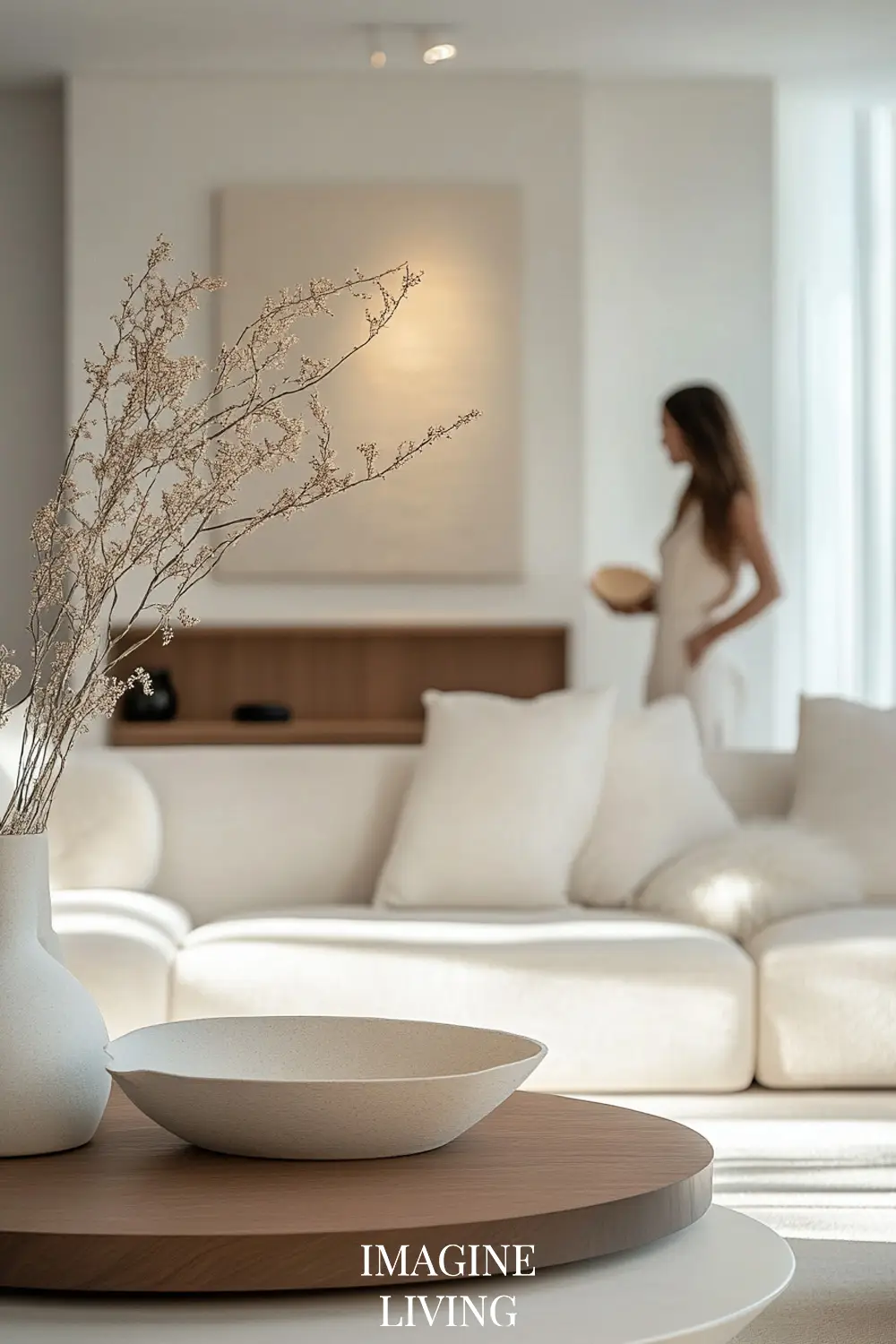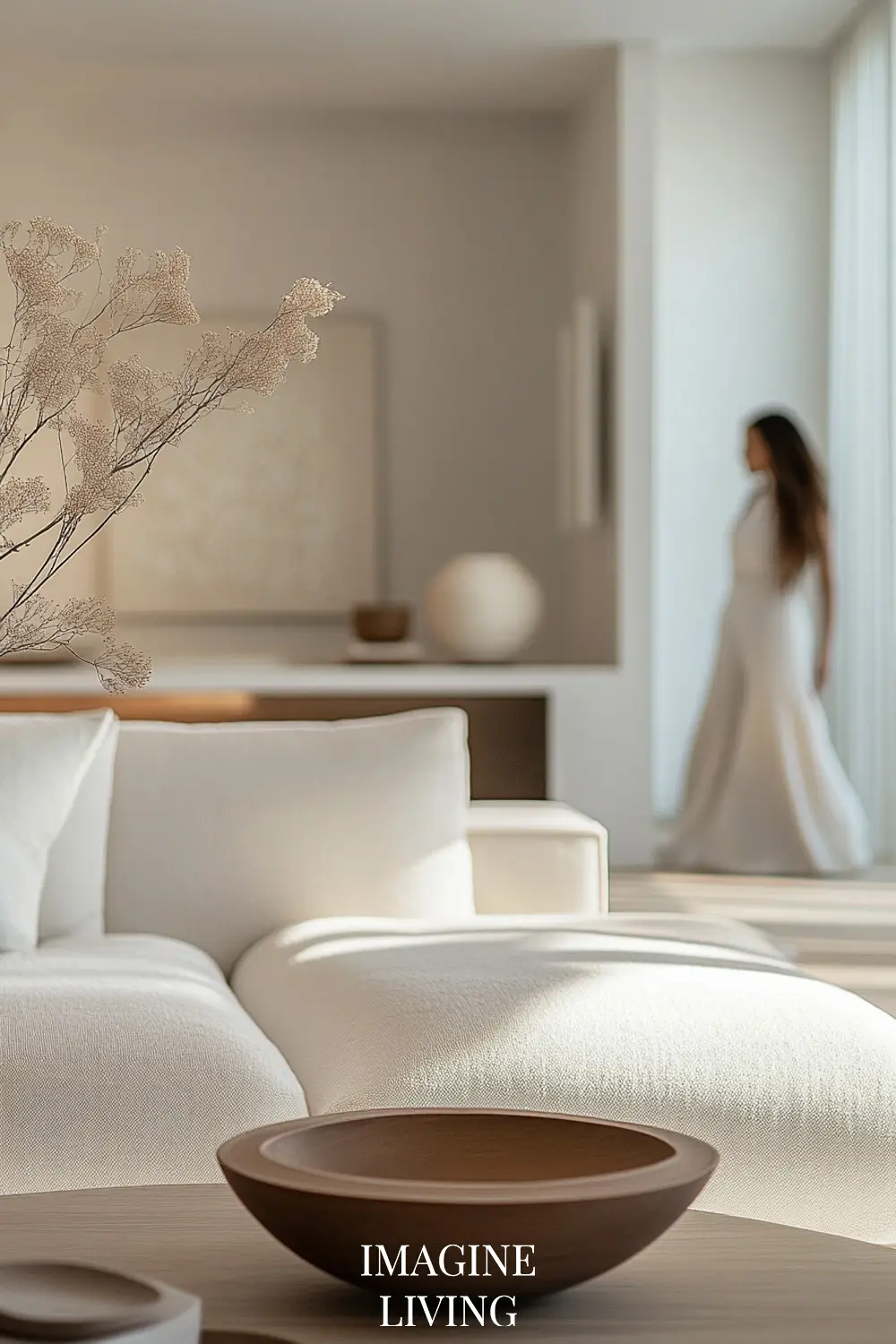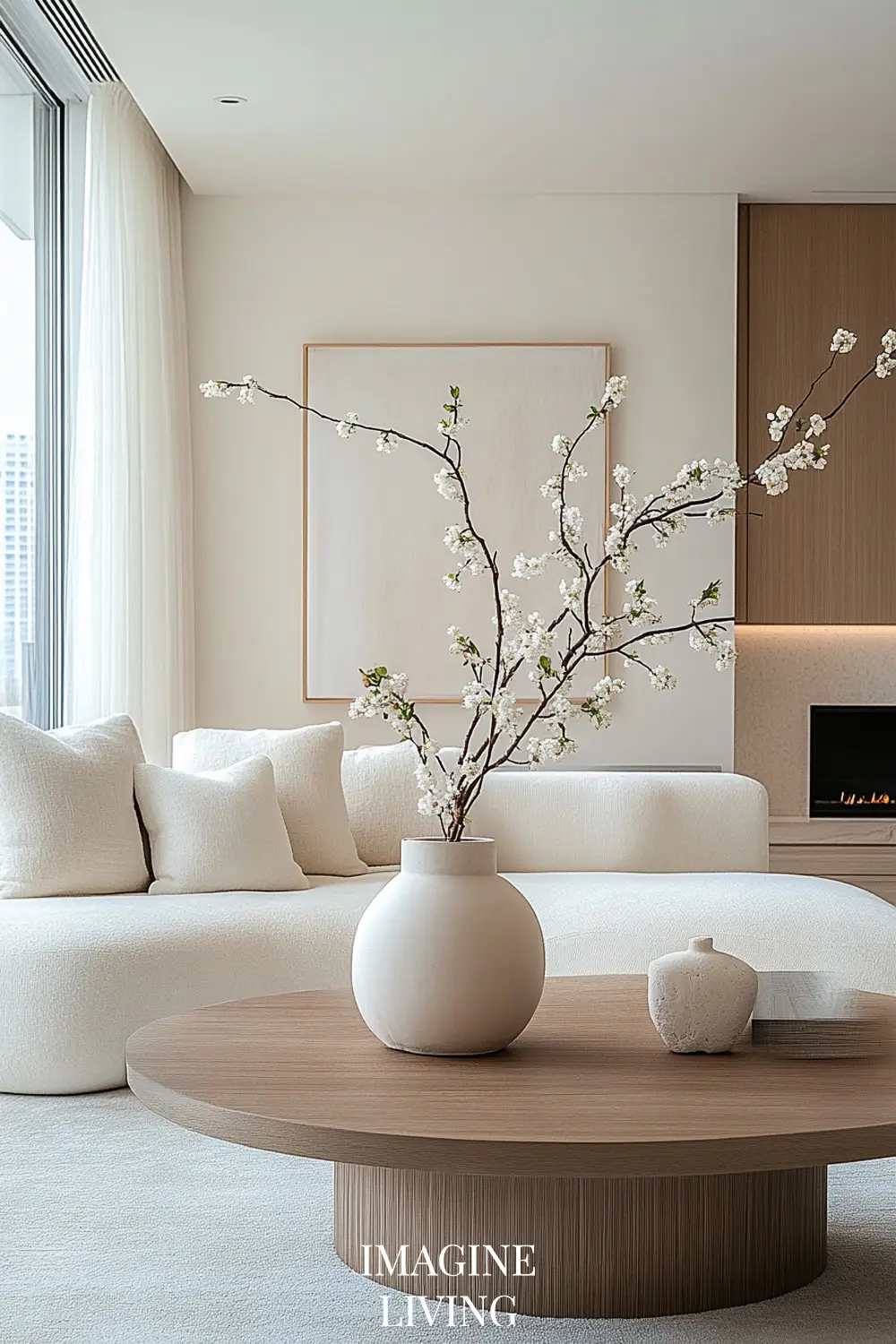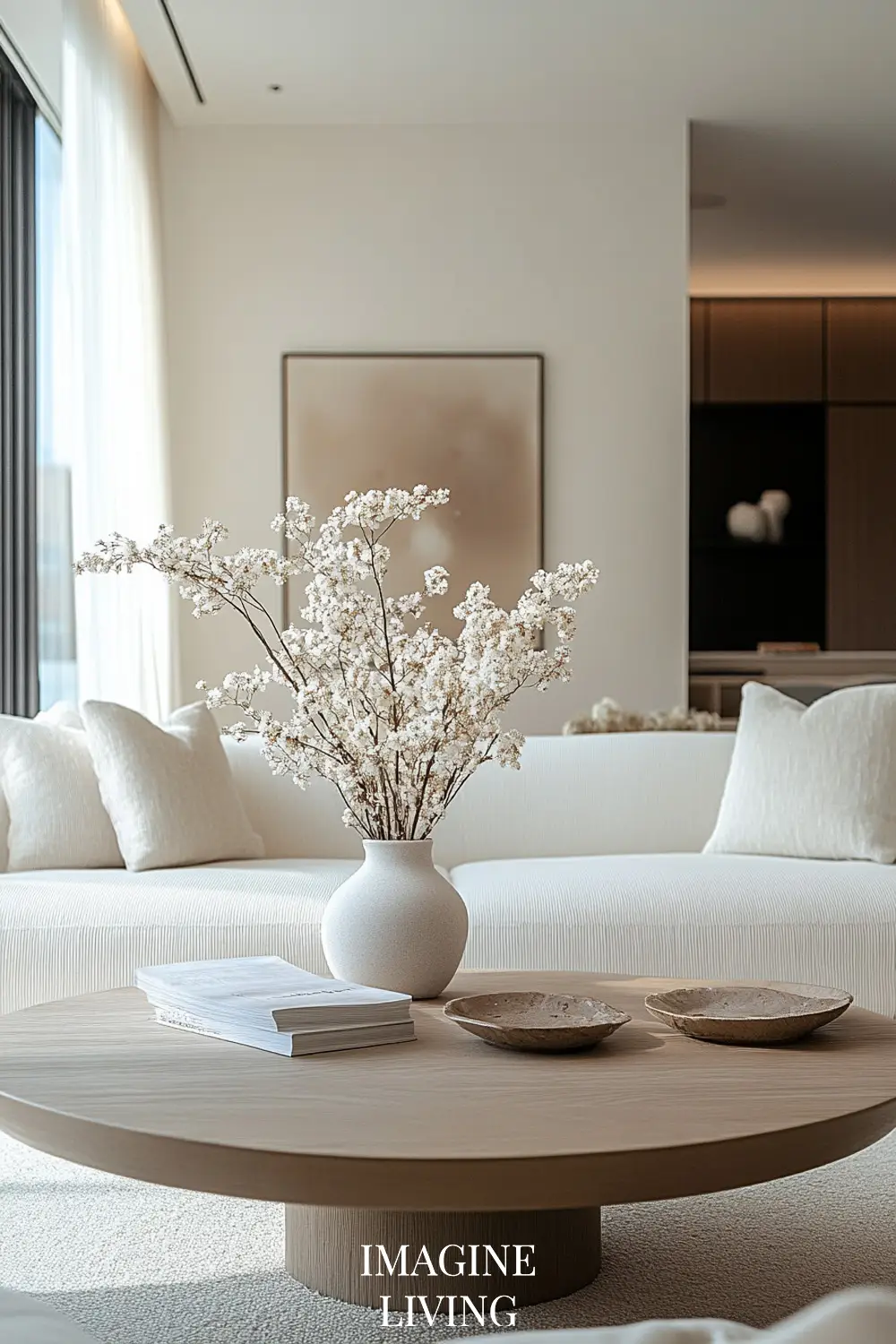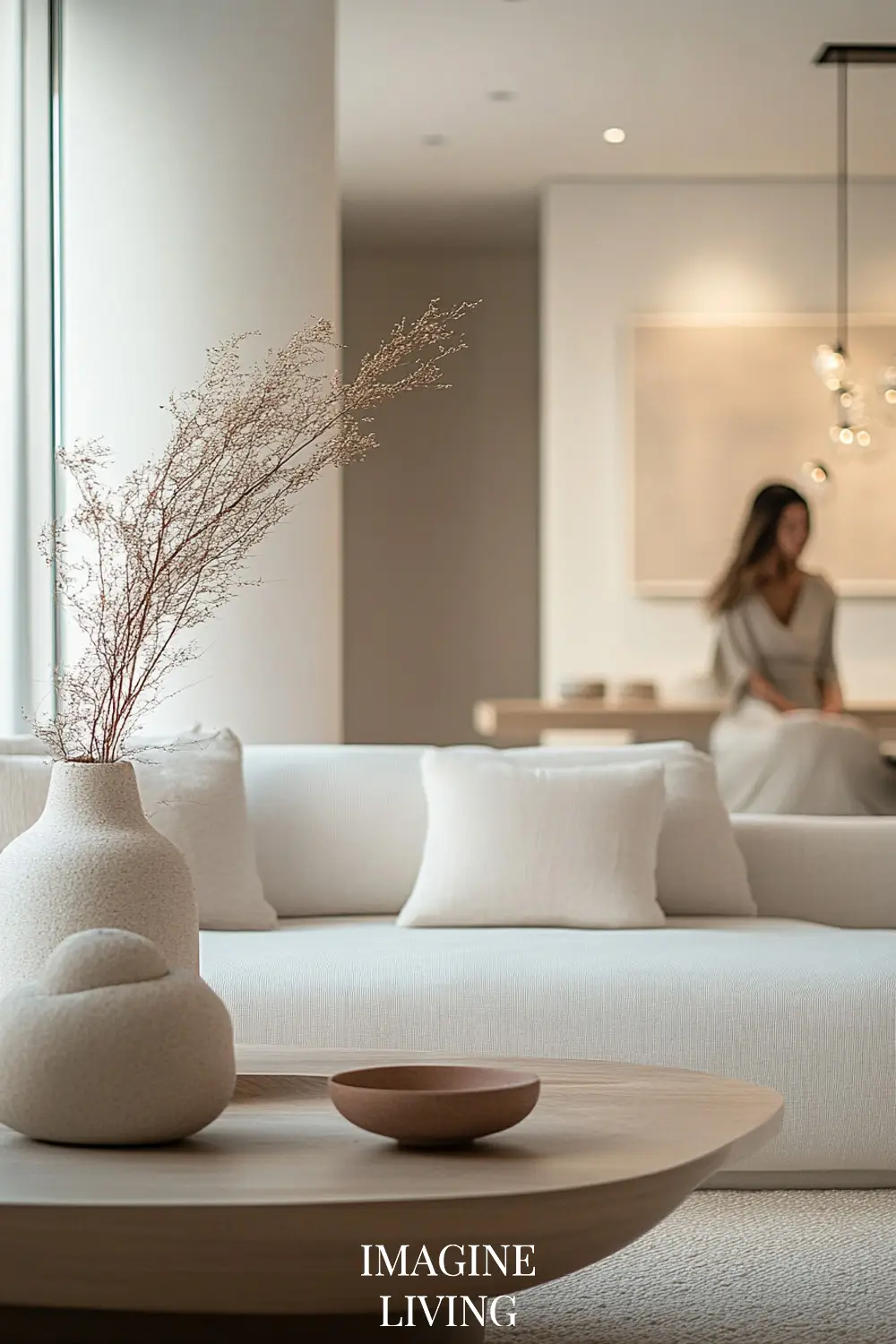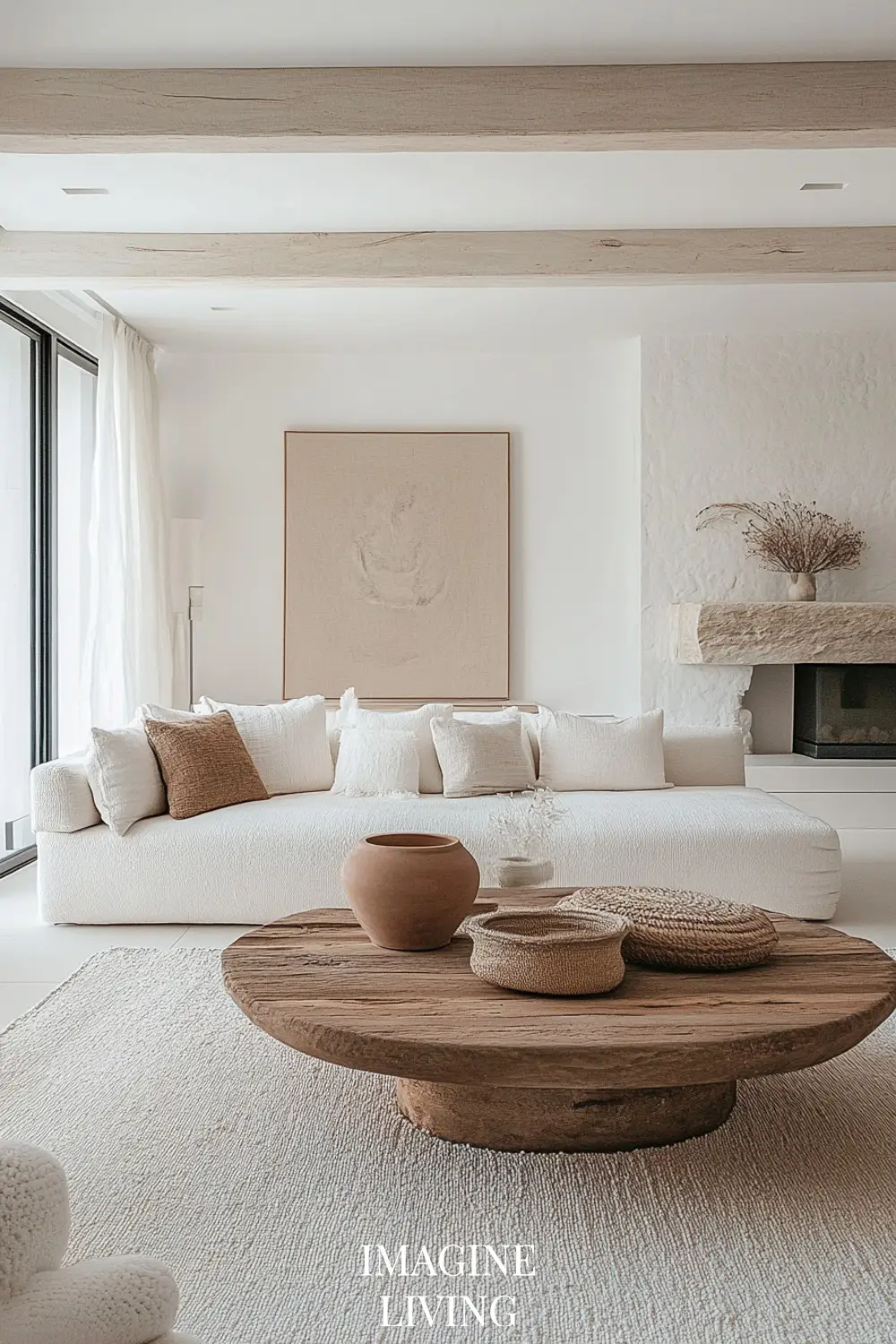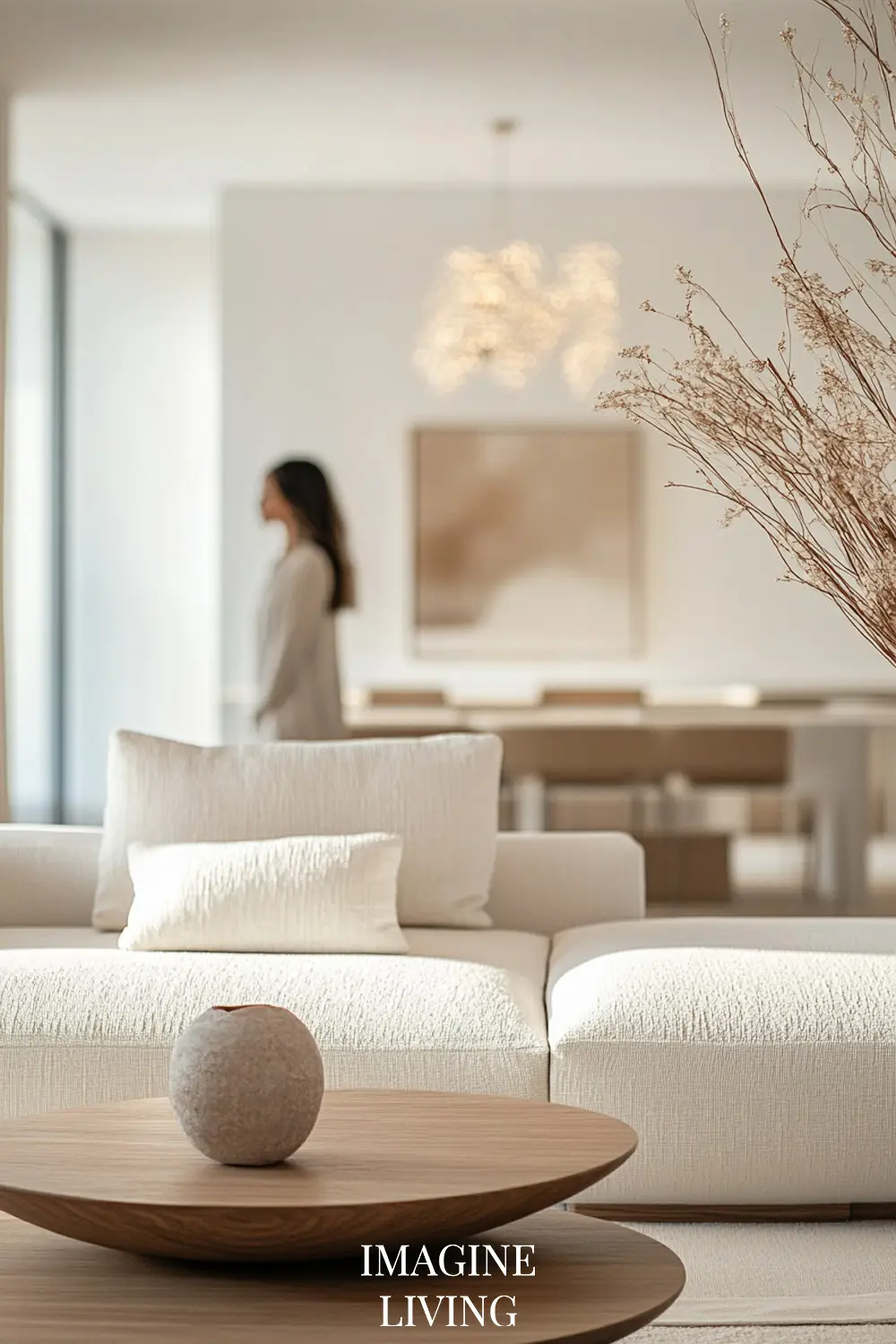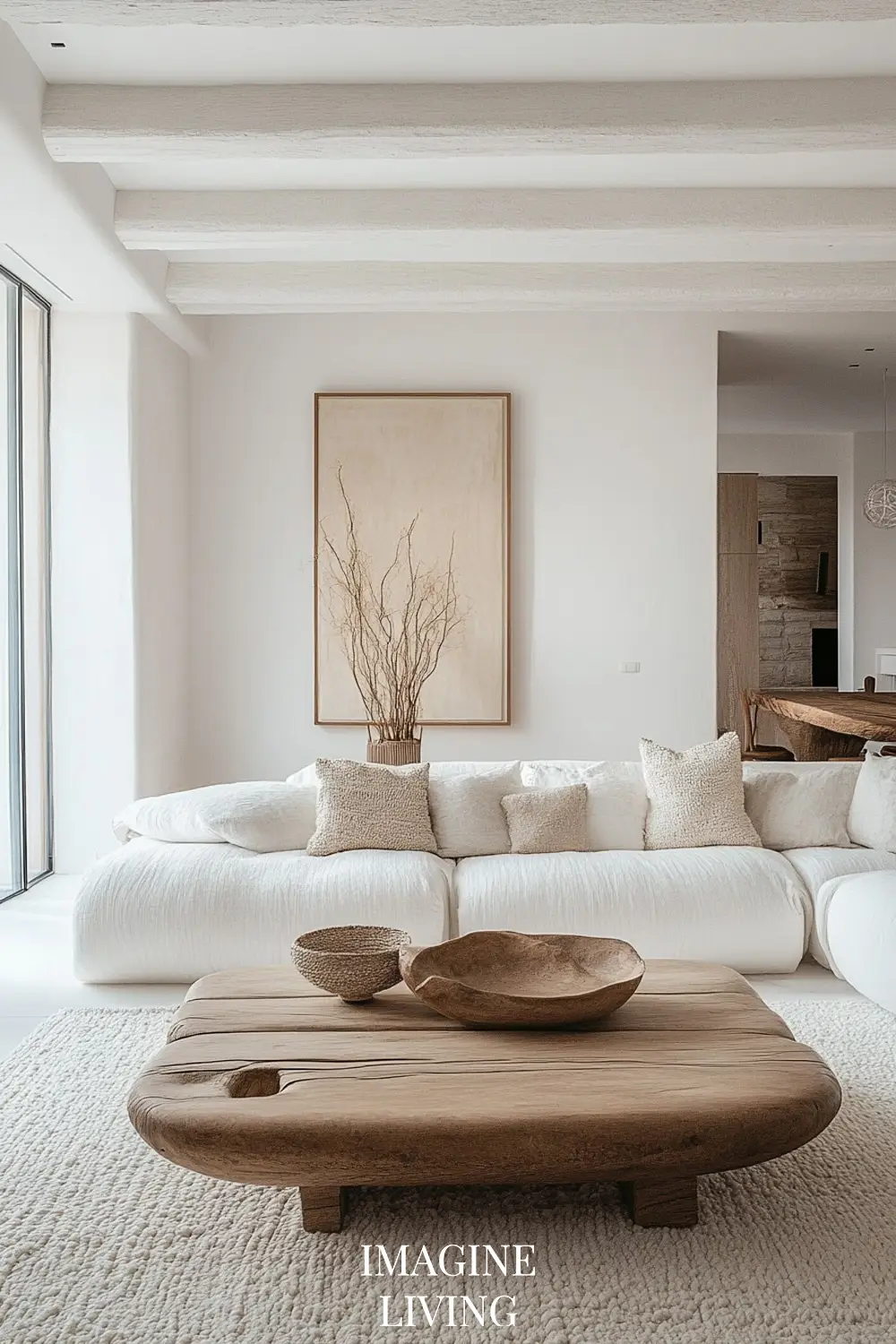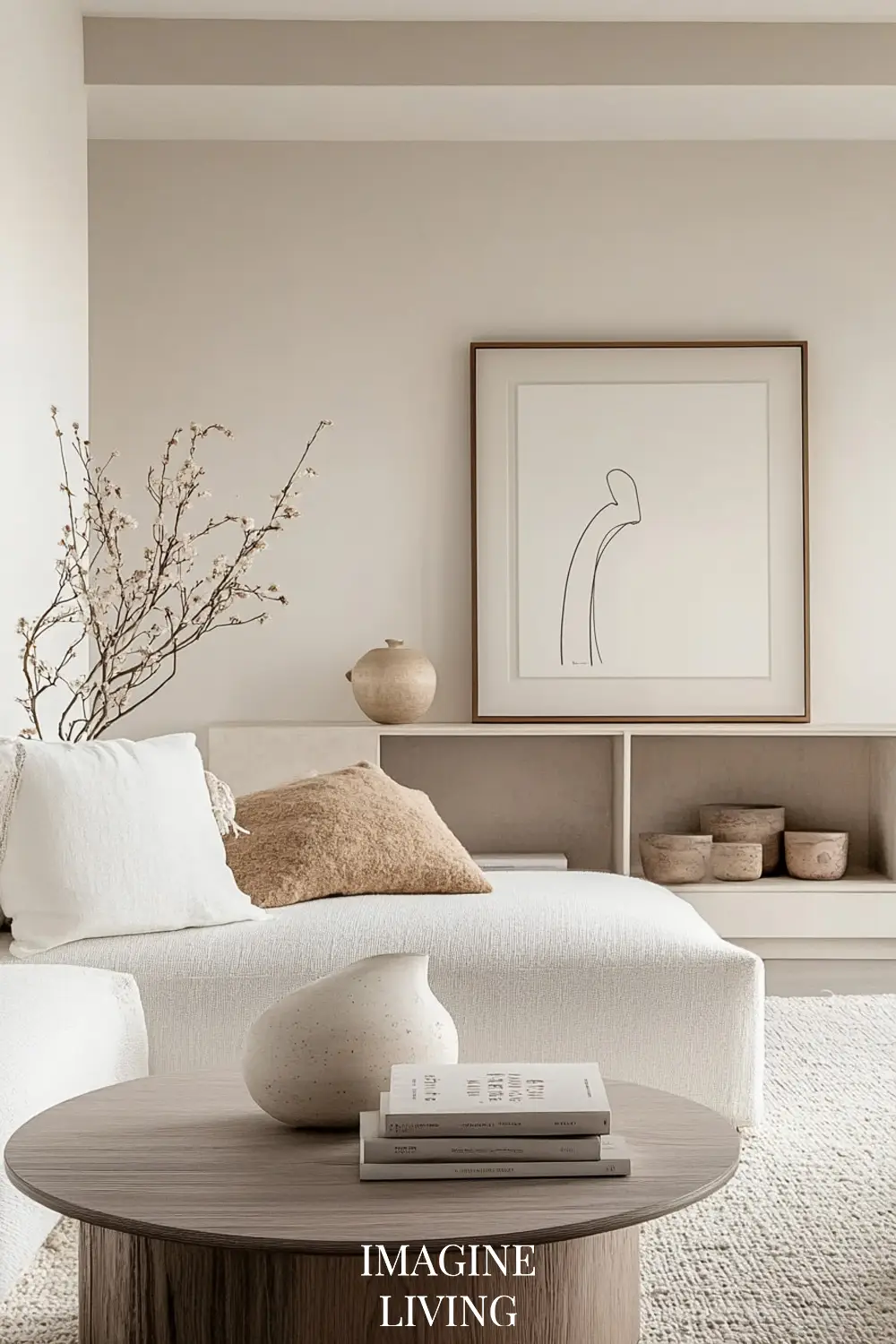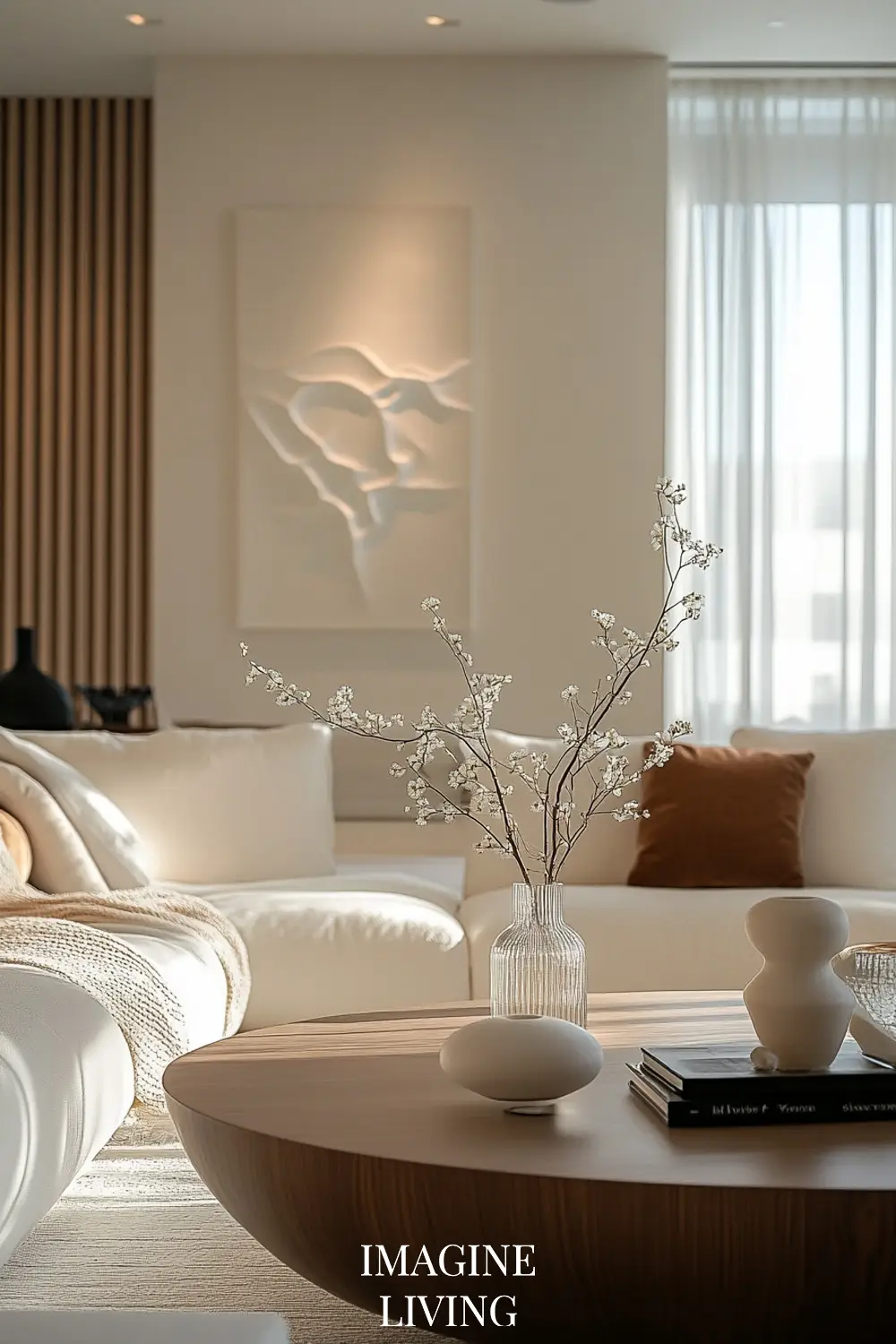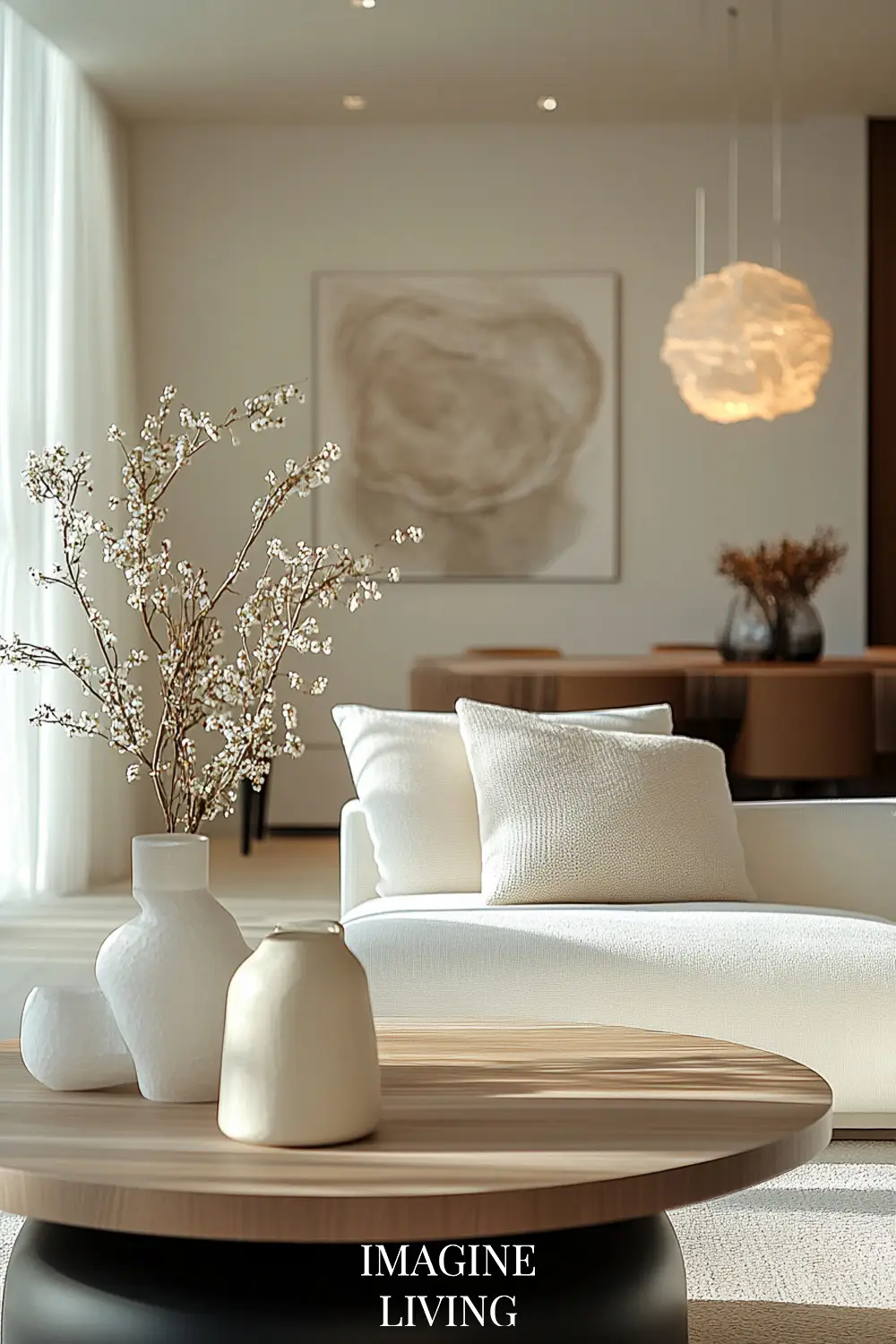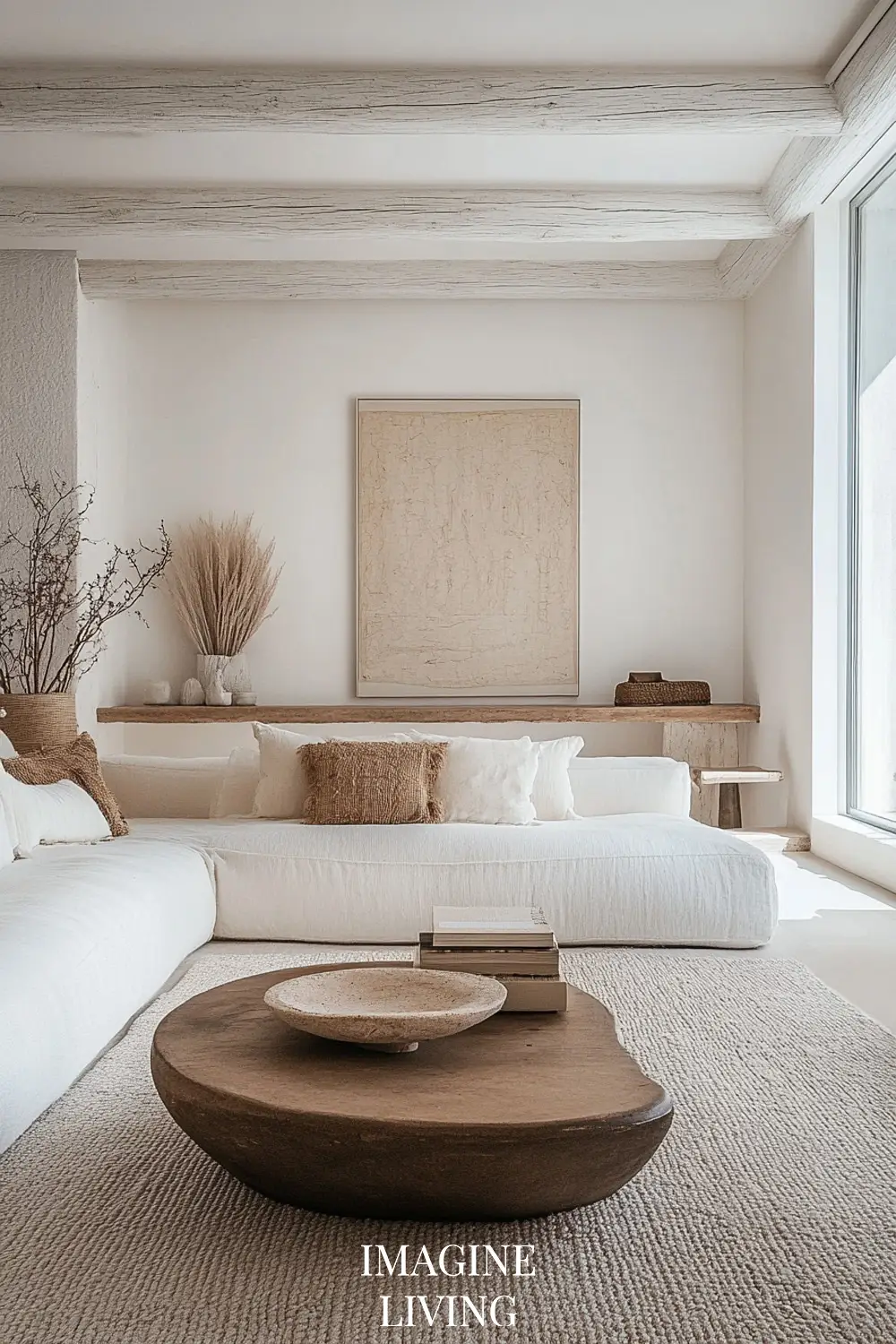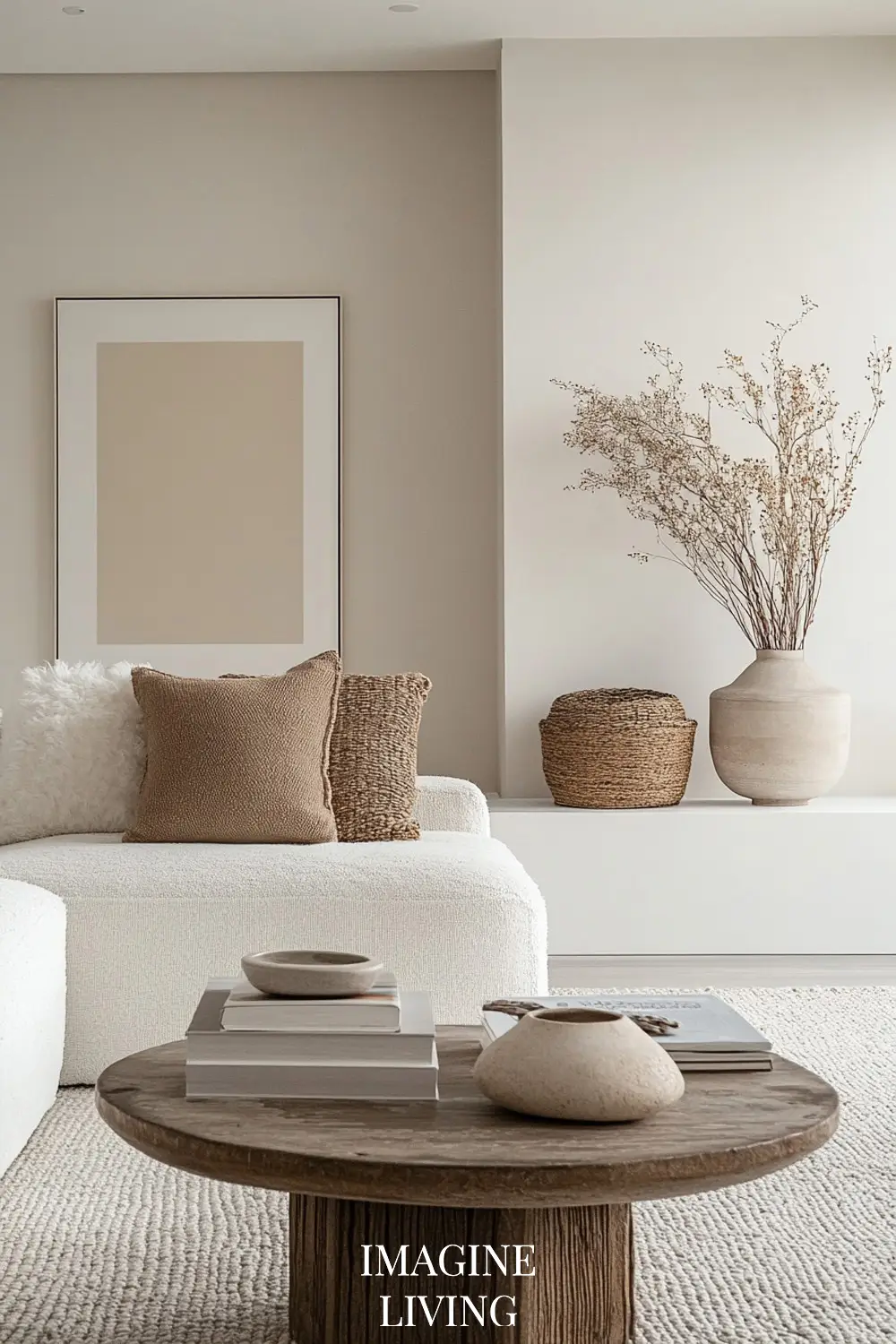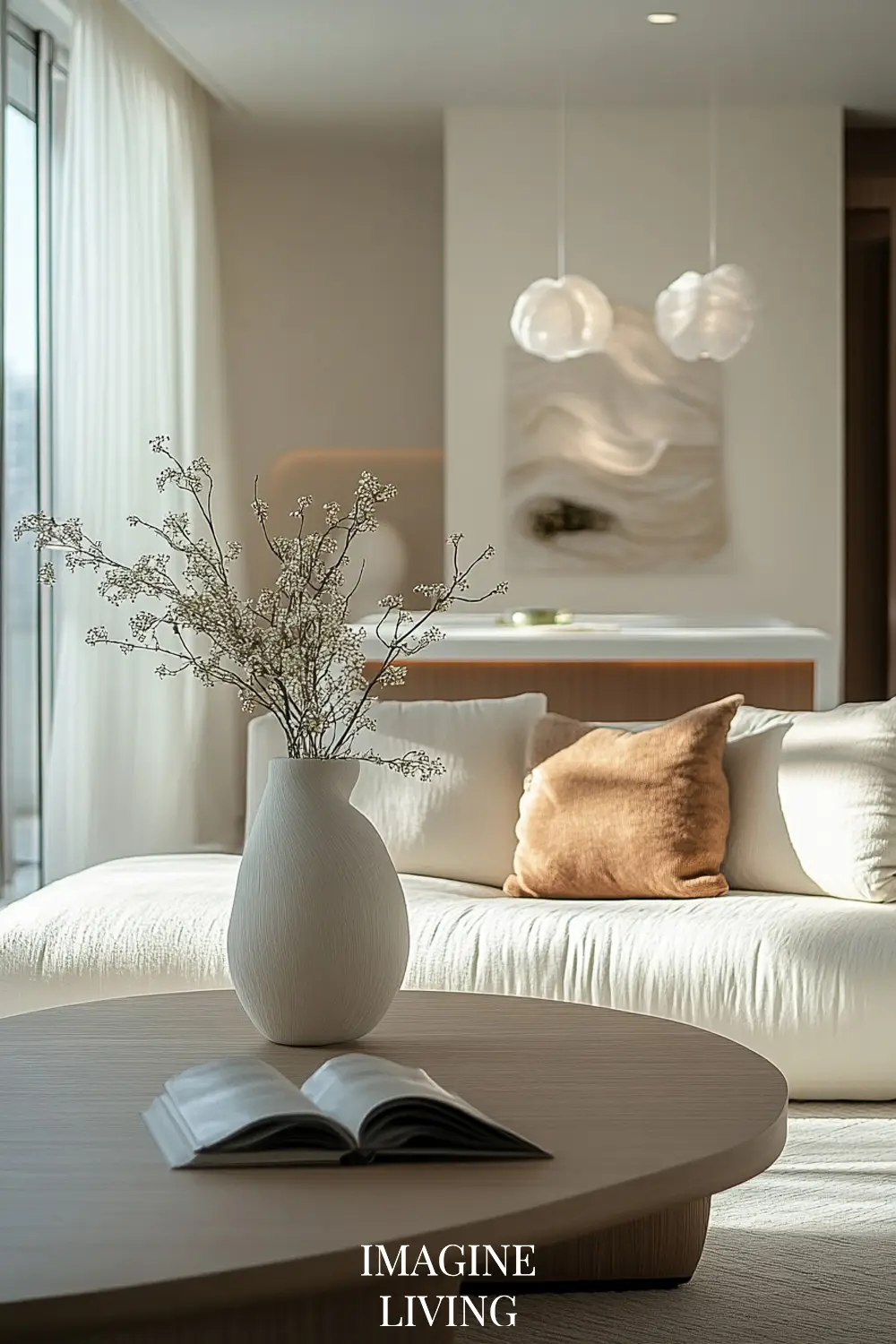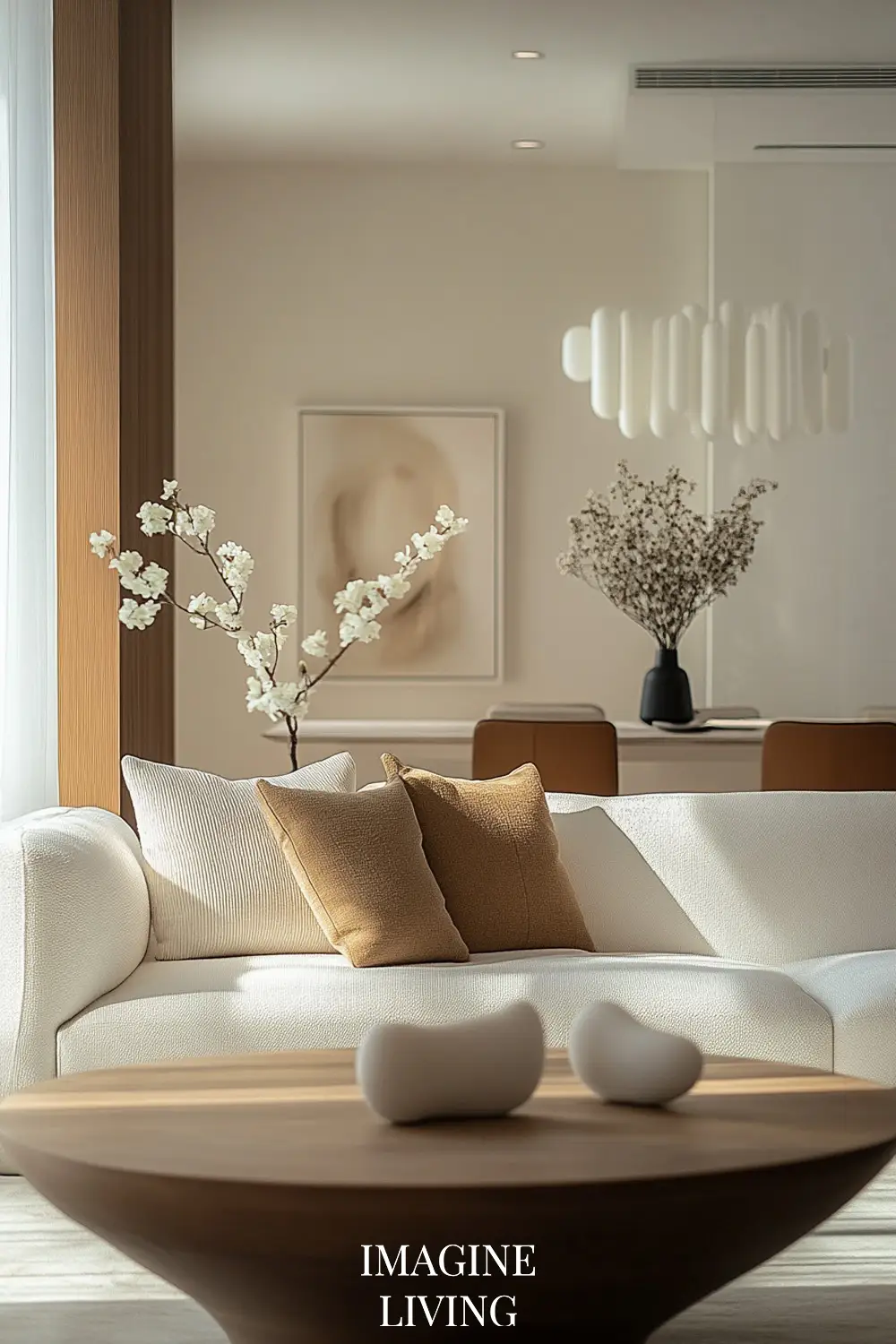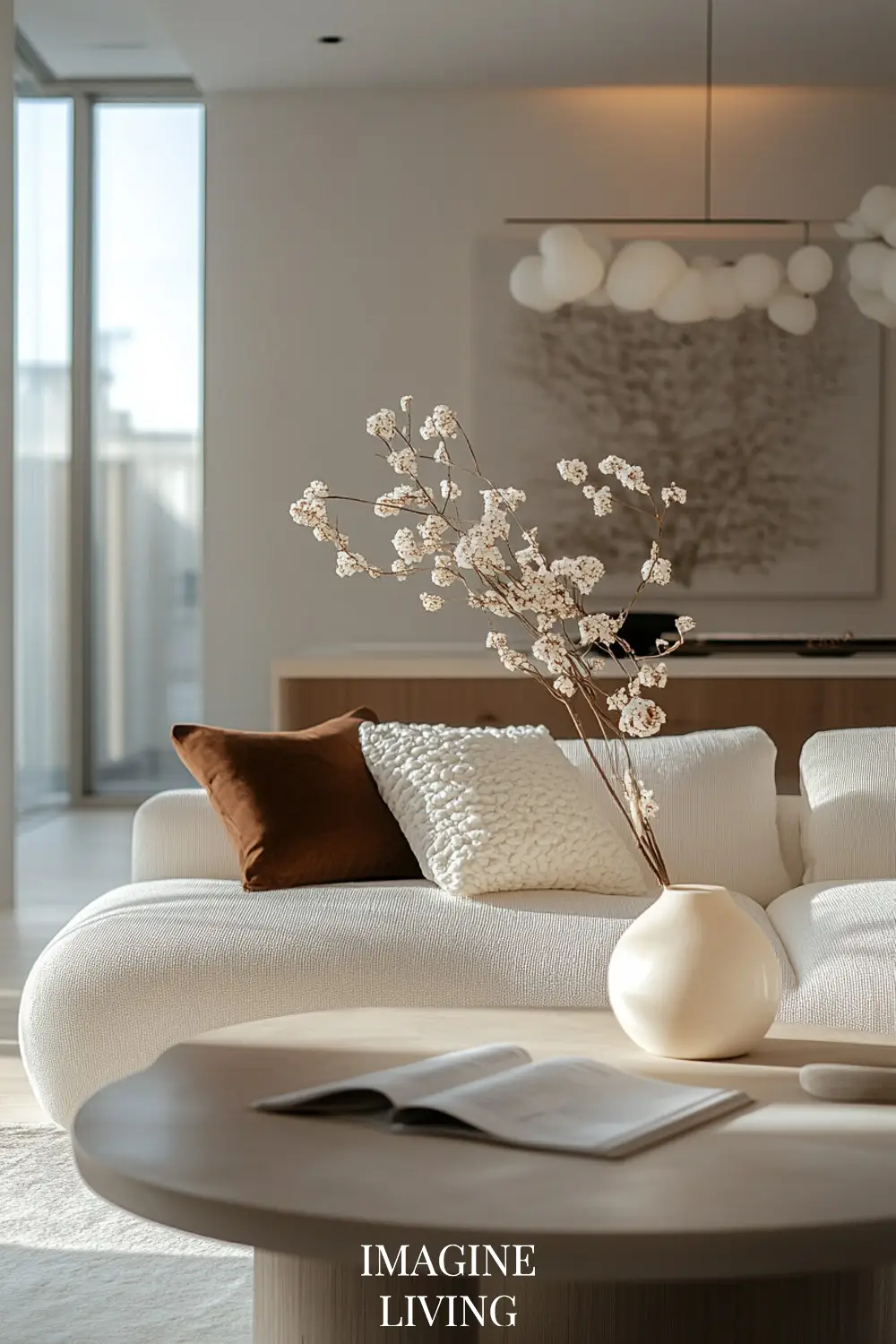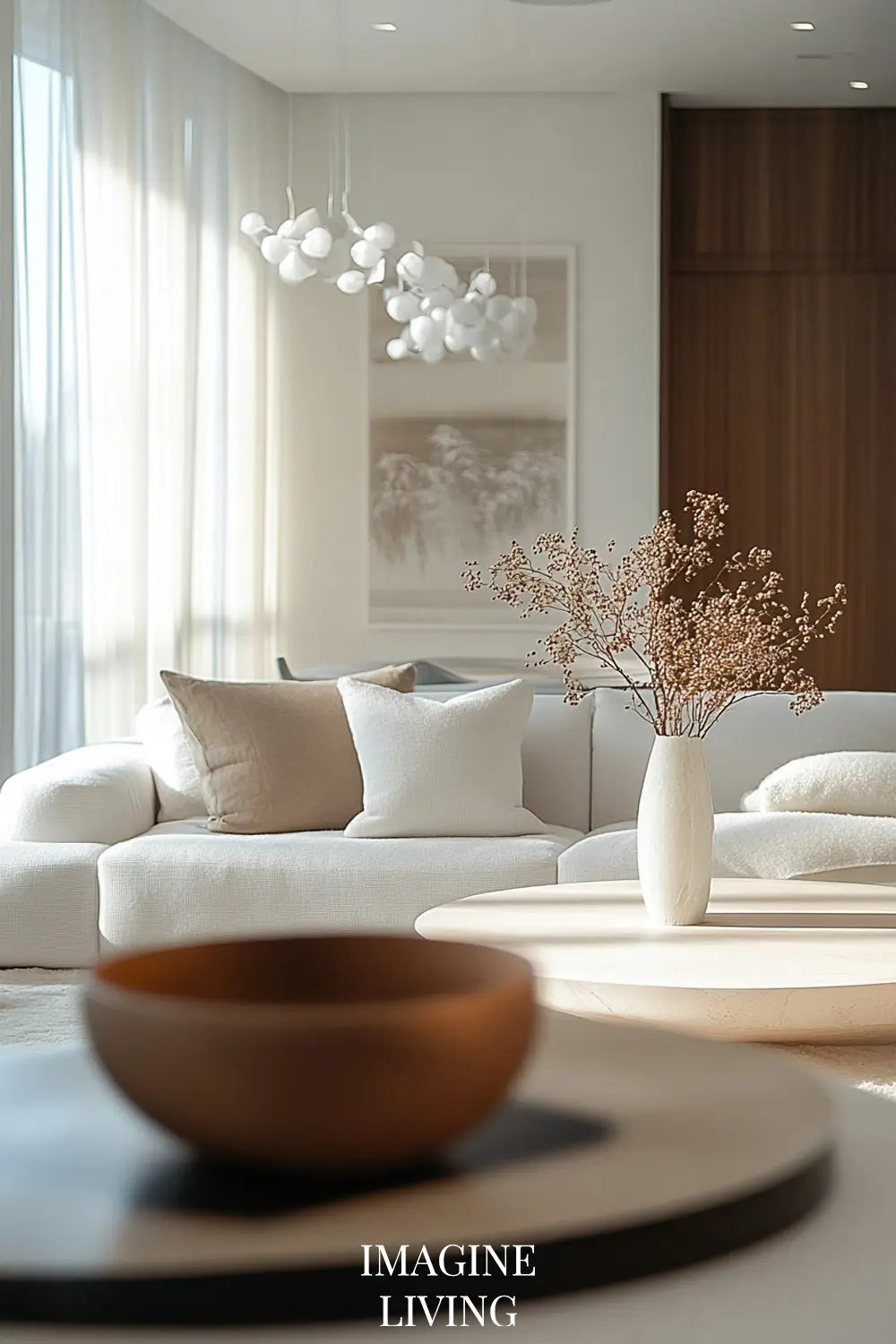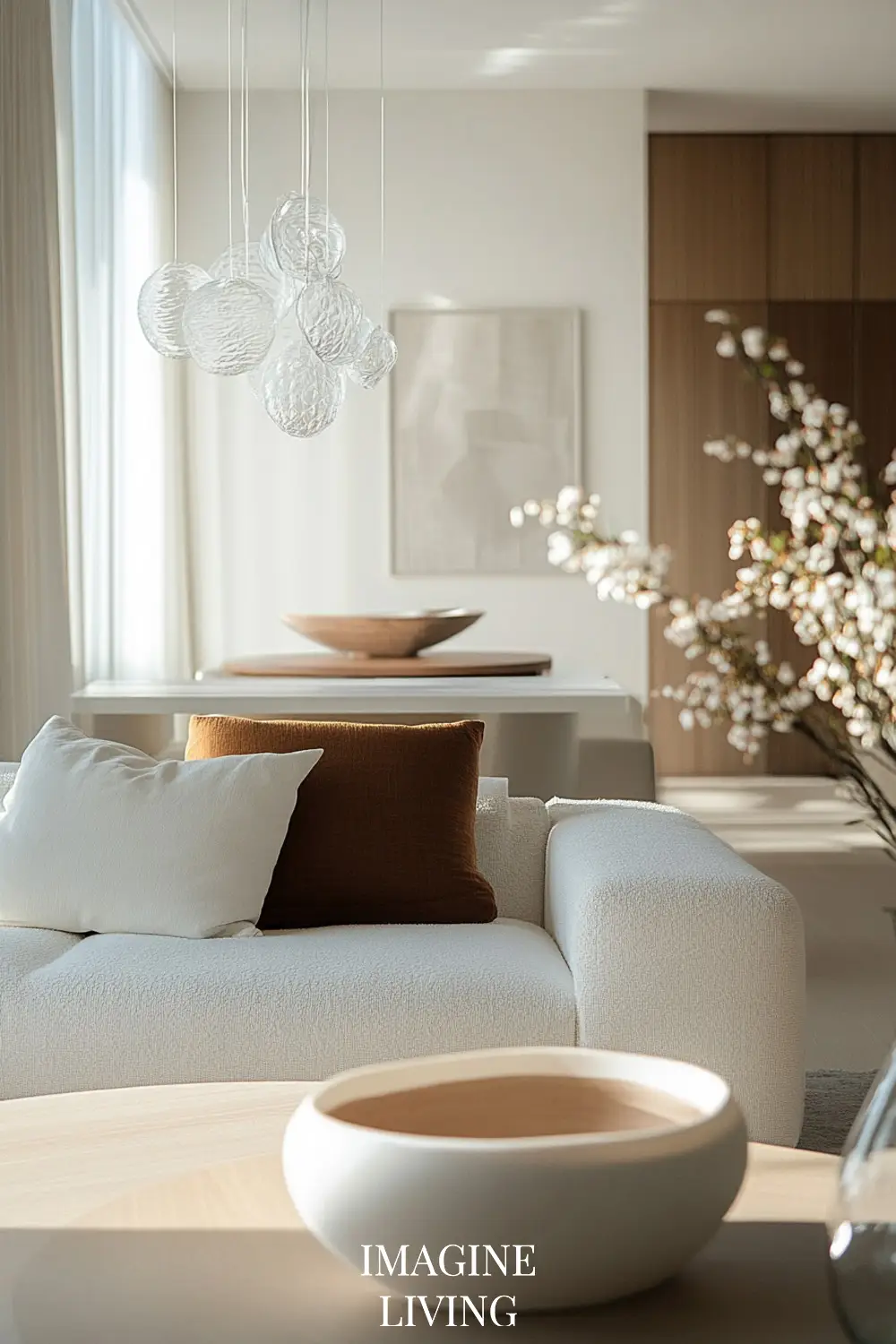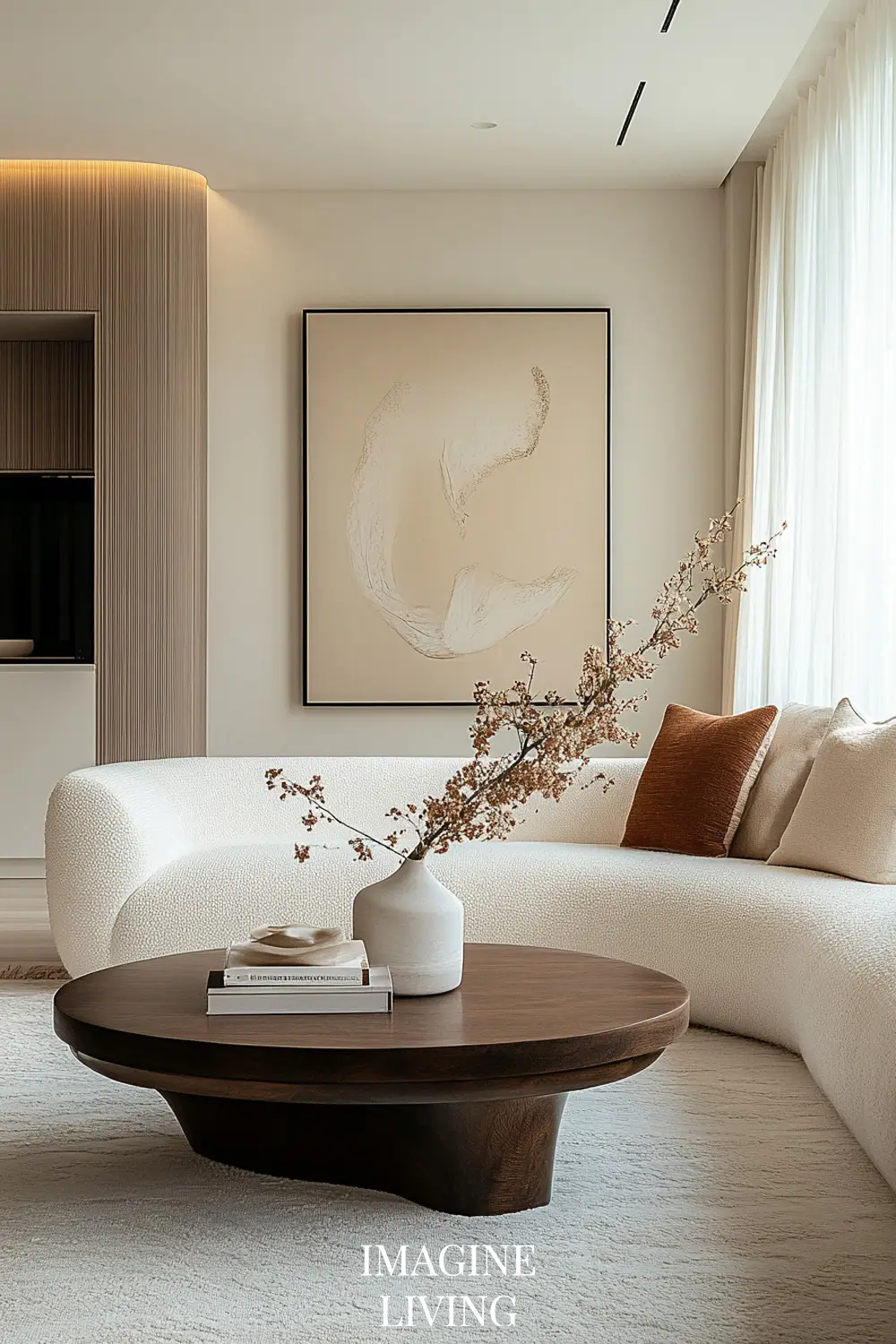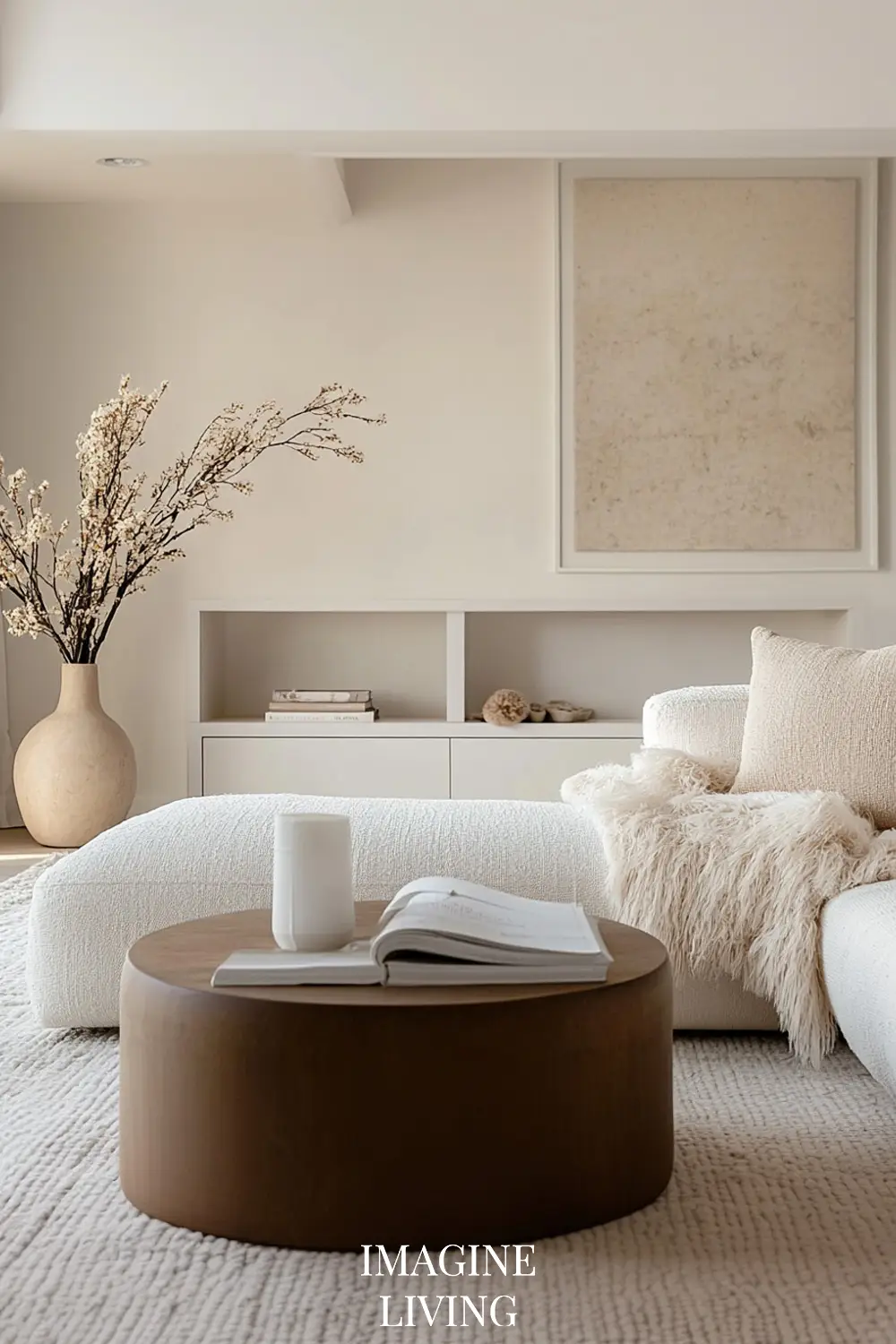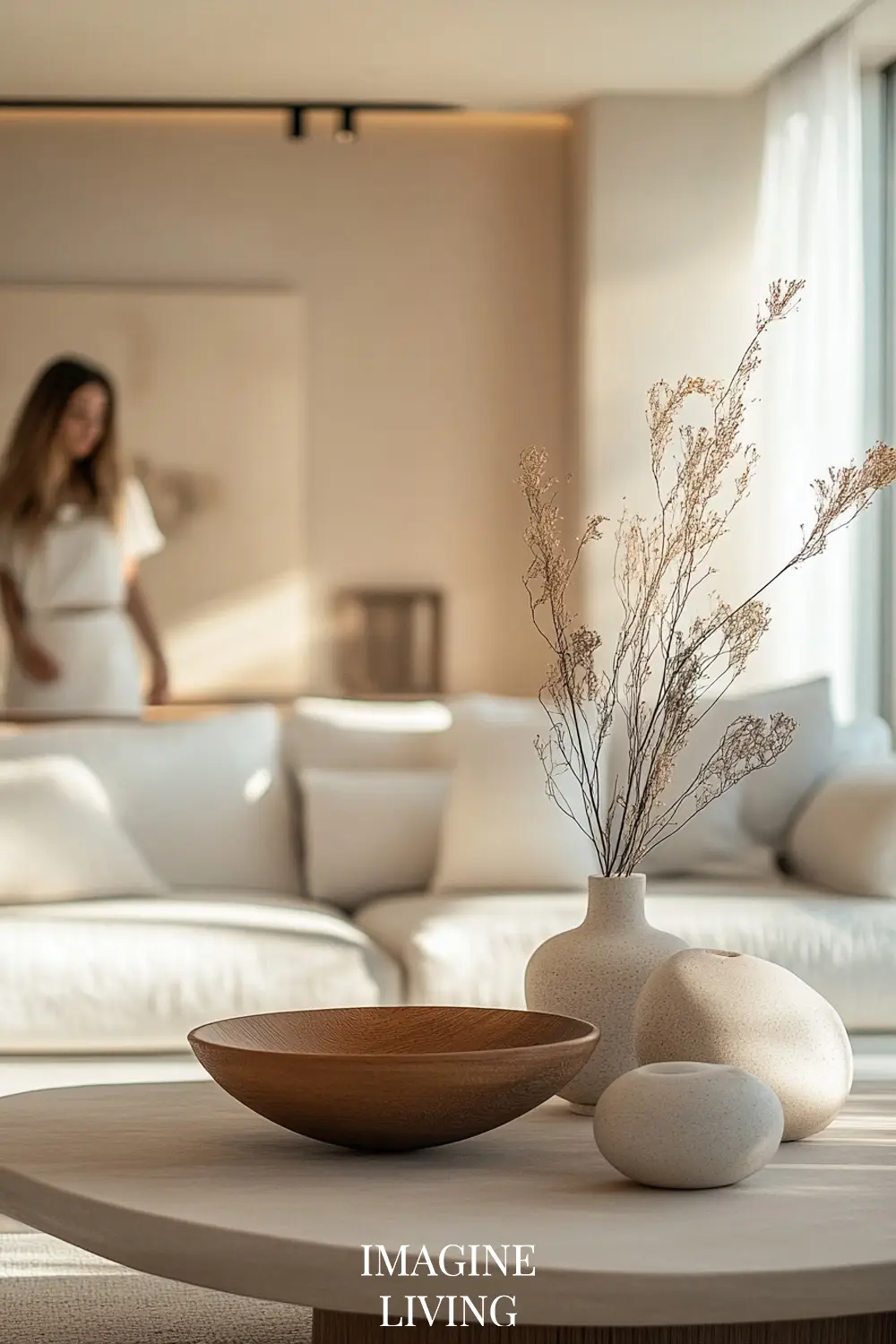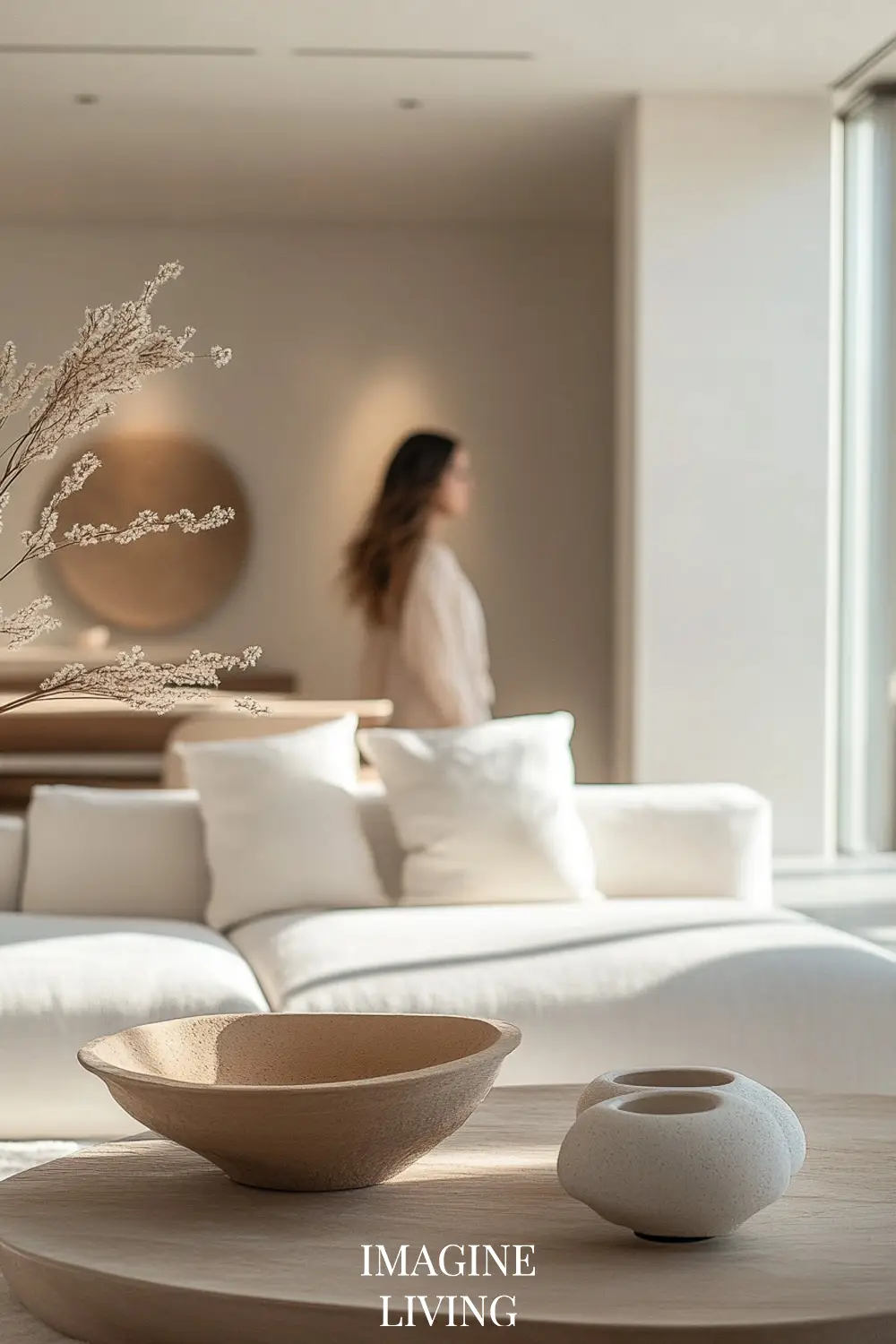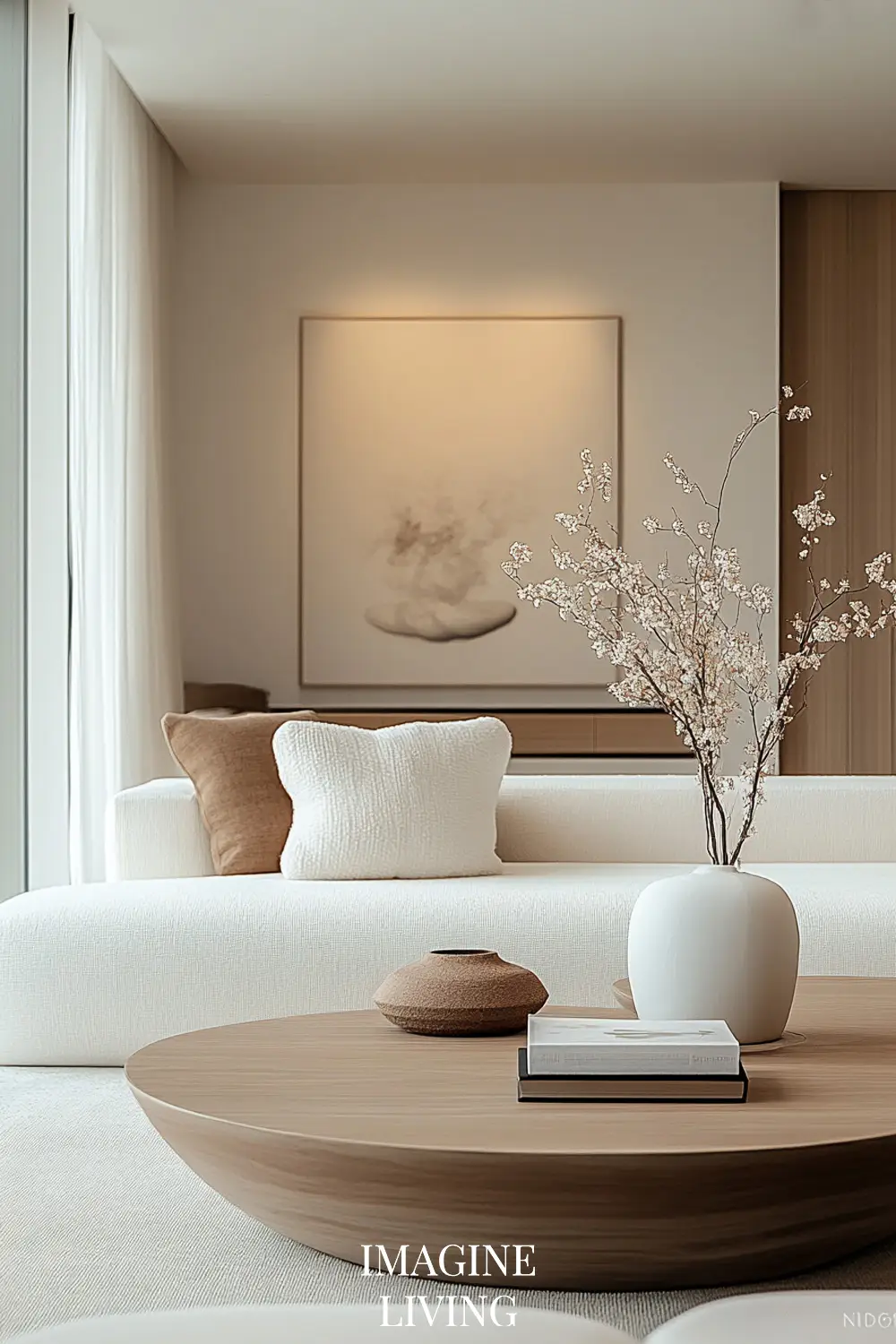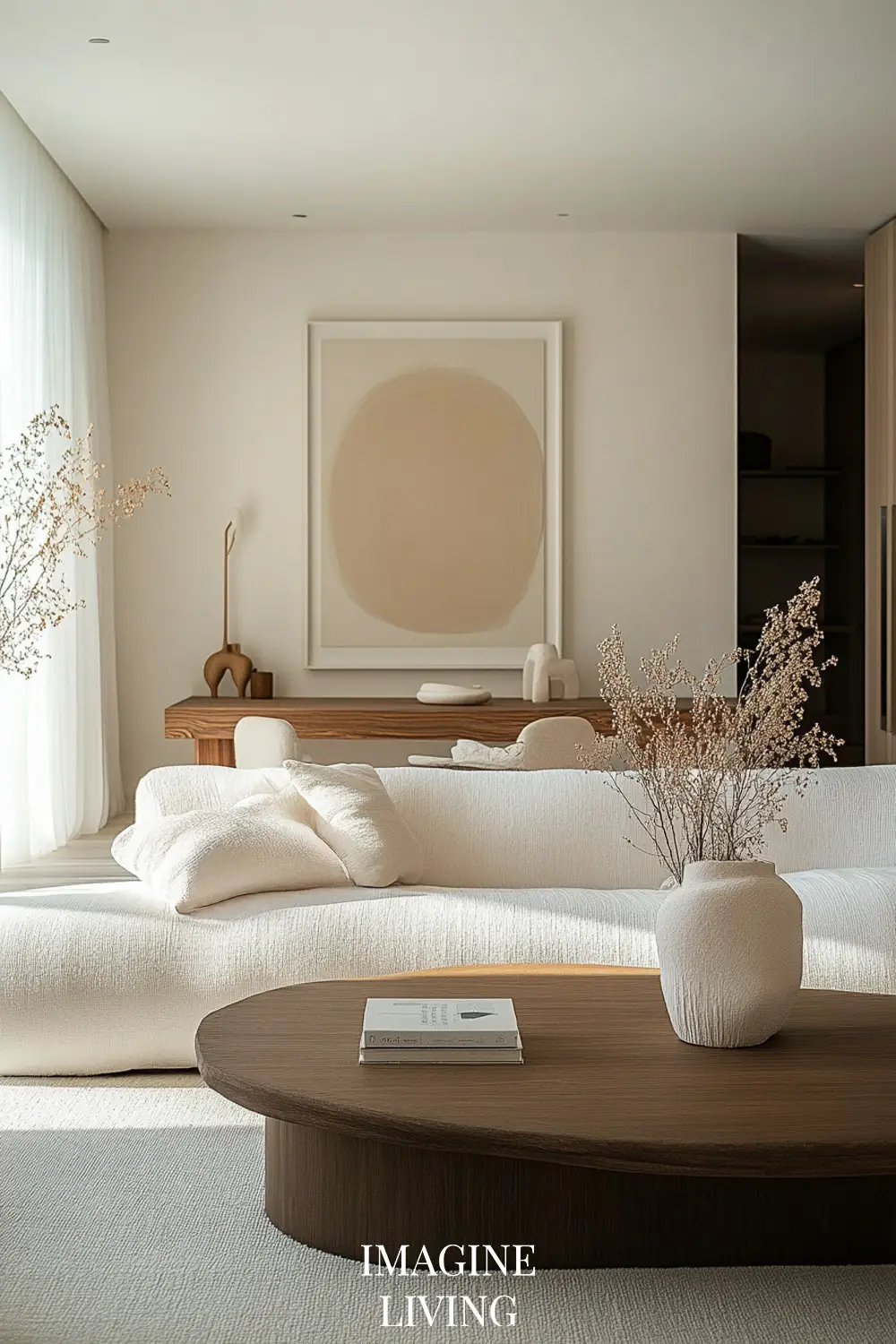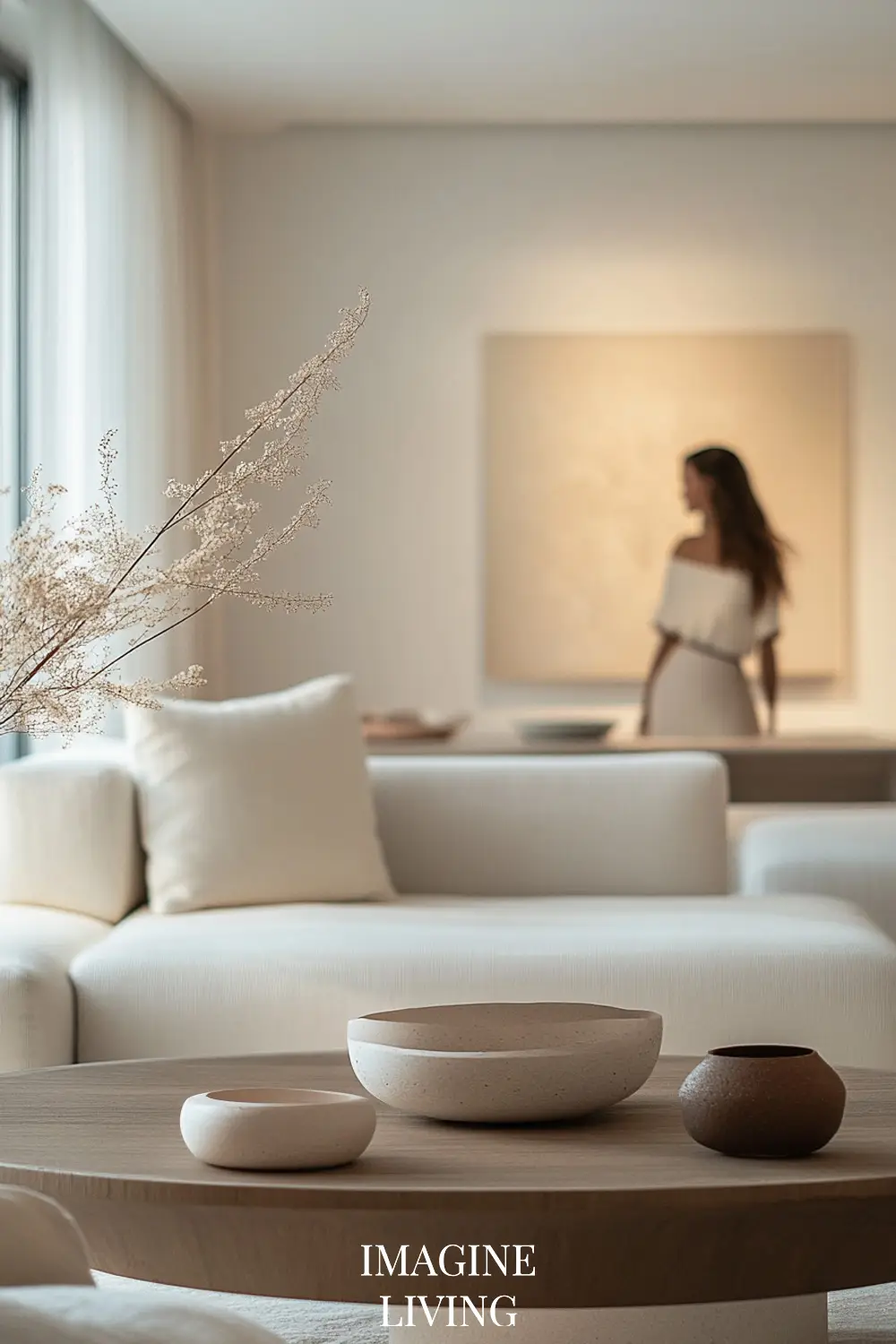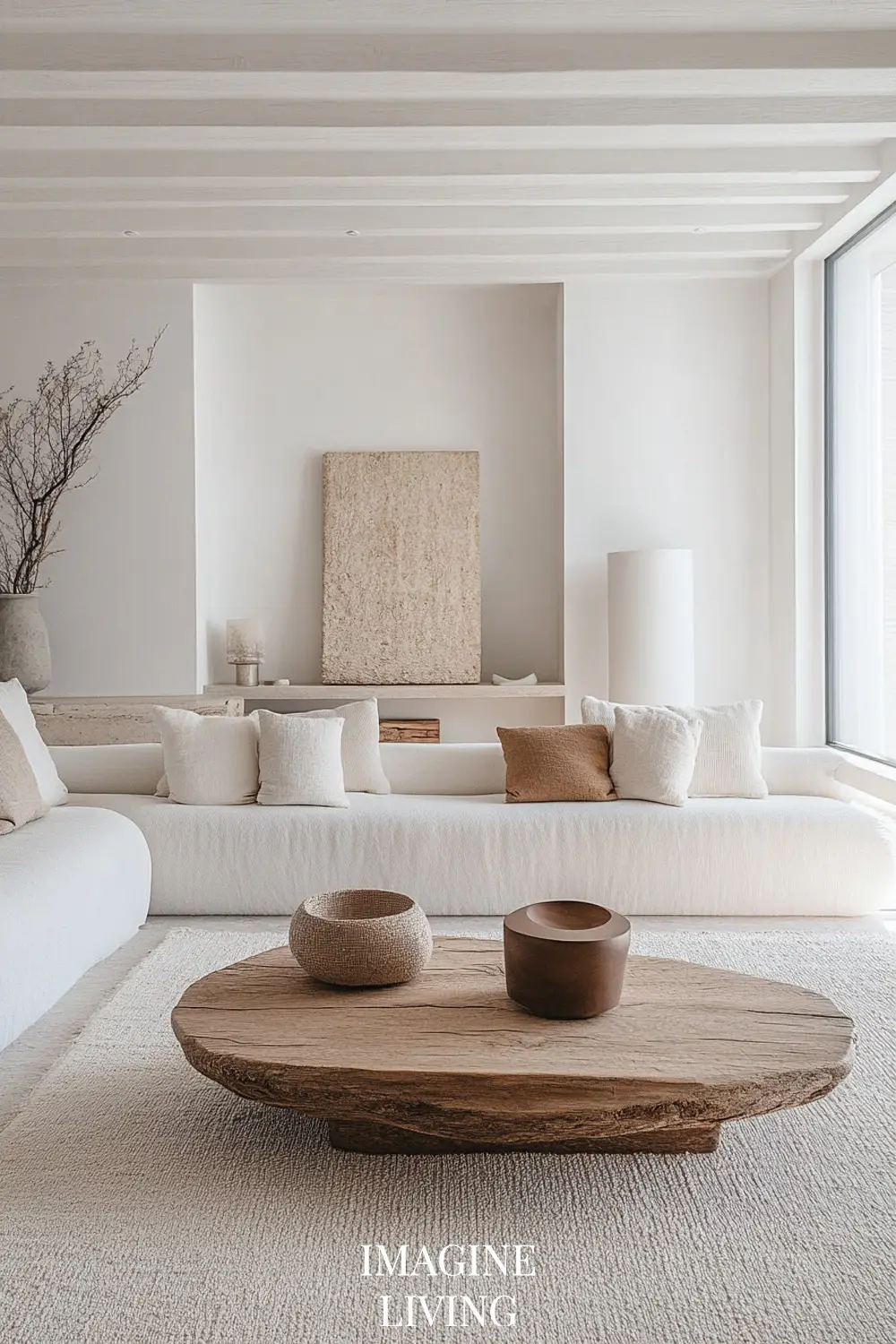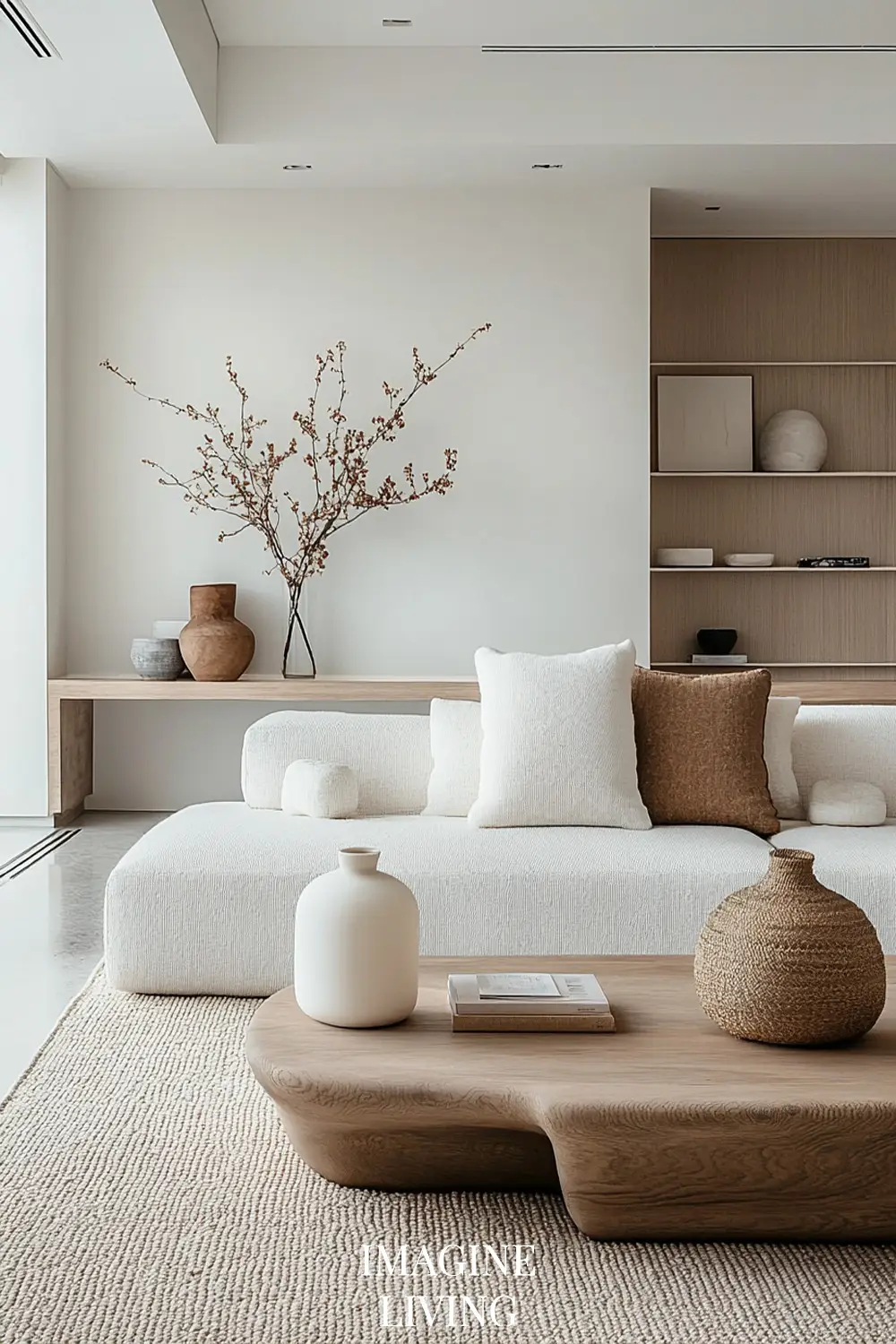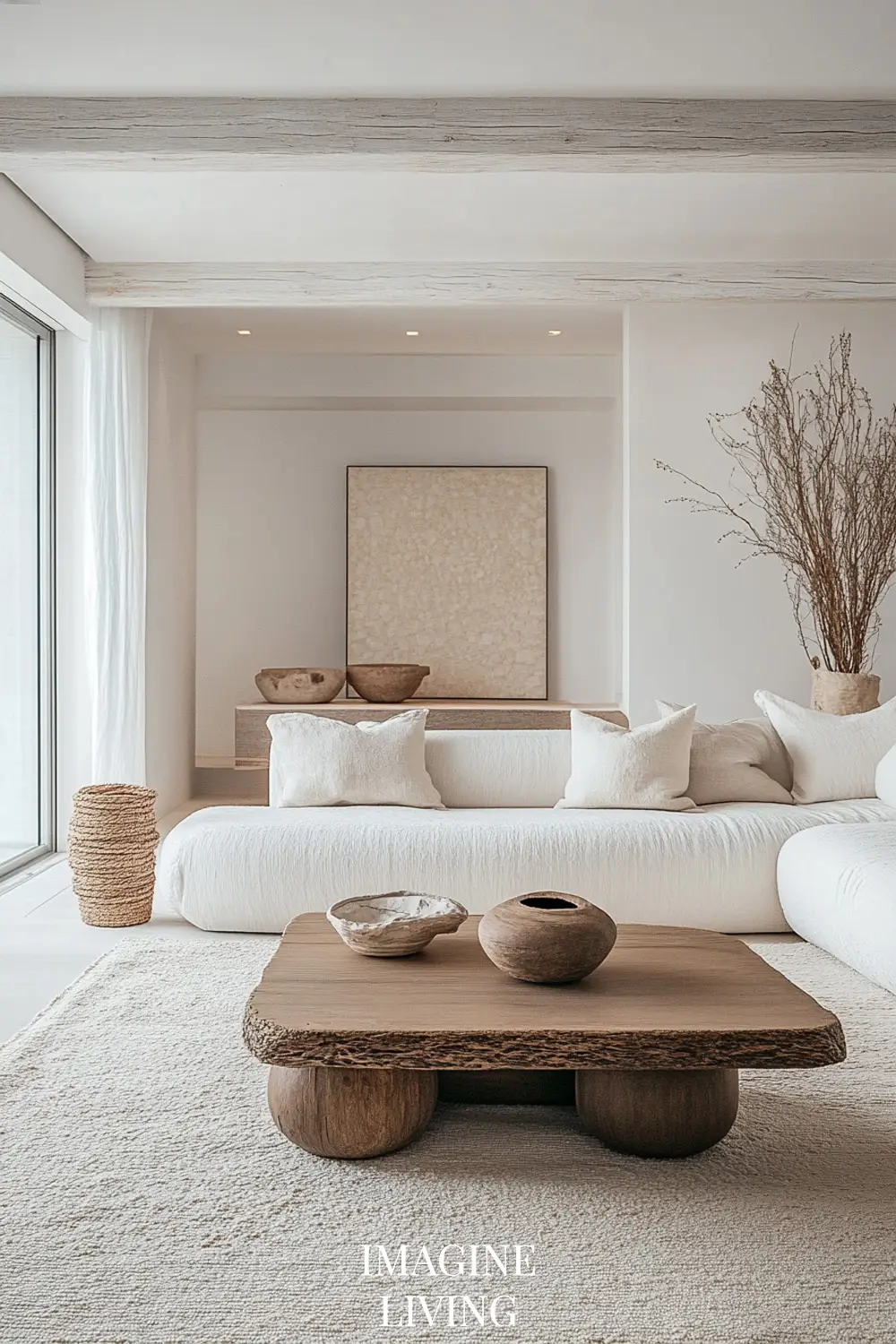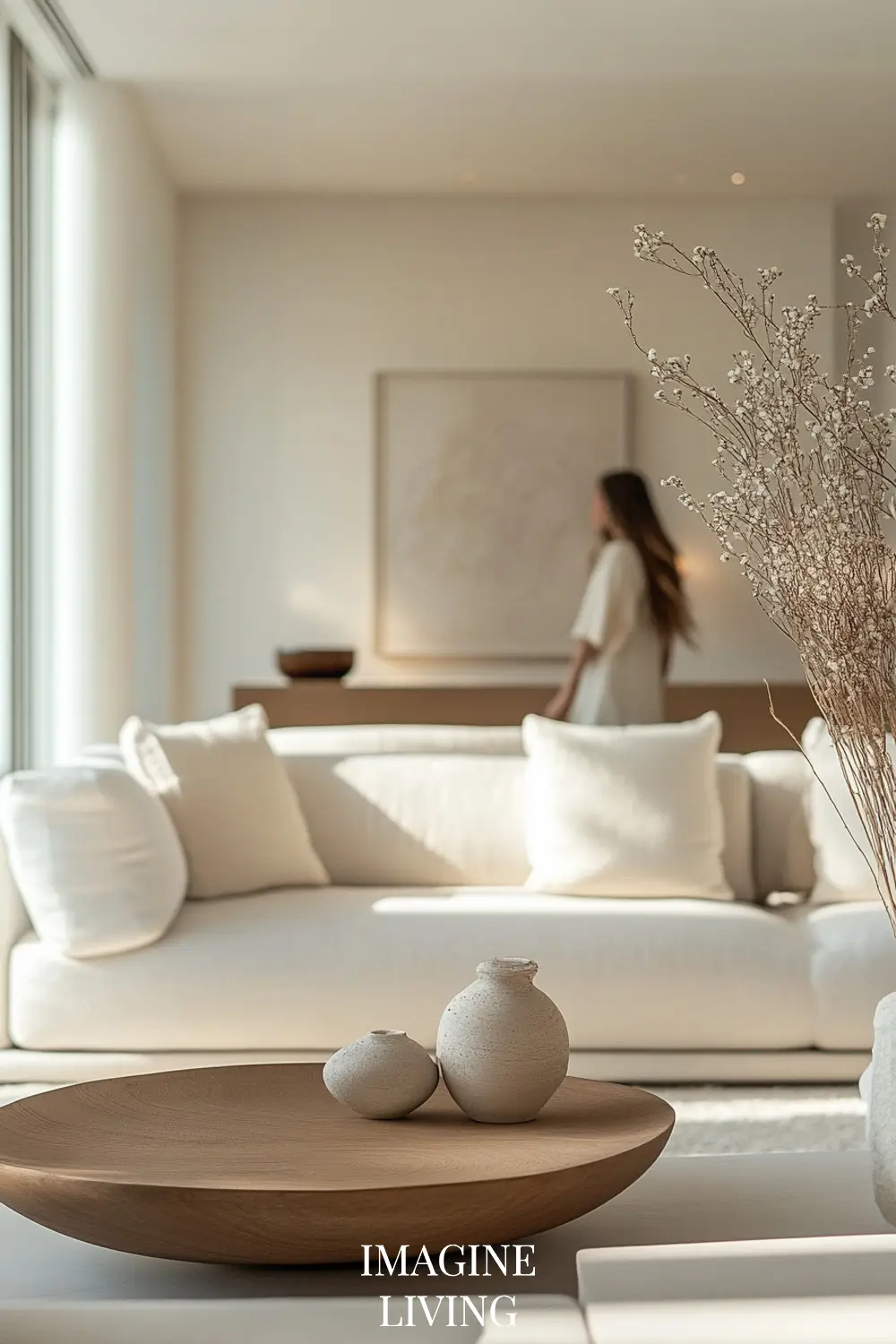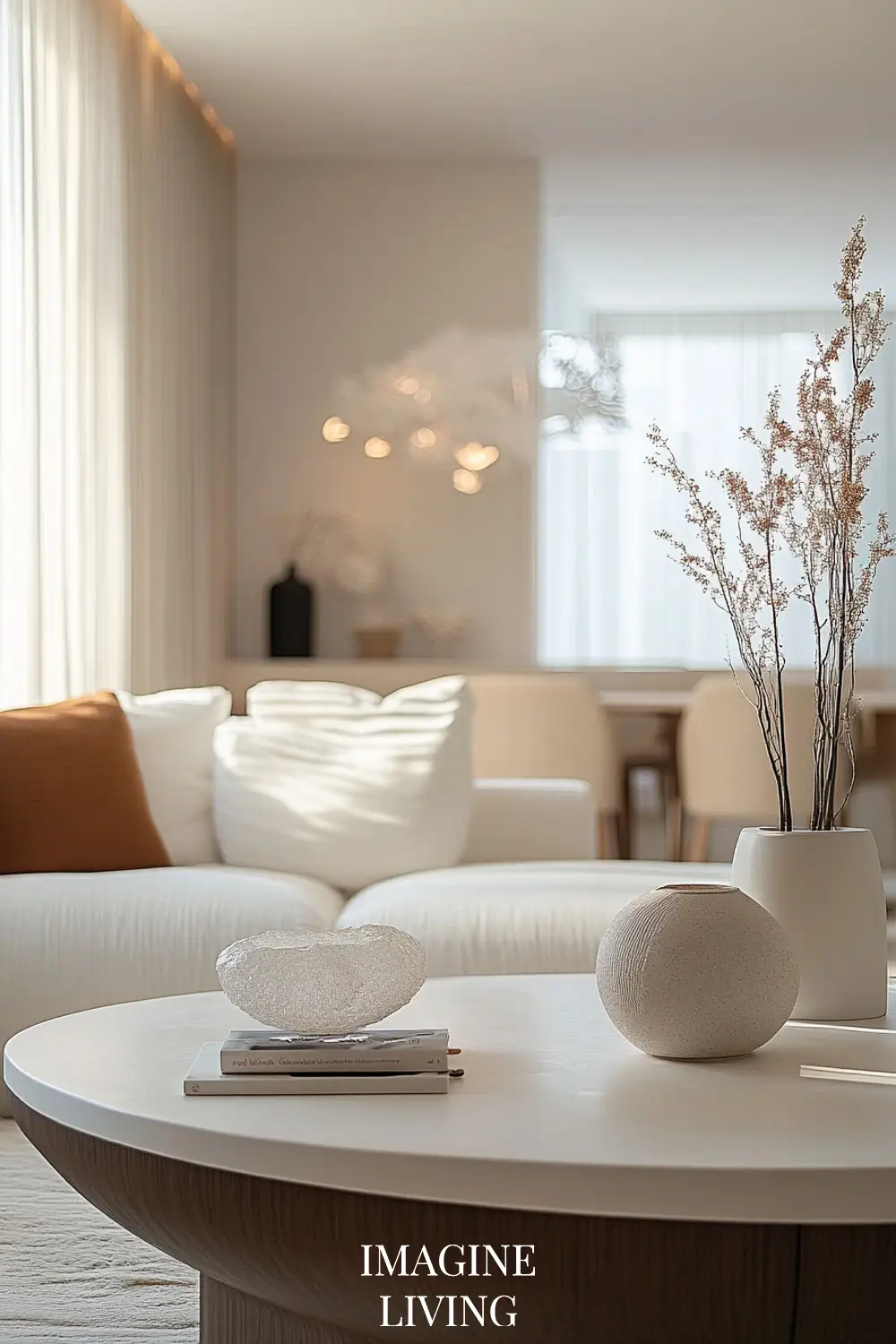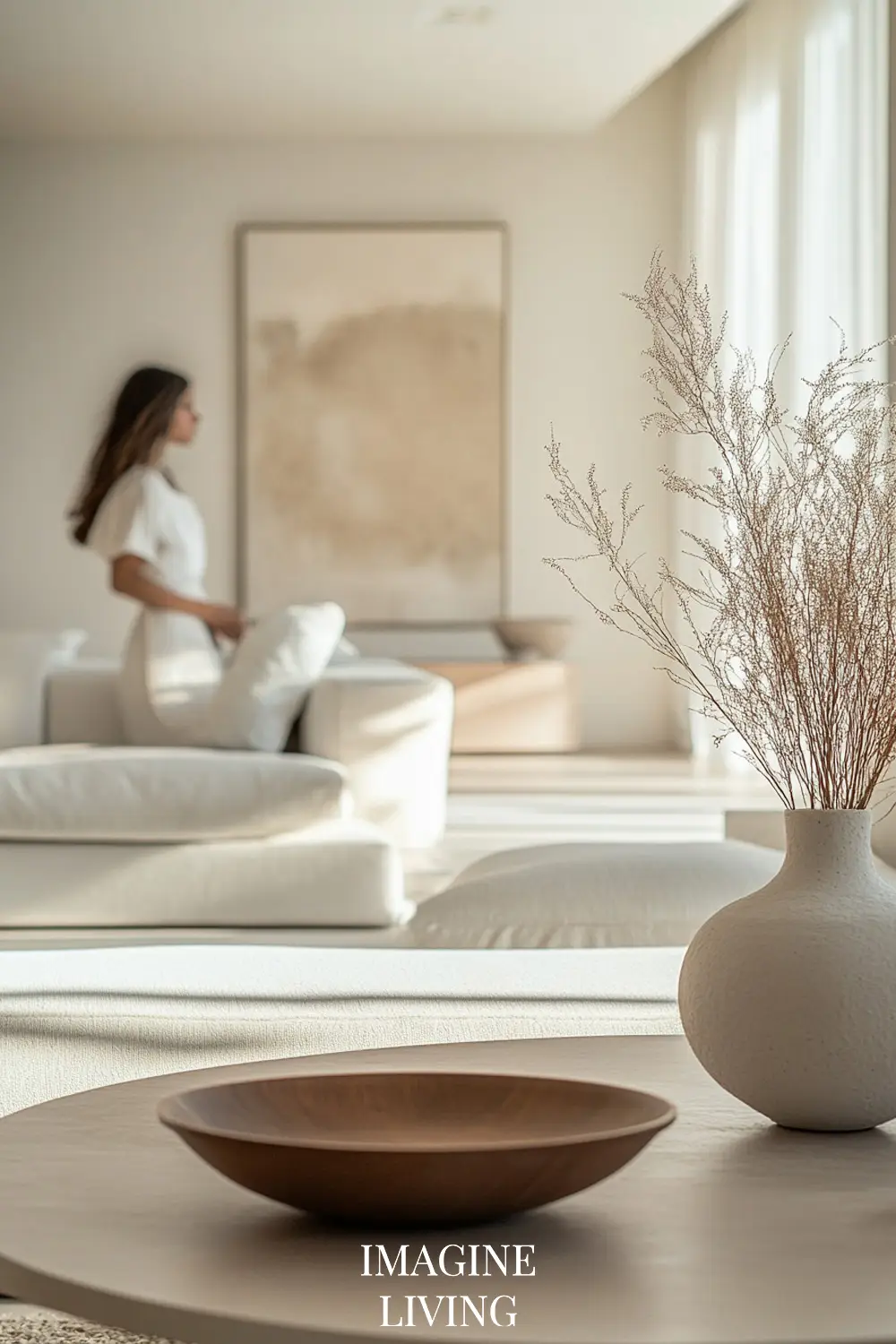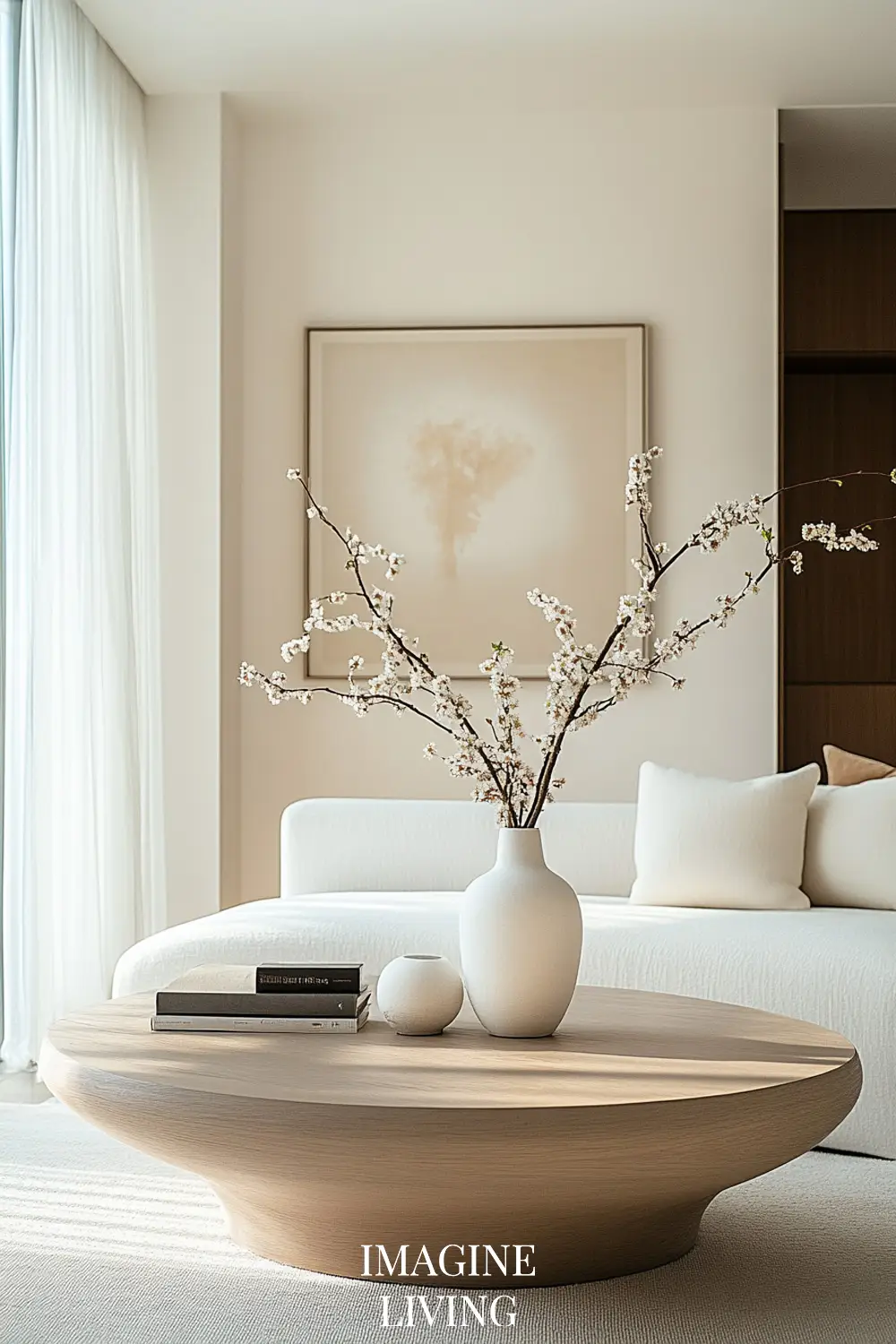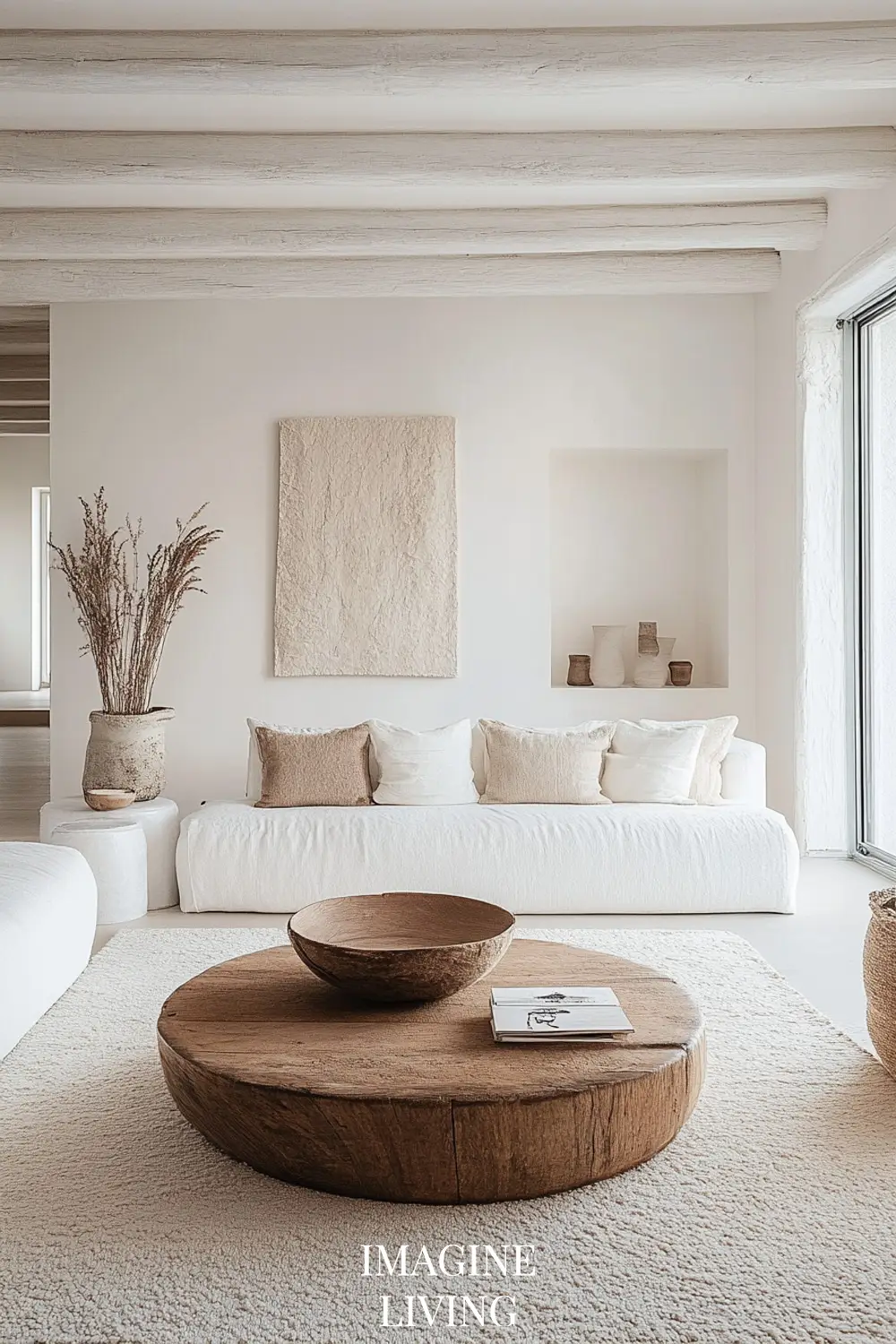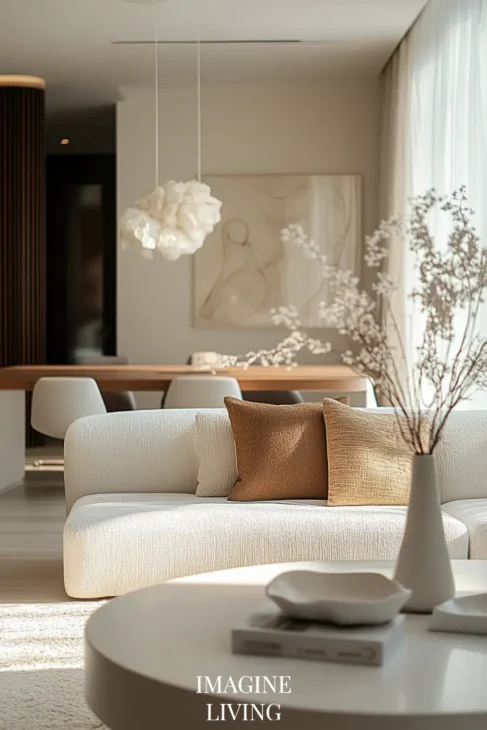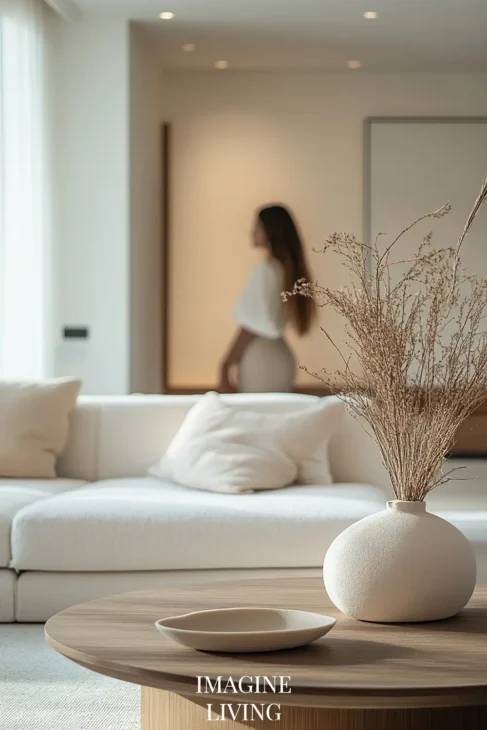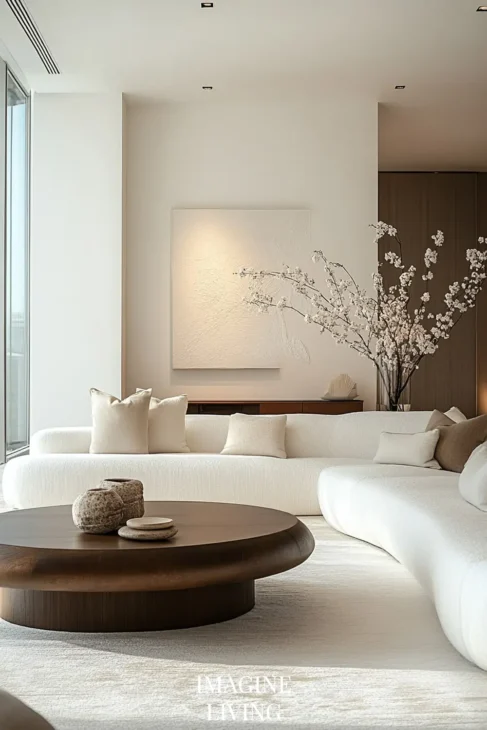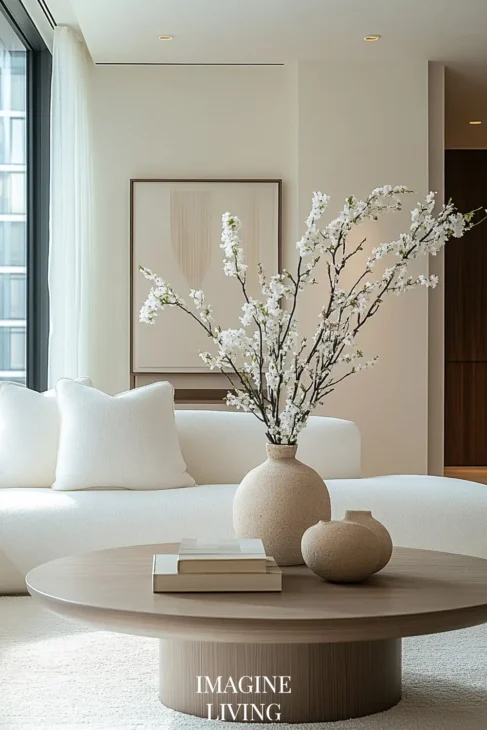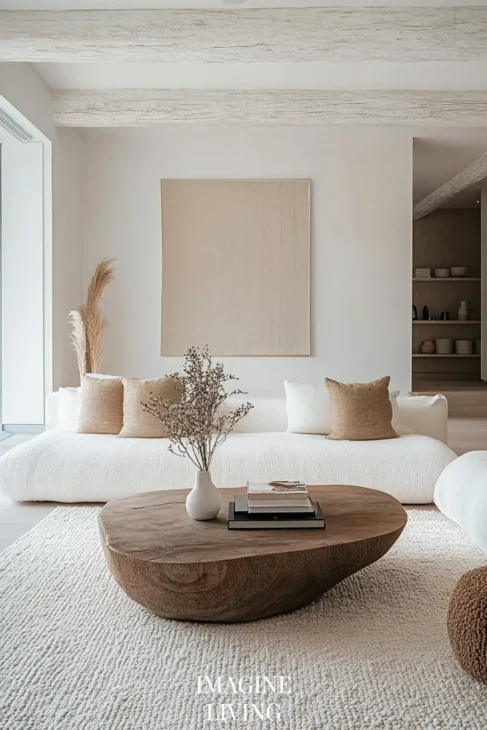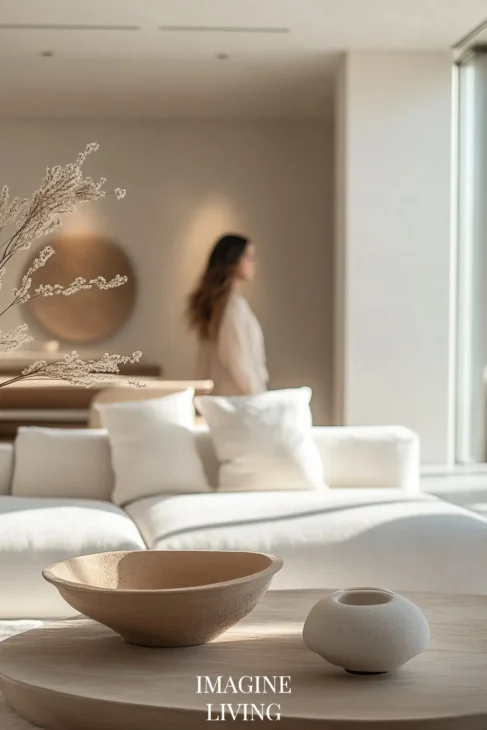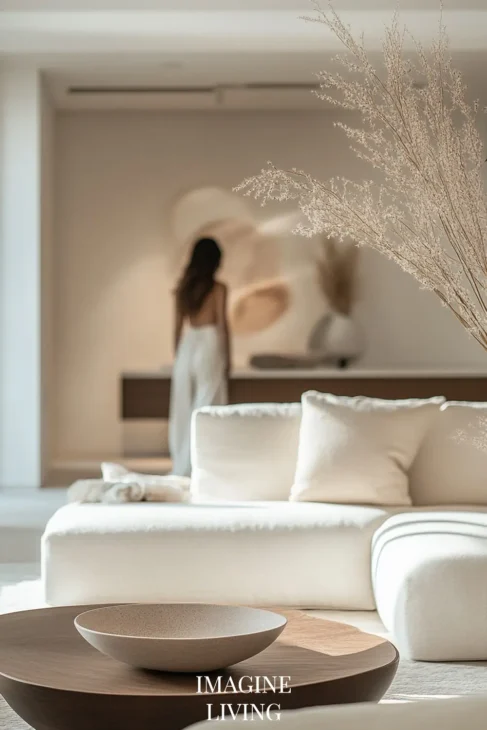Modern Organic Living Room Design Part 2: Deeper Layers of Warmth, Flow, and Texture
Continuing the Art of Soft, Nature-Inspired Interiors
As Modern Organic continues to shape the interiors of 2025, this second part of our design series brings even more inspiration for living rooms rooted in calm, texture, and understated beauty. If you missed the first part, we explored how sculptural furniture, tonal layering, and nature-inspired materials form the foundation of this inviting aesthetic.
In this continuation, we’ll dive into texture layering, thoughtful lighting, styling for smaller spaces, and the subtle balance of curated simplicity. Whether you’re designing from scratch or refreshing a room with intention, these ideas are here to guide you deeper into the soul of Modern Organic living.

Evolving Trends in Modern Organic Interiors
1. Sculptural Minimalism
This season, the silhouette of your furniture speaks volumes. Sculptural lines and soft geometry become the visual language of modern comfort—pieces that feel both functional and artful.
Tip:
Choose curved armchairs or chunky, rounded coffee tables to anchor your space.
Go for one sculptural standout—a soft, pebble-shaped chair or oversized vase—to keep the room airy yet impactful.

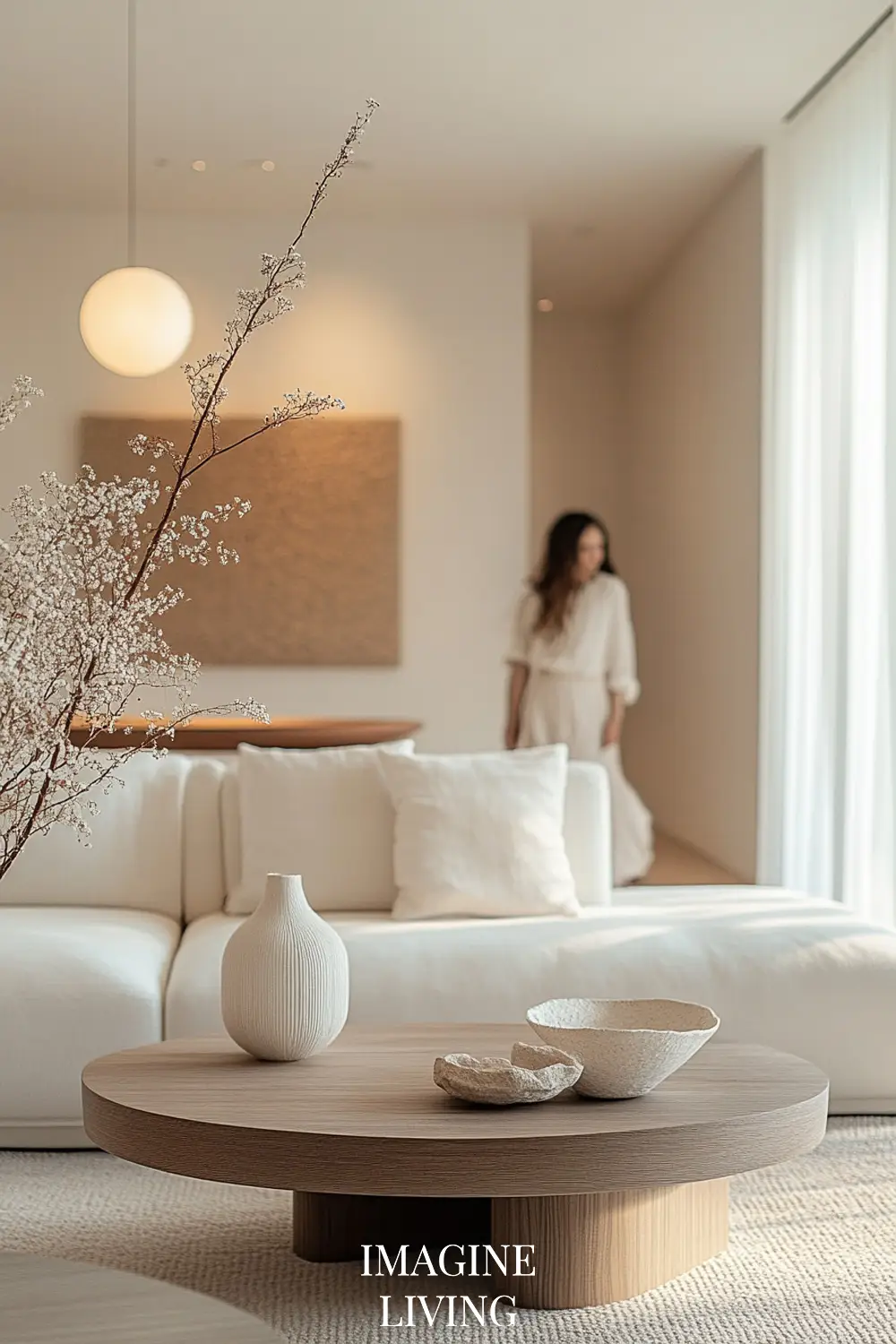
2. Texture Layering as Visual Warmth
Layering textures adds warmth and dimension to neutral palettes without relying on color. The key is thoughtful contrast: soft and structured, smooth and nubby, natural and refined.
Tip: Pair jute rugs with bouclé sofas, stone vases with linen runners, or hand-thrown pottery with raw wood furniture.
Incorporate unexpected touches like a shaggy stool or woven pendant for extra depth.
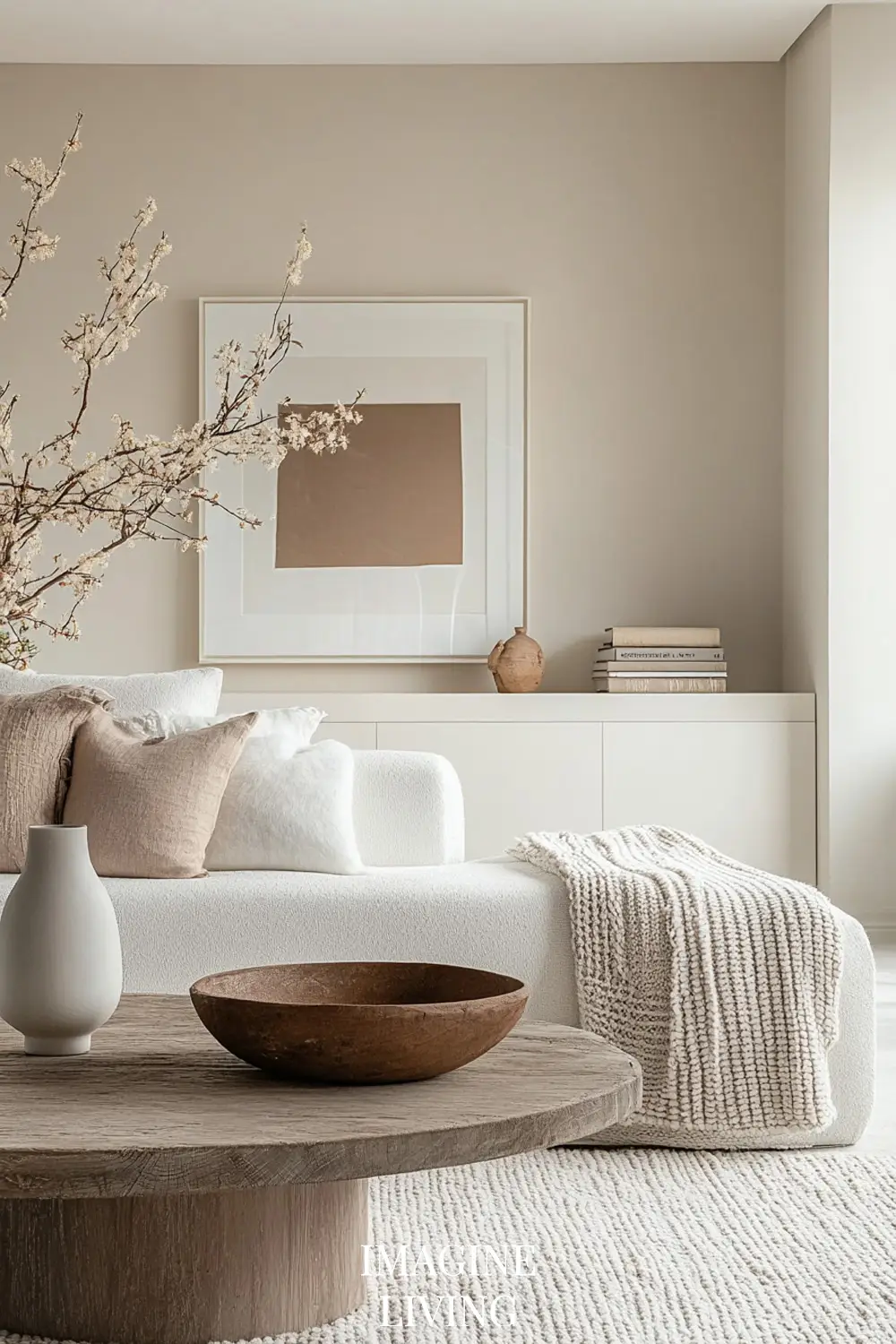

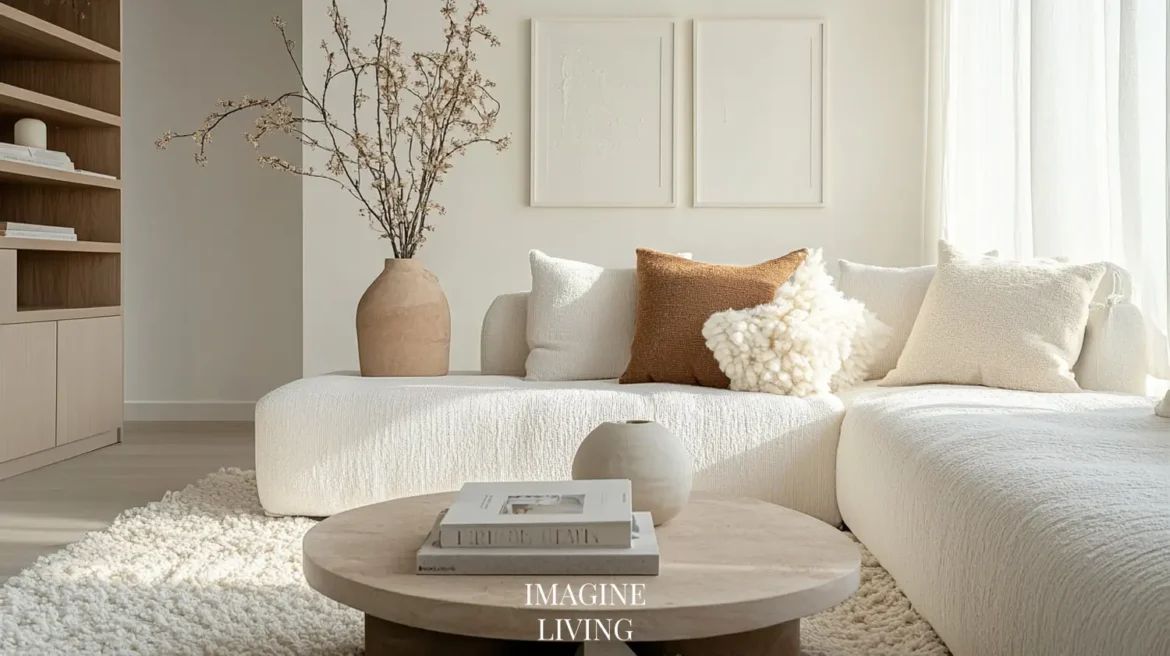
3. Lighting as a Mood Setter
Lighting in a Modern Organic space is meant to soften and ground. Think warm light tones, natural shades, and layered illumination throughout the room.
Tip:
Combine floor lamps, soft-glow sconces, and table lamps with matte finishes for a cohesive ambiance.
Use dimmable lighting to adjust for time of day—let morning light energize, and evening light relax.
4. Soft Styling for Small Spaces
Modern Organic design is incredibly forgiving and adaptable to small living rooms. The emphasis on lightness, clarity, and tonal harmony actually helps smaller spaces feel larger.
Tip: Use low-profile, light-hued furniture to open up the room visually.
Try nesting tables, floating shelves, or pieces with hidden storage to maximize beauty and function.


5. Styling Small Spaces with Modern Organic Principles
Modern Organic interiors are ideal for compact spaces—they breathe. Their low-profile silhouettes, tonal palettes, and light-enhancing materials make rooms feel larger and more grounded.
Tips for small-space styling:
- Low-slung furniture: Choose sofas and chairs that sit closer to the ground to make ceilings feel taller.
- Light color palette: Use creamy neutrals, light woods, and soft whites to reflect natural light and create openness.
- Multi-functional pieces: Storage ottomans, nesting tables, and benches that double as shelves reduce visual clutter.
- Leggy furniture: Incorporate a few raised pieces (e.g., a console with open legs) to add airflow and avoid a “boxed-in” look.
- Vertical thinking: Use wall space for shelving, sconces, or art instead of crowding floor space.
Tip:
Instead of crowding the room with small furniture, opt for fewer, slightly larger pieces. This makes the space feel more intentional and less like a showroom.
Floor-to-ceiling curtains in a soft linen help draw the eye upward and visually expand the room without overwhelming it.
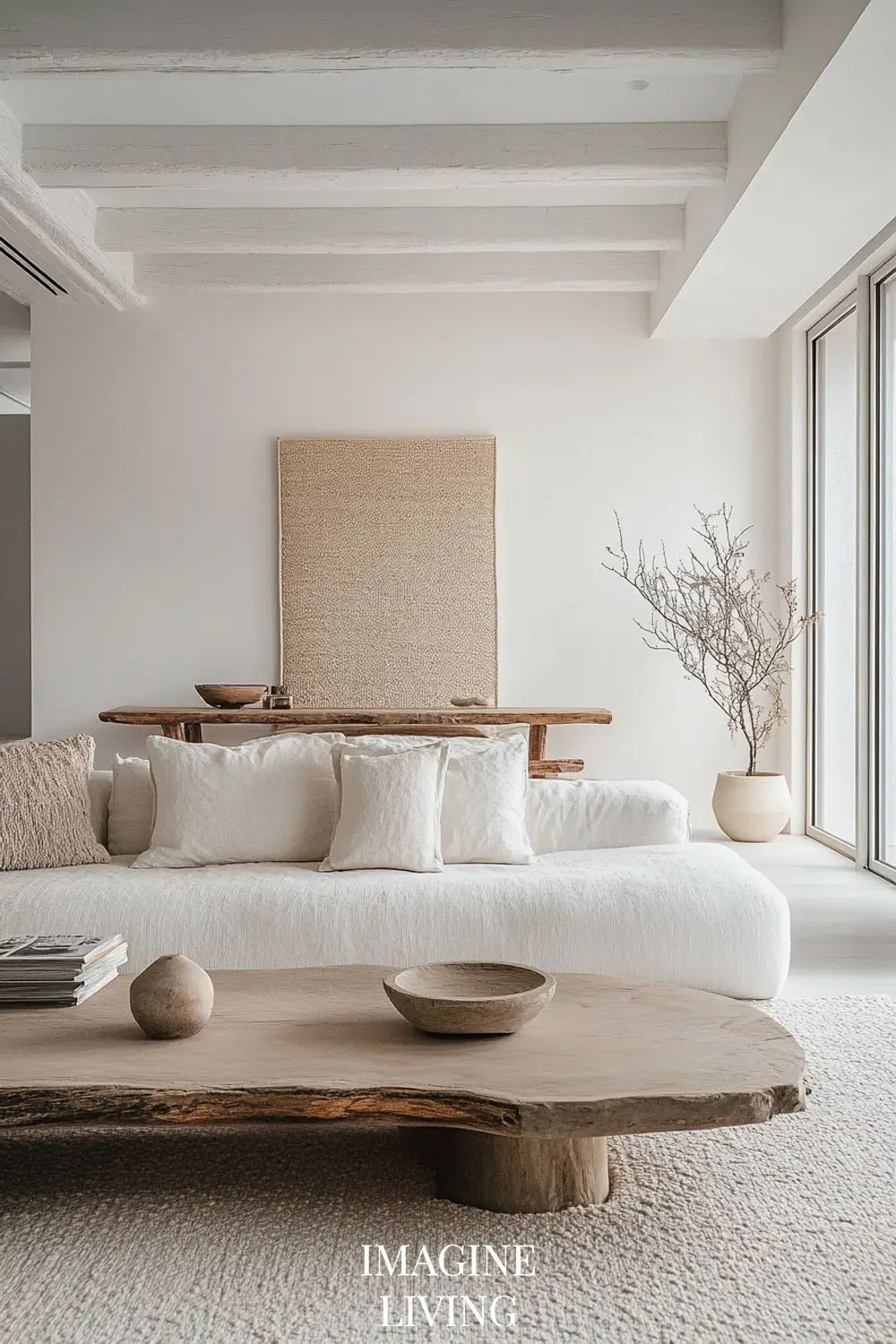
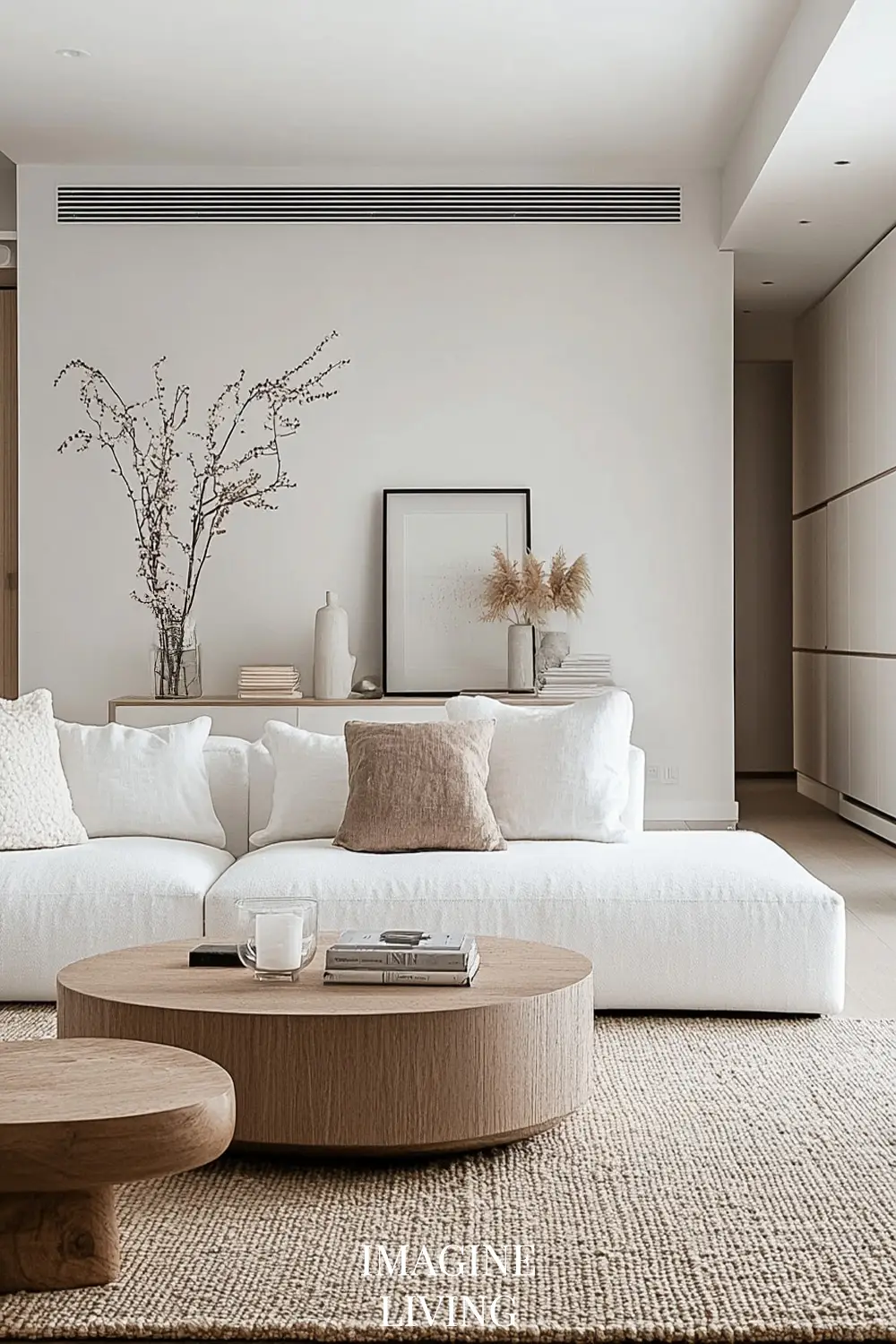
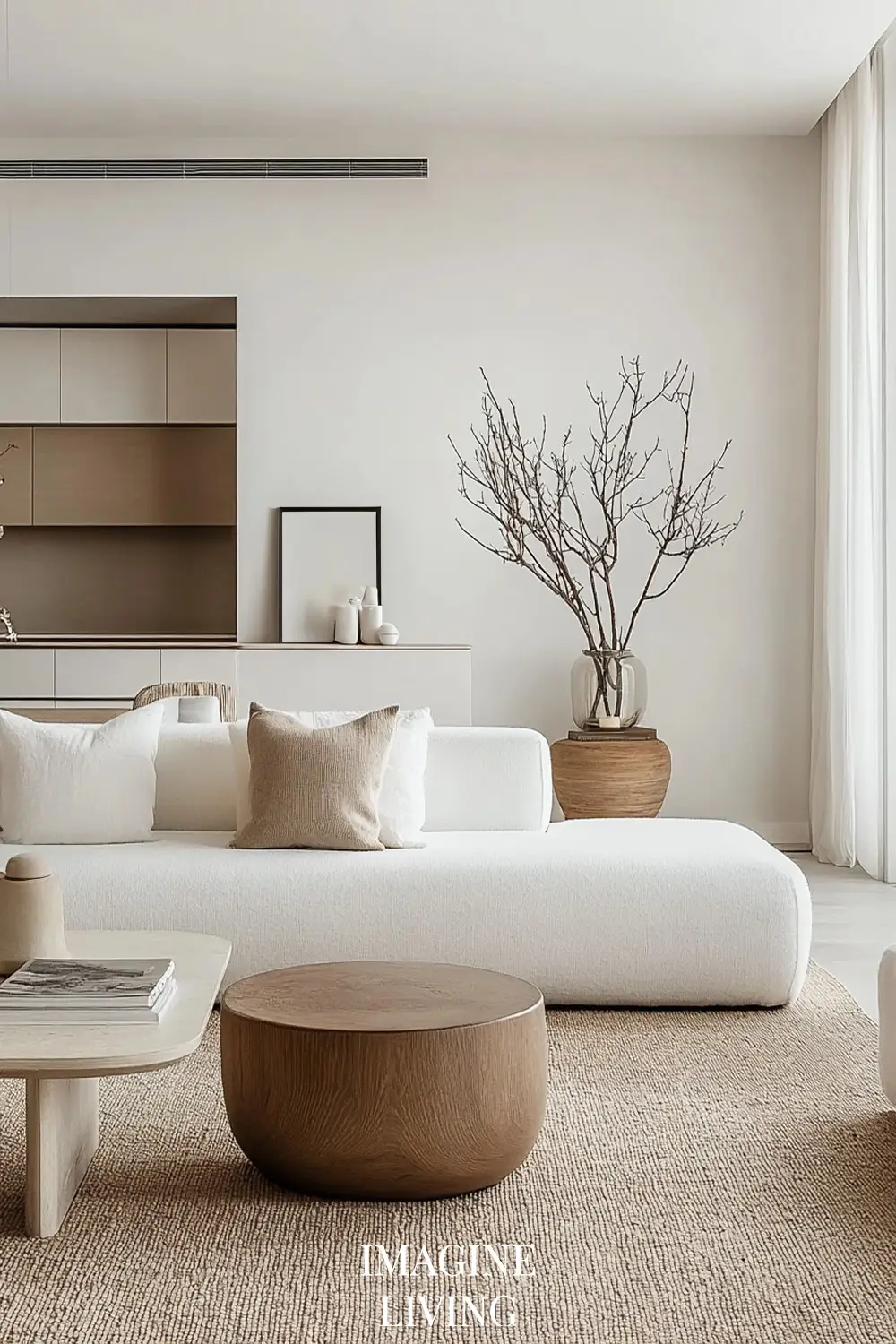
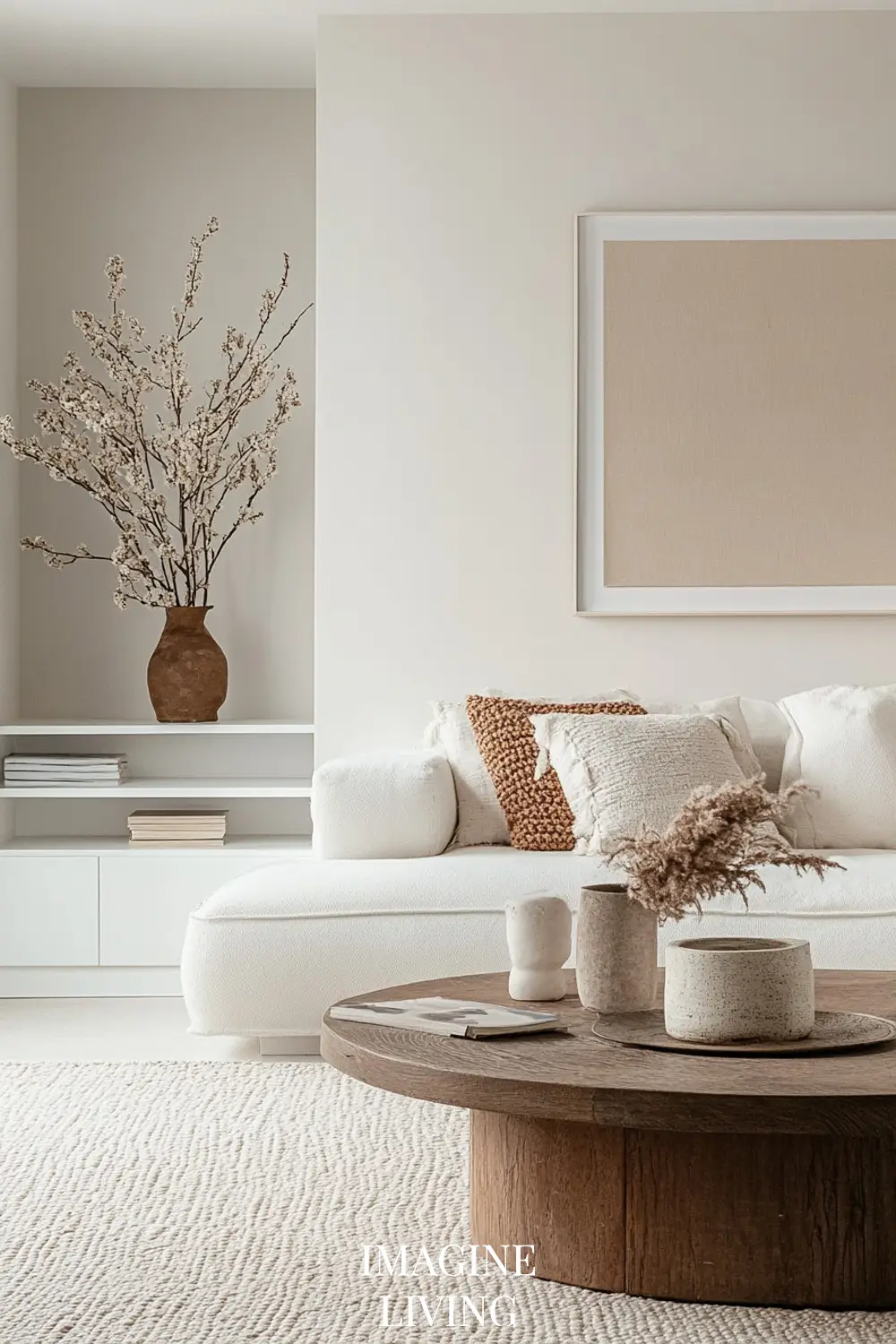

Styling Tips for the Next Level
1. Lighting as a Mood Setter in Modern Organic Spaces
Lighting isn’t just functional—it’s emotional. In a Modern Organic living room, it sets the tone and creates softness. Instead of relying on one ceiling fixture, layer your lighting just like you layer textures.
Think ambient, task, and accent—each one telling part of the story.
Mood lighting layers:
- Ambient: Soft ceiling or wall lighting (flush mounts, hidden LEDs, or linen pendants).
- Task: Table lamps, swing-arm sconces, or reading floor lamps—use warm white bulbs to avoid harshness.
- Accent: LED strip lighting under shelves, candles, or lanterns to add intimacy and a cozy glow.
Materials to look for: Woven rattan, frosted glass, natural clay, linen shades, or matte black finishes.
Tip:
Add dimmers to every light source if possible. It’s the easiest way to shift the atmosphere from day to evening and gives you full control over mood.

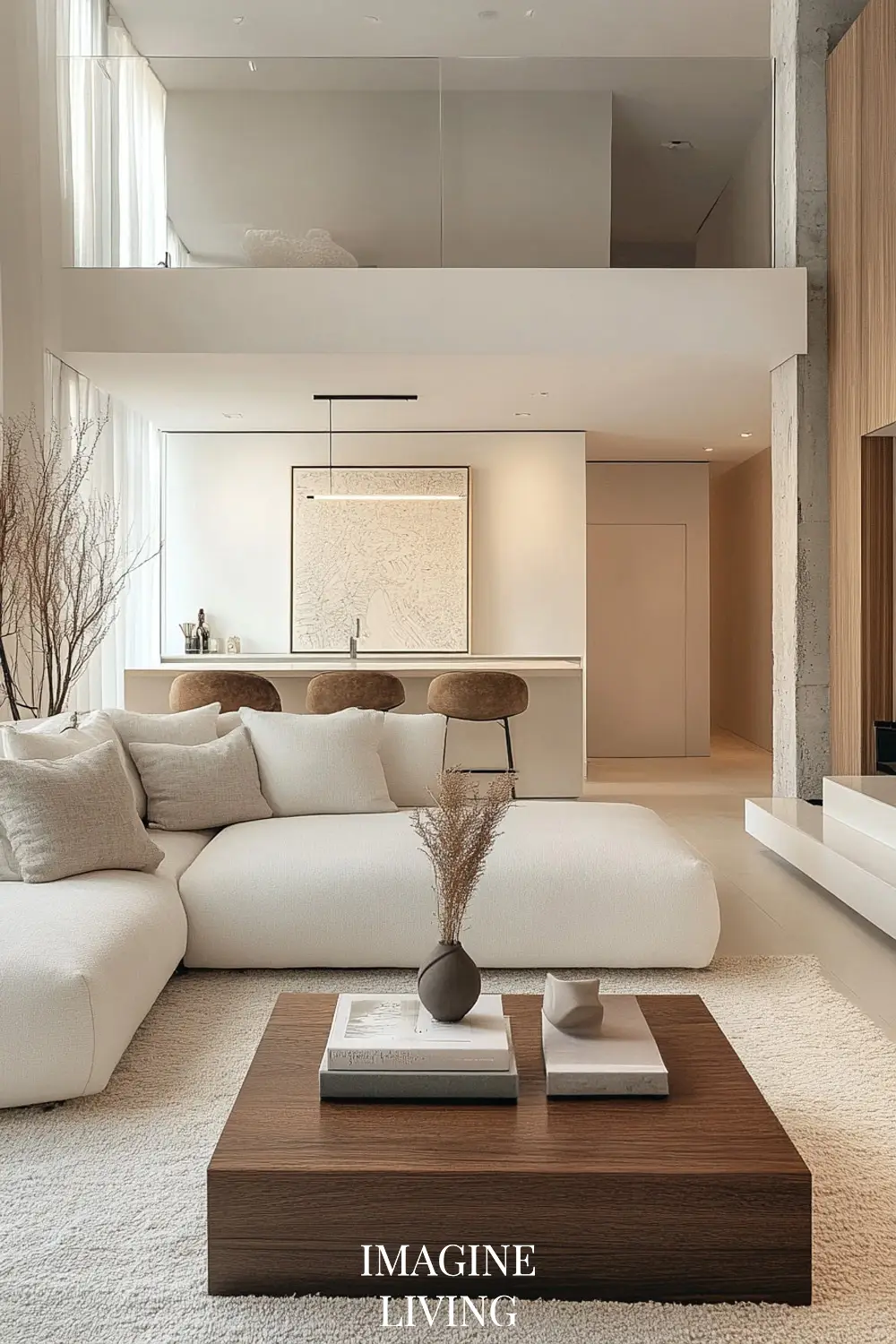
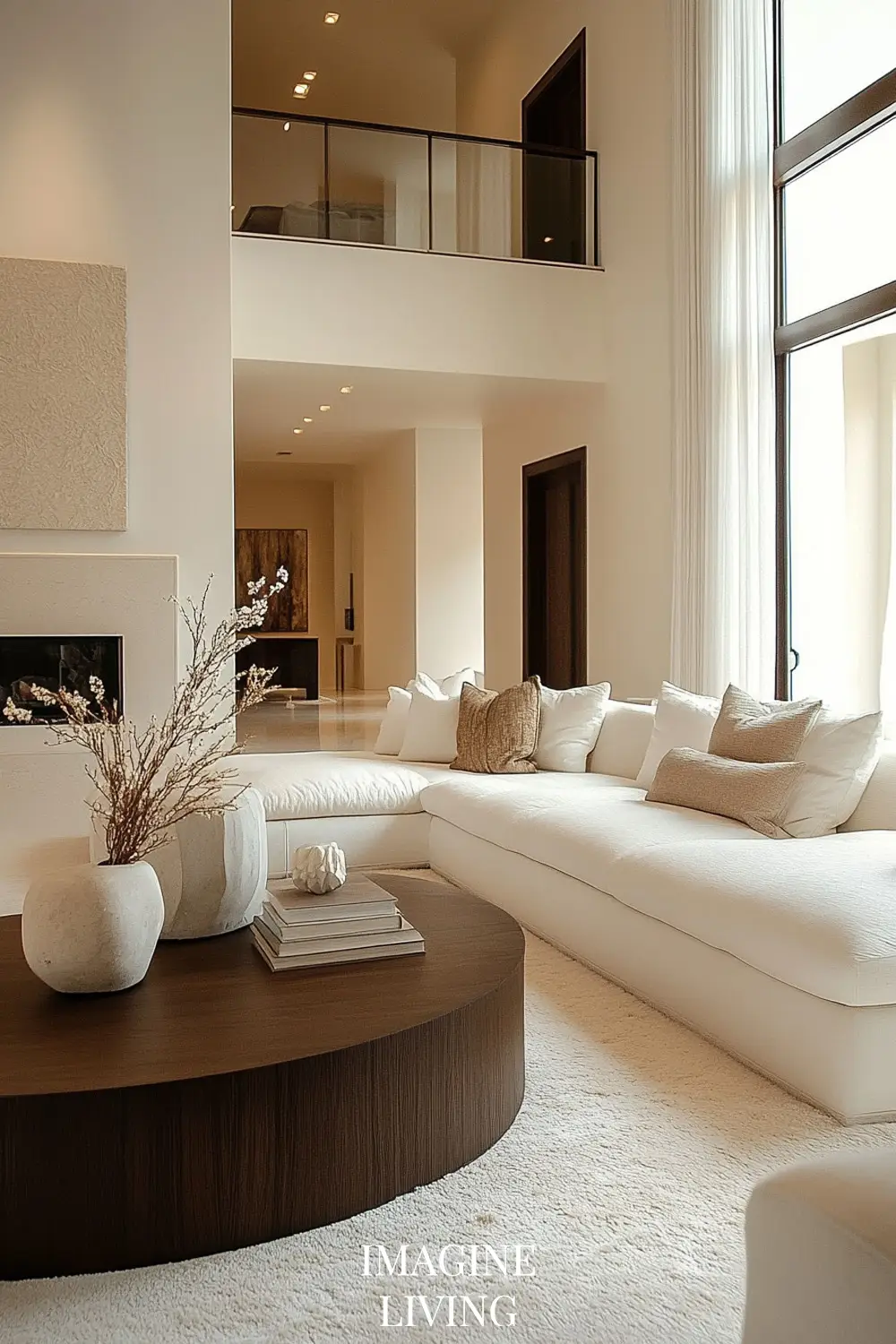
2. Mirrors and Reflective Surfaces
This section enhances your lighting and small space advice, while adding an often-overlooked design tool into the Modern Organic mix.
Why it matters: Mirrors bounce light, expand visual space, and can amplify the softness and balance of organic styling—especially in smaller or moodier rooms.
What to add:
- Use round or organically shaped mirrors to mirror the curves found in furniture.
- Choose frames in raw wood, stone, or matte black to stay true to the aesthetic.
- Place mirrors strategically across from windows or lamps to double the light source.
Tip:
Try a leaning floor mirror in a corner with a soft linen curtain nearby—it blends practicality with quiet beauty.
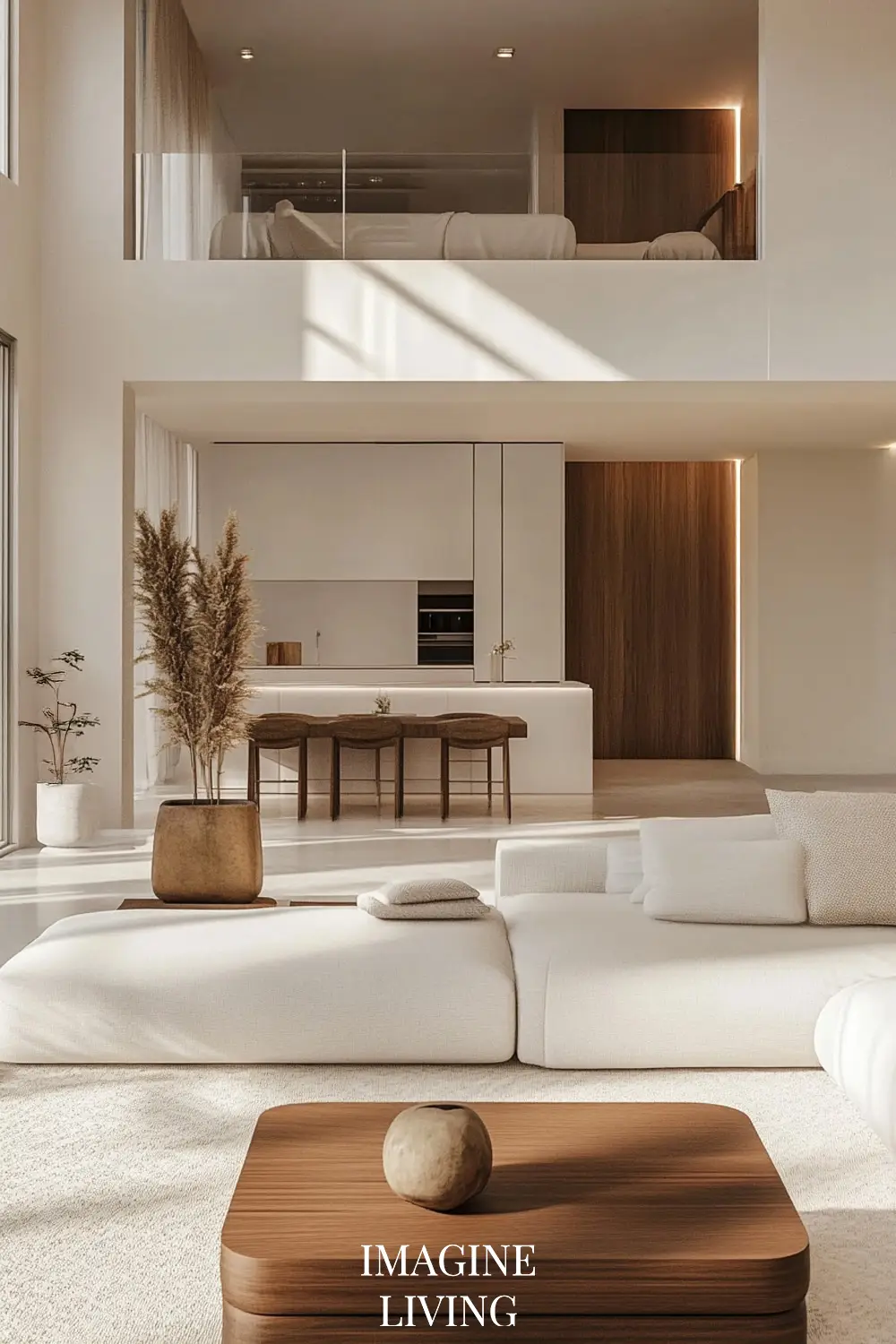

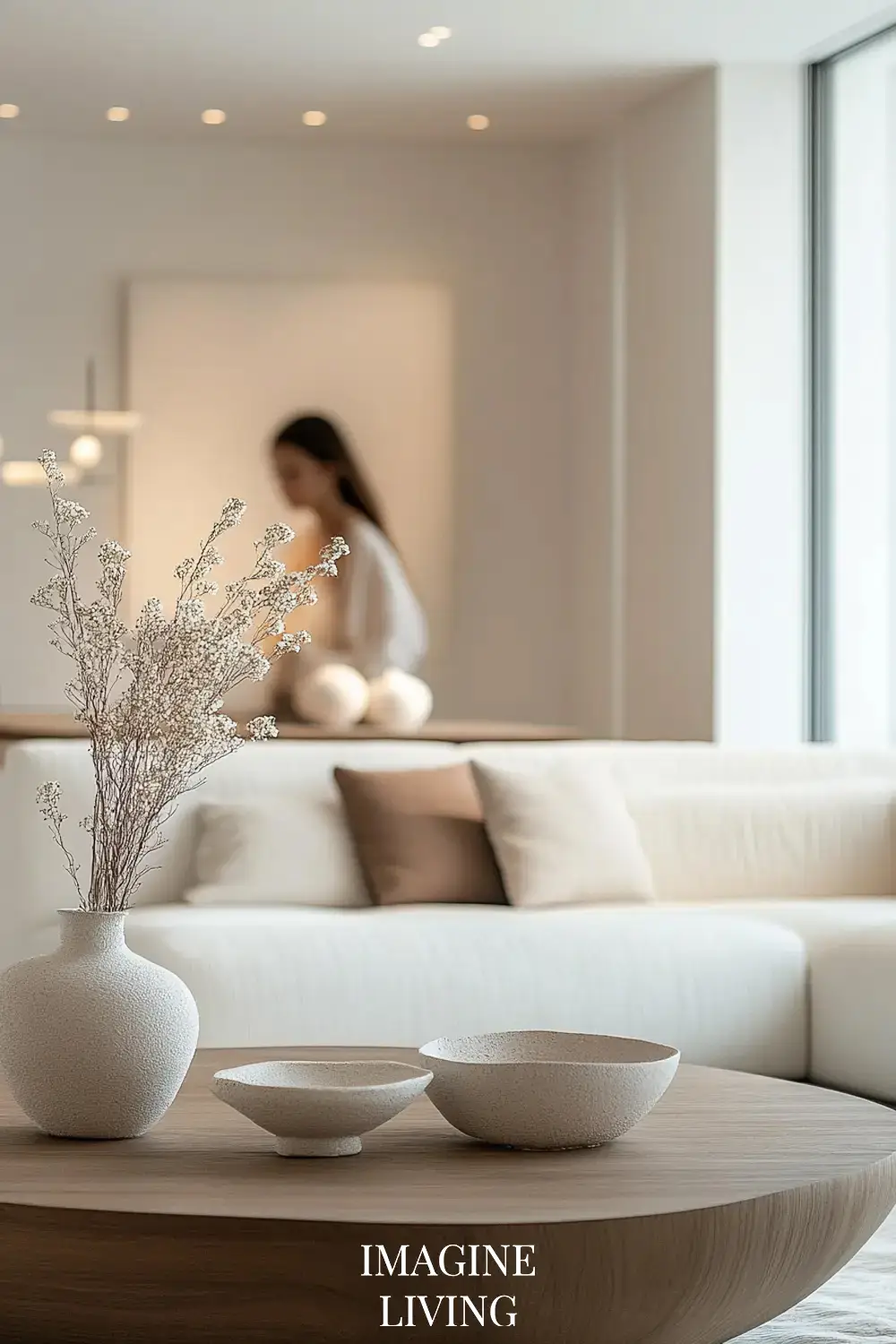
3. Color Palettes with Character
While soft neutrals are core to Modern Organic, adding dimension through tone-on-tone accents brings life. Creams, oat, stone, and warm greige layered thoughtfully allow light to bounce and textures to shine.
Tip:
Use 3–4 tones of the same color family—such as ivory, flax, and wheat—in different materials for effortless harmony.
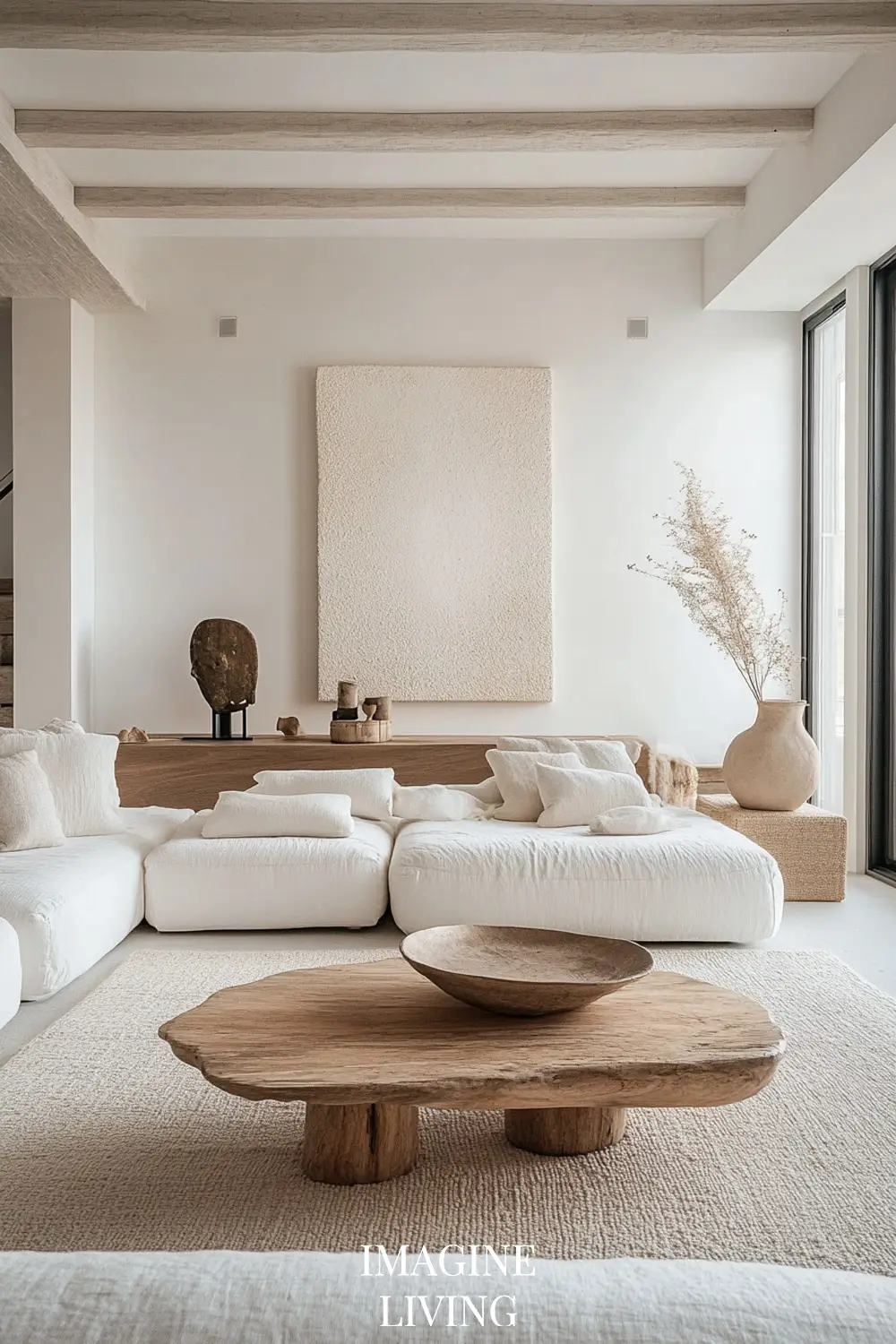
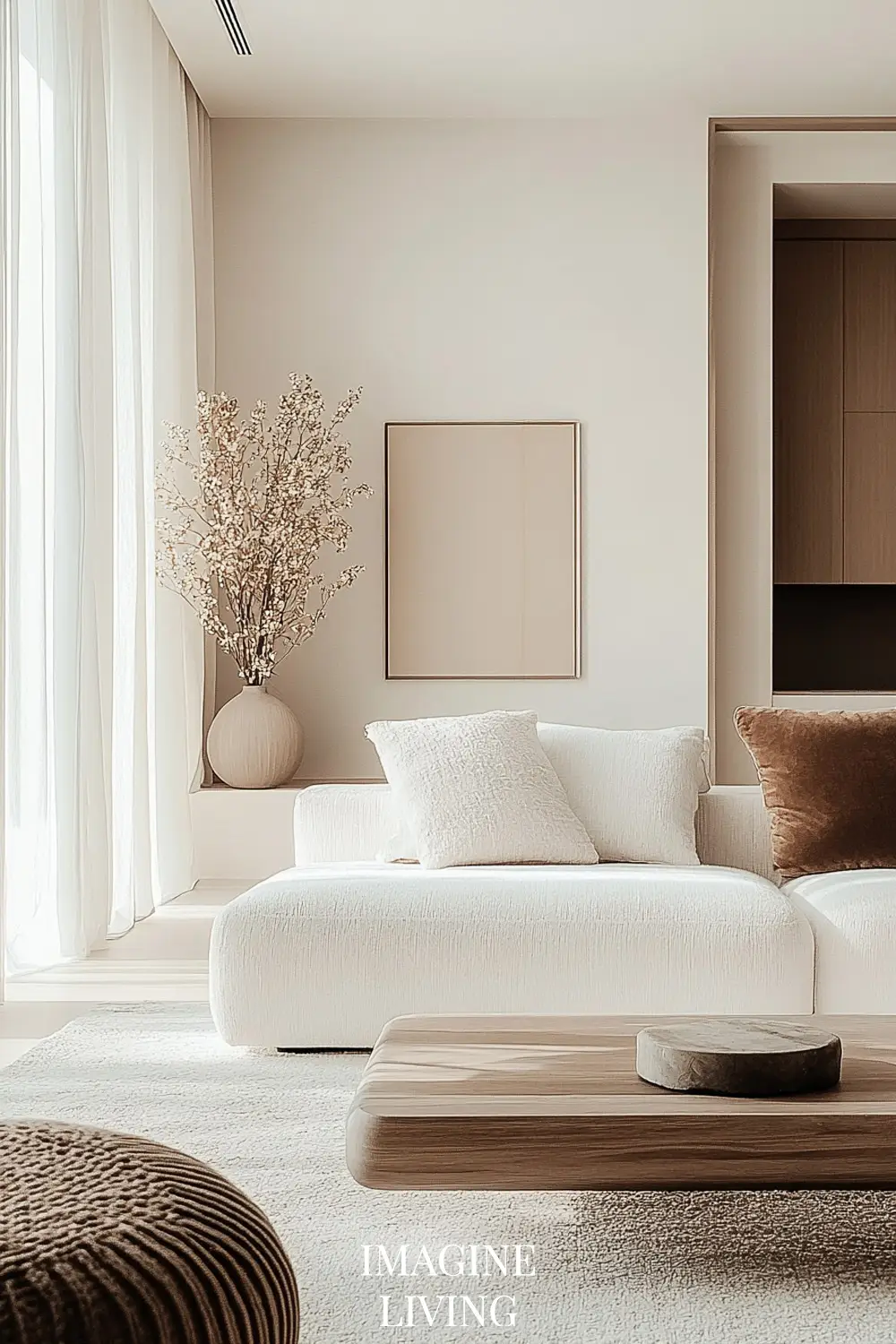
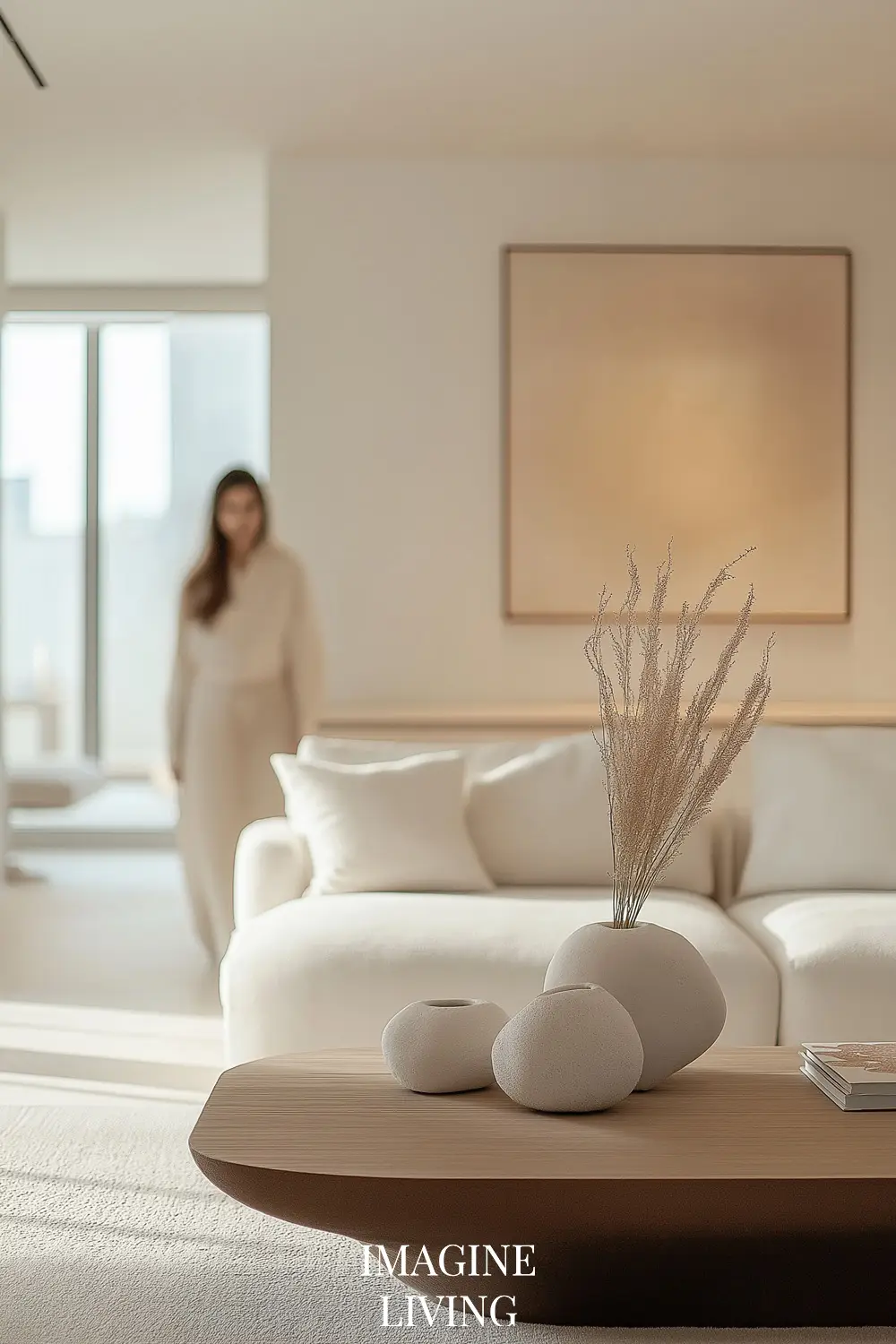

4. Art Curation in Modern Organic Spaces
Art plays a huge role in emotional engagement and trend-forward living rooms, especially in 2025 where handmade and tactile visuals are surging.
What to include:
- Prioritize oversized art with texture—think raw canvas, sculptural reliefs, or abstract neutrals.
- Mix media: clay wall hangings, organic line drawings, framed textile fragments.
- Keep colors subtle—blushes, creams, graphite—but allow one bold organic shape or brushstroke to catch the eye.
Tip:
Hang fewer, larger pieces rather than gallery walls. Let the space breathe and create calm through scale.
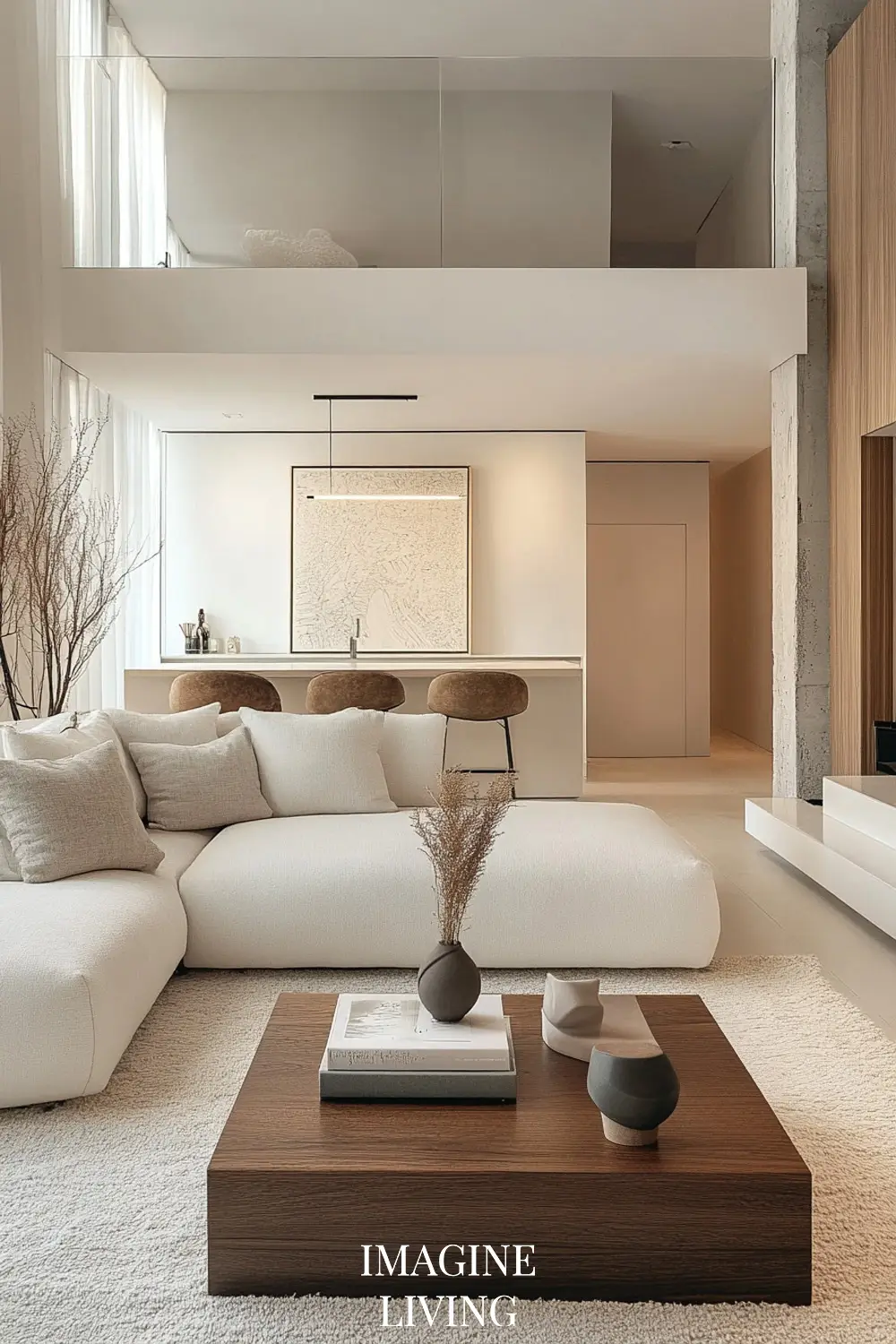

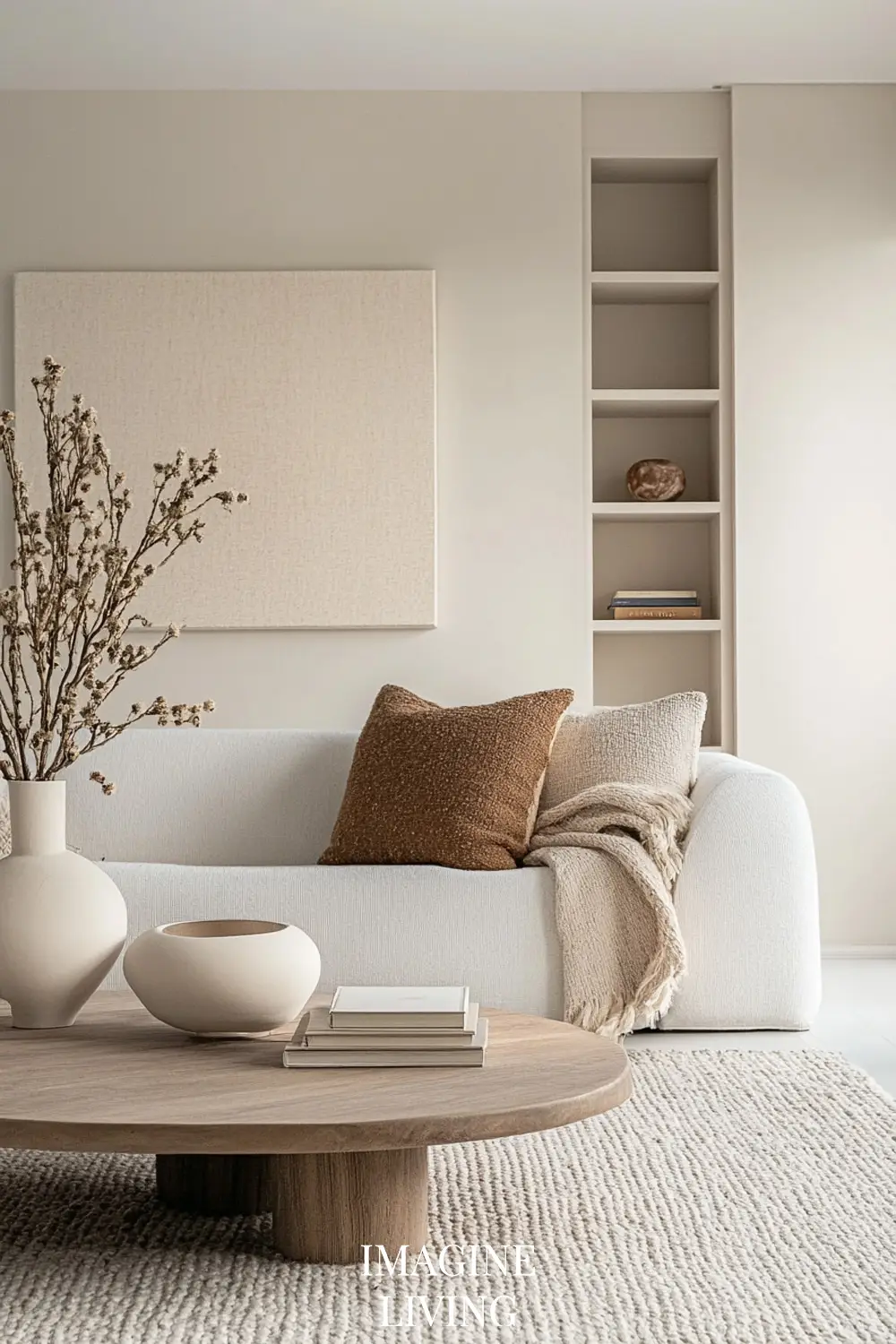
5. Texture Layering Ideas for Depth and Warmth
Modern Organic interiors rely on texture to create visual interest in a minimal palette. Without bold colors or heavy patterns, layering materials is what brings soul into the space.
Think of texture as a quiet conversation between objects: soft bouclé next to matte ceramic, warm wood beside cool linen, nubby rugs layered beneath smooth coffee tables. The secret is pairing contrasts—coarse and refined, plush and solid, natural and polished.
Where to use layering:
- Sofas and Cushions: Mix linen pillows with a few in bouclé or soft wool.
- Rugs: Start with a flat-weave jute or sisal base, then layer a smaller wool or shag rug on top.
- Throws and Upholstery: Use gauzy cotton throws or wool knits over smooth sofas.
- Accessories: Combine matte ceramics, raw wood trays, woven baskets, and brushed metals on open shelves or tables.
Tip:
Stick to 3–4 textures max per space, and repeat them subtly in different ways for cohesion (e.g., boucle pillow, boucle stool seat). Layering is about quiet richness—not clutter.

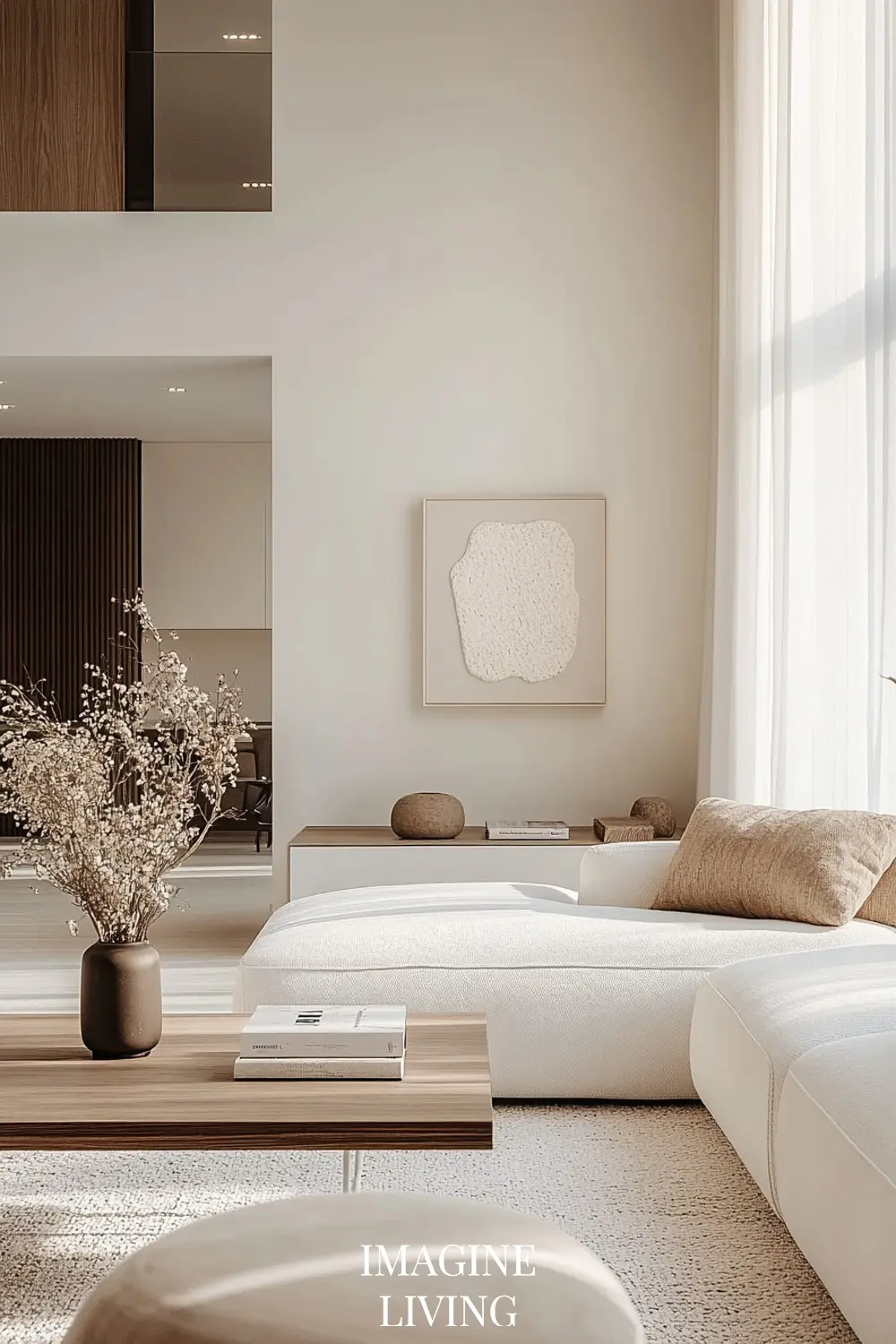
6. Organic Decor Compositions
Accessories in this style are always intentional. Asymmetry, sculptural balance, and negative space keep arrangements relaxed but refined.
Tip:
Style in odd numbers. Group objects of different heights and shapes, like a stone vase, small bowl, and branch.
Leave breathing room—space between objects creates calm.
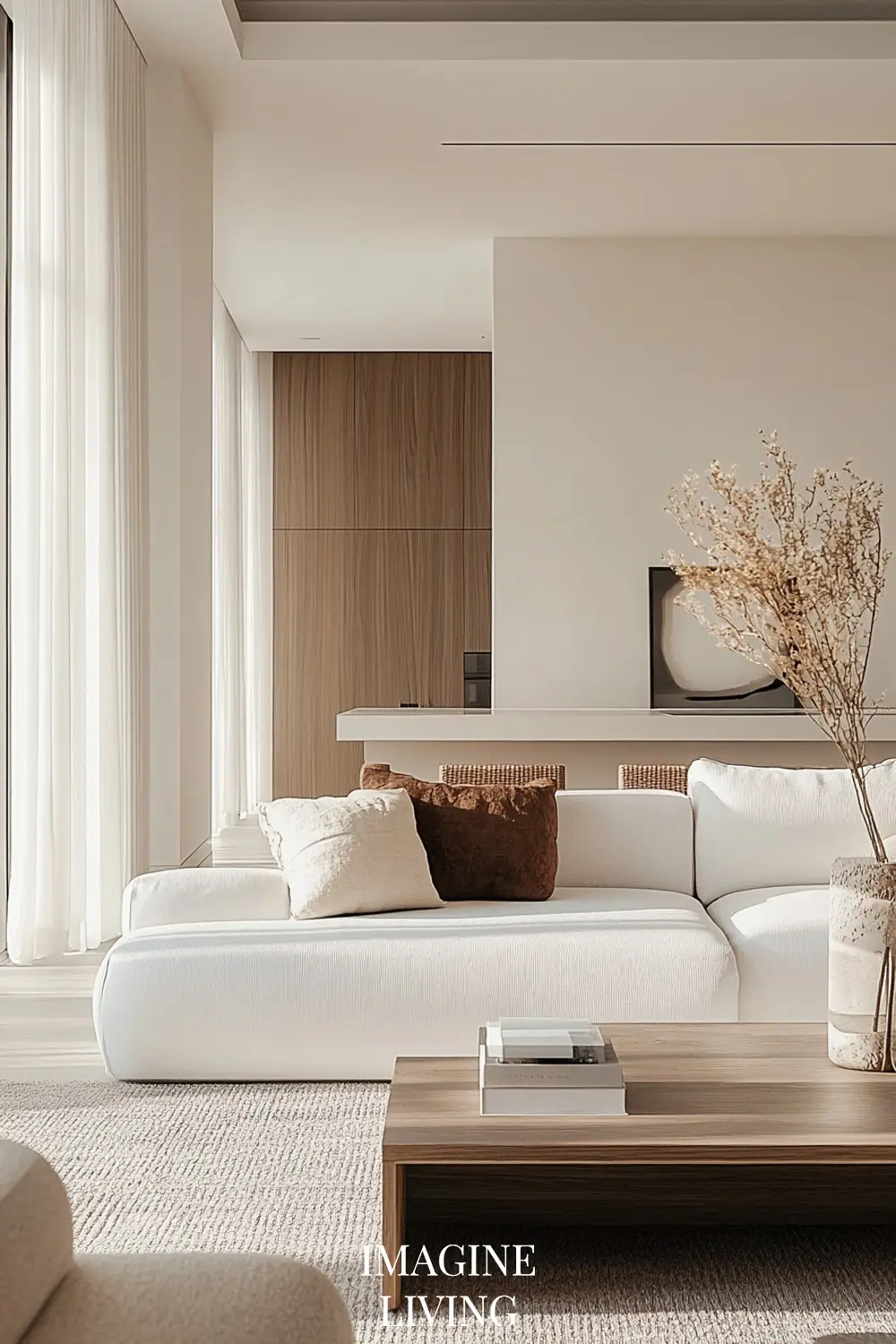
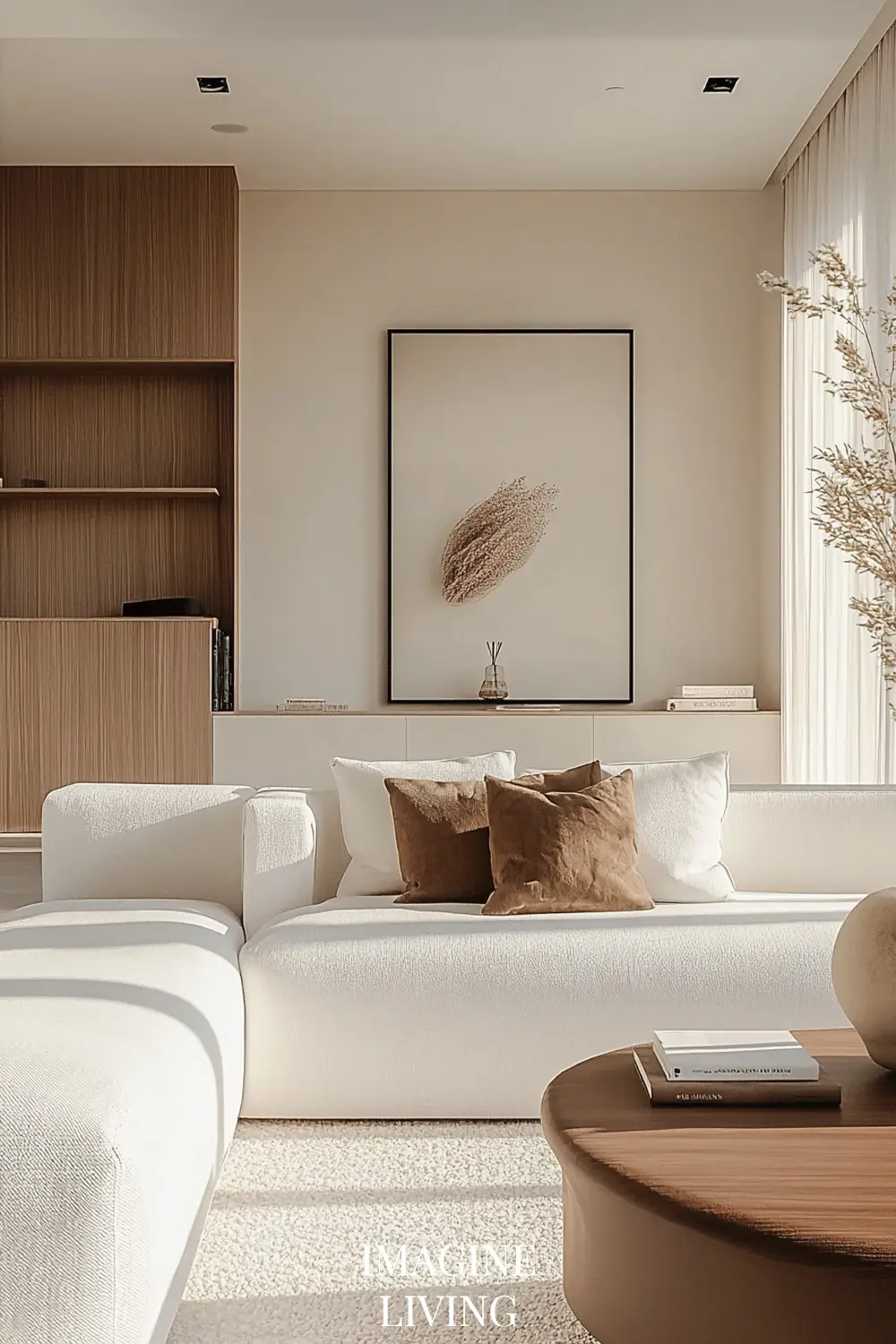
7. Furniture that Feels Grounded
Modern Organic interiors feature low-slung, deep sofas and lounge-ready pieces that invite you to stay. They should feel weighty but never heavy—anchoring the room with softness.
Tip:
Look for cloud-like upholstery and solid wood frames.
Choose pieces that blend curves and geometry—like a rounded back on a square-based sofa.



Mistakes to Avoid When Designing Modern Organic
1. Over-accessorizing
This style thrives on restraint. Too many accents—even in neutral colors—can overwhelm the serenity.
Tip:
Edit often. Let select objects breathe and shine.
Treat your home like a curated gallery, not a display shelf.
2. Forgetting Function
Modern Organic is meant to be lived in. If beauty gets in the way of comfort or utility, it’s not aligned with the essence of the style.
Tip: Balance form and function. Make sure seating is inviting, surfaces usable, and materials durable.
Invest in pieces that bring joy and practicality, like an artisan coffee table with hidden storage.
3. Ignoring Natural Light
Without honoring natural light, the palette and materials can feel flat. This style needs daylight to fully express its warmth and texture.
Tip:
Use light-filtering curtains and avoid heavy drapery.
Position mirrors or reflective ceramics to bounce natural light into darker corners.
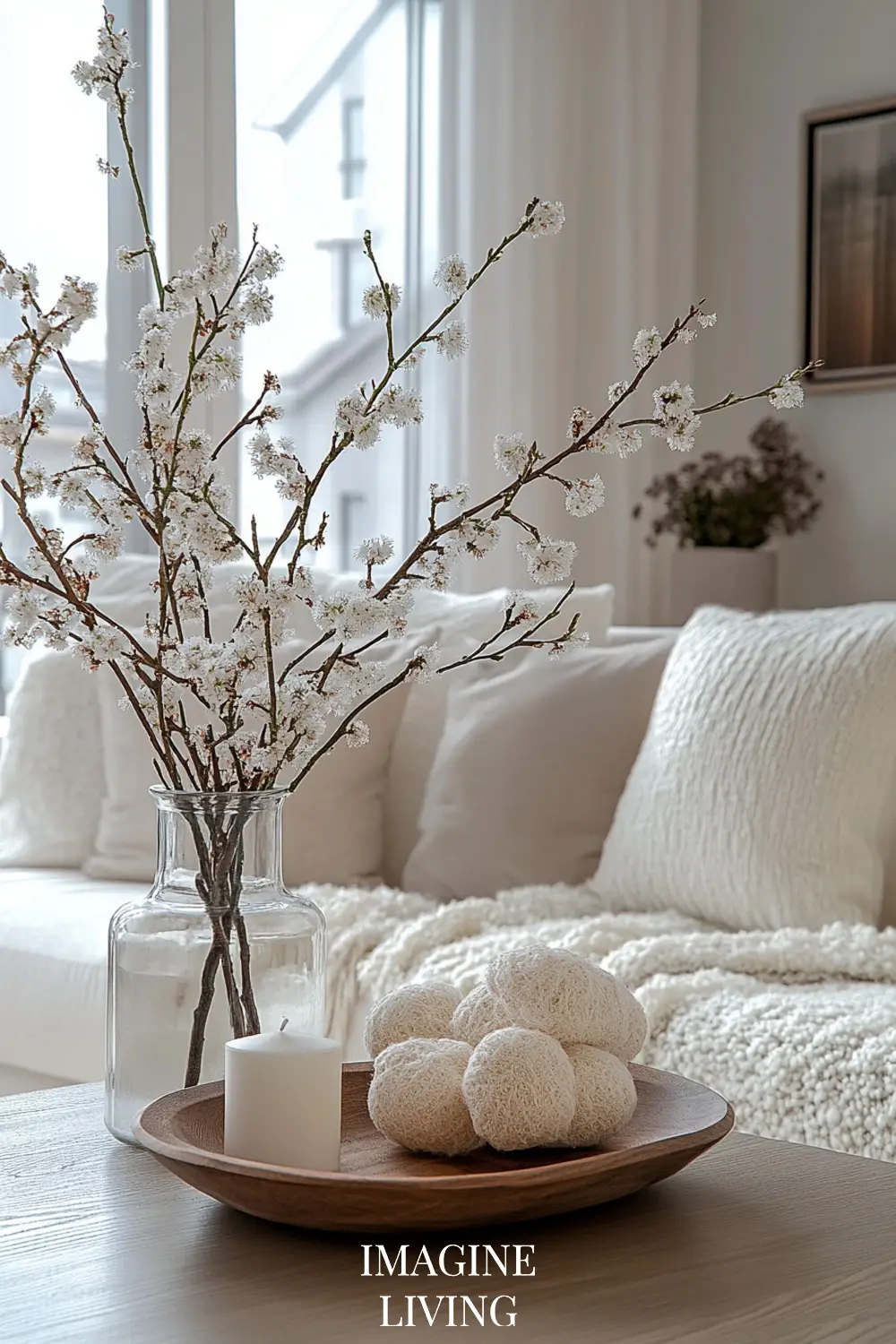
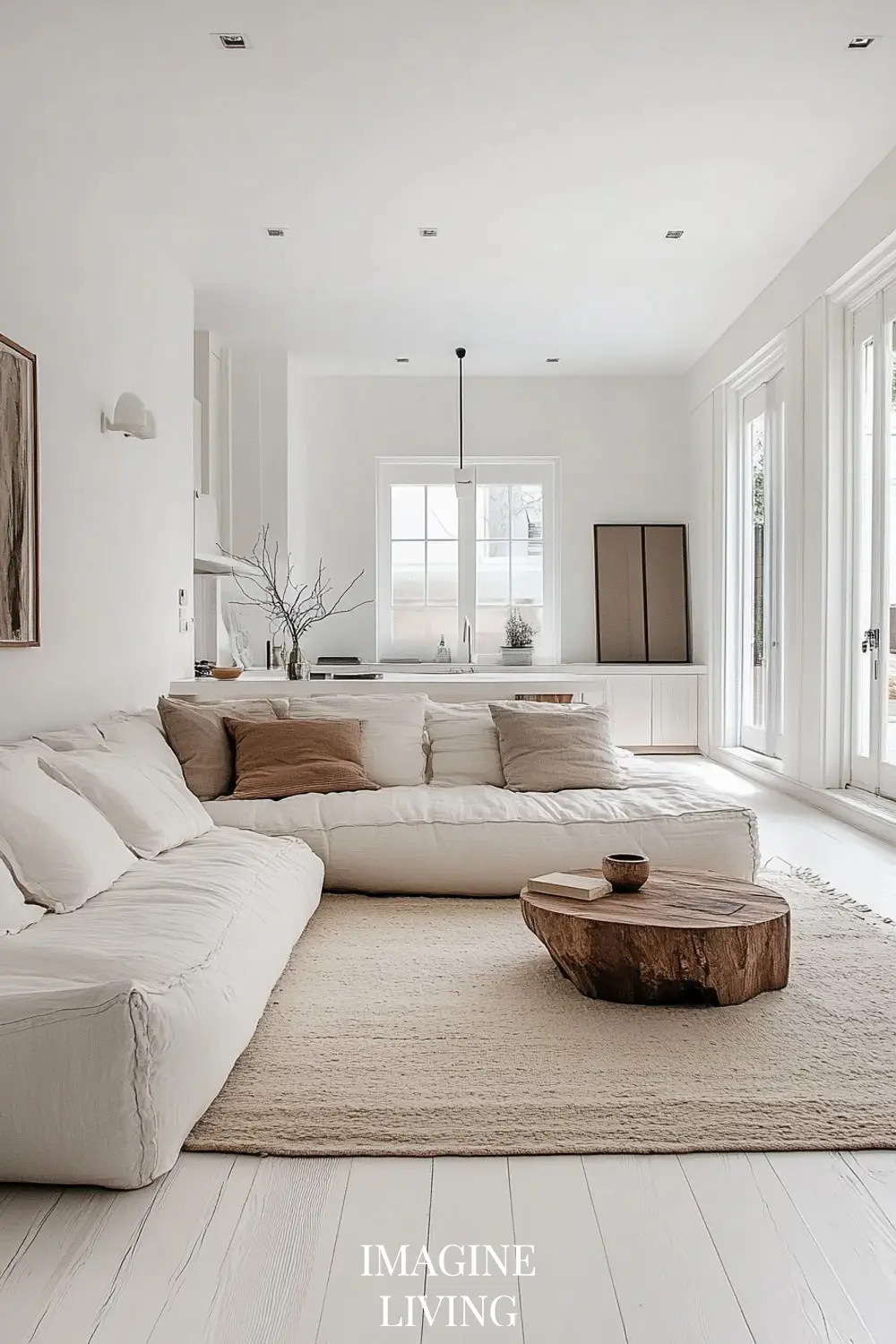
Final Thoughts: A Living Room That Breathes
In Part 2, we’ve uncovered even more of what makes Modern Organic design such a soulful and enduring trend. It’s not about perfection—it’s about softness, balance, and creating a space that feels like a deep exhale. From the curve of a sofa to the way sunlight dances across woven textures, every detail matters—but never feels forced.
Let your space evolve slowly. Choose pieces that feel good in your hands, colors that soothe your eye, and light that invites you to stay a little longer. This is your home’s heartbeat—calm, effortless, and full of quiet beauty.






